
Admin
-
Posts
7,449 -
Joined
-
Last visited
Content Type
Profiles
Forums
Events
Store
Gallery
Community Map
Posts posted by Admin
-
-
Hello Mac1,
Welcome to The Motorbike forum. Please feel free to browse around and get to know the others. If you have any questions please don't hesitate to ask.
Why not tell us a bit about yourself too.
-
Hello OliverE,
Welcome to The Motorbike forum. Please feel free to browse around and get to know the others. If you have any questions please don't hesitate to ask.
Why not tell us a bit about yourself too.
-
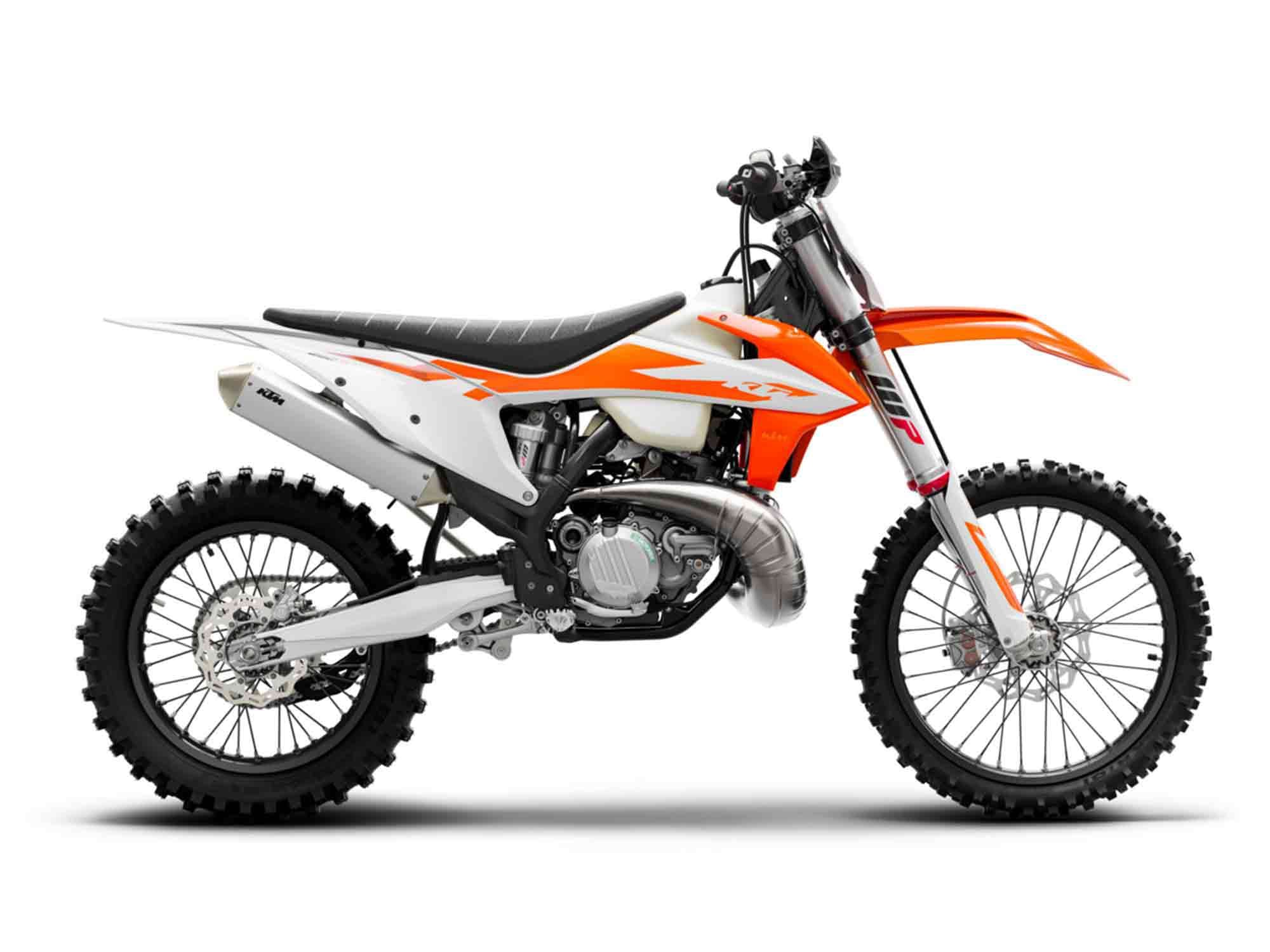
2020 KTM 250 XC TPI (KTM/) The 250 XC TPI is another two-stroke dirt bike in the KTM lineup, now equipped with transfer port injection, which improves fuel efficiency, reduces exhaust emissions, and removes the need for rejetting a carburetor and premixing fuel.The TPI system on the 250 XC TPI is the same as what is used on the 300 XC-W TPI and 250 XC-W TPI enduro bikes, Dirt Rider covered. The 250 XC TPI off-road racer works its way around the track with a 250cc engine that is equipped with a new ambient air pressure sensor that aids in providing a smooth, crisp-running operation at any elevation.
2020 KTM 250 XC TPI Reviews, Comparisons, And Competition
The KTM 300 XC TPI, Husqvarna TX 300i, and GasGas EX 300 are three other TPI-equipped two-stroke options to consider if you don’t mind an extra 50cc of displacement. If you’re set on a 250cc engine for your two-stroke cross-country machine, the Yamaha YZ250X is another model on the market.
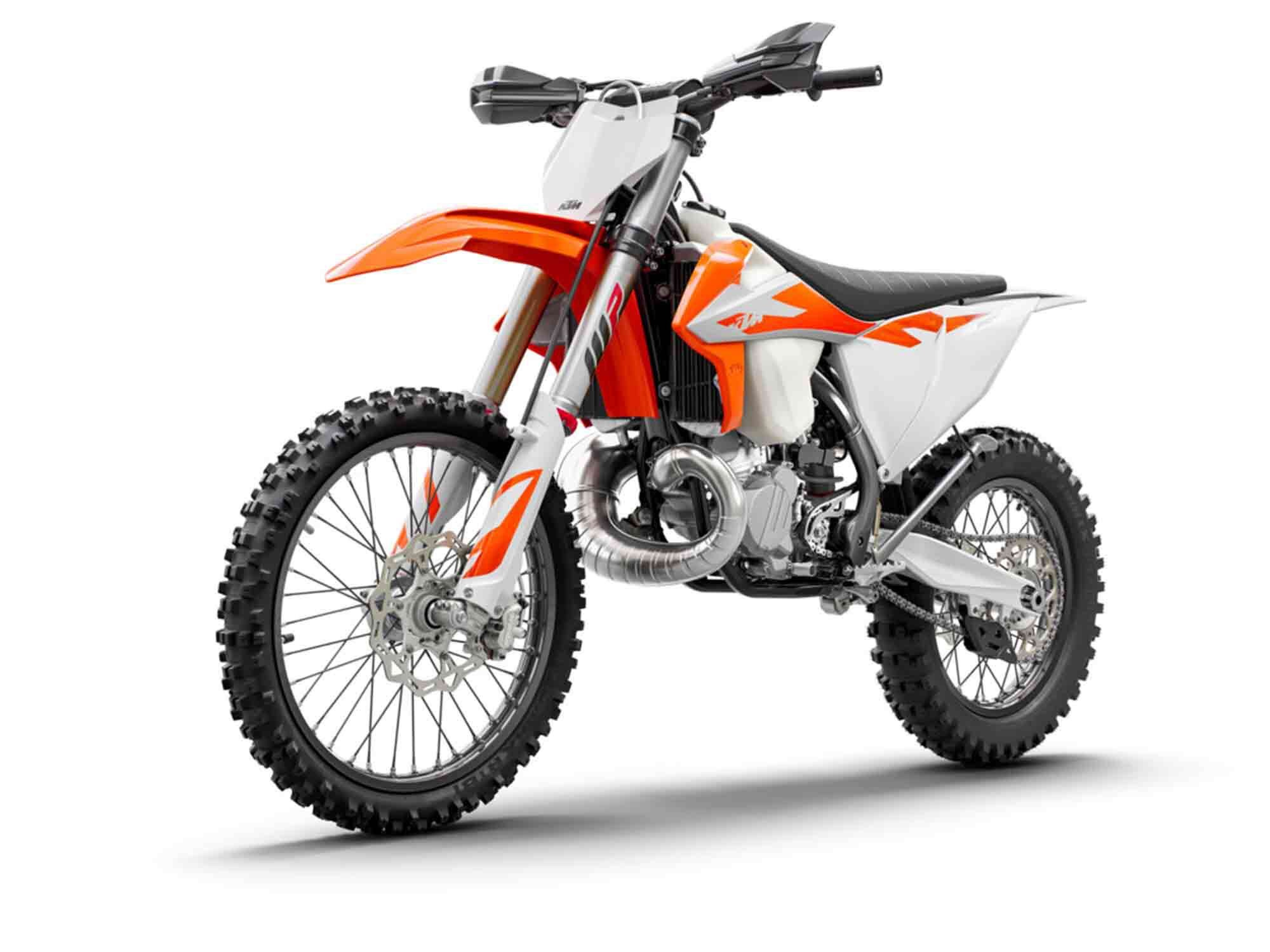
2020 KTM 250 XC TPI (KTM/) KTM 250 XC TPI Updates For 2020
Plentiful updates are seen on the 250 XC TPI. For starters, there’s the addition of transfer port injection. The model also sees a new ambient air pressure sensor, exhaust system, and revised WP Xact suspension. The model is topped off with new graphics.
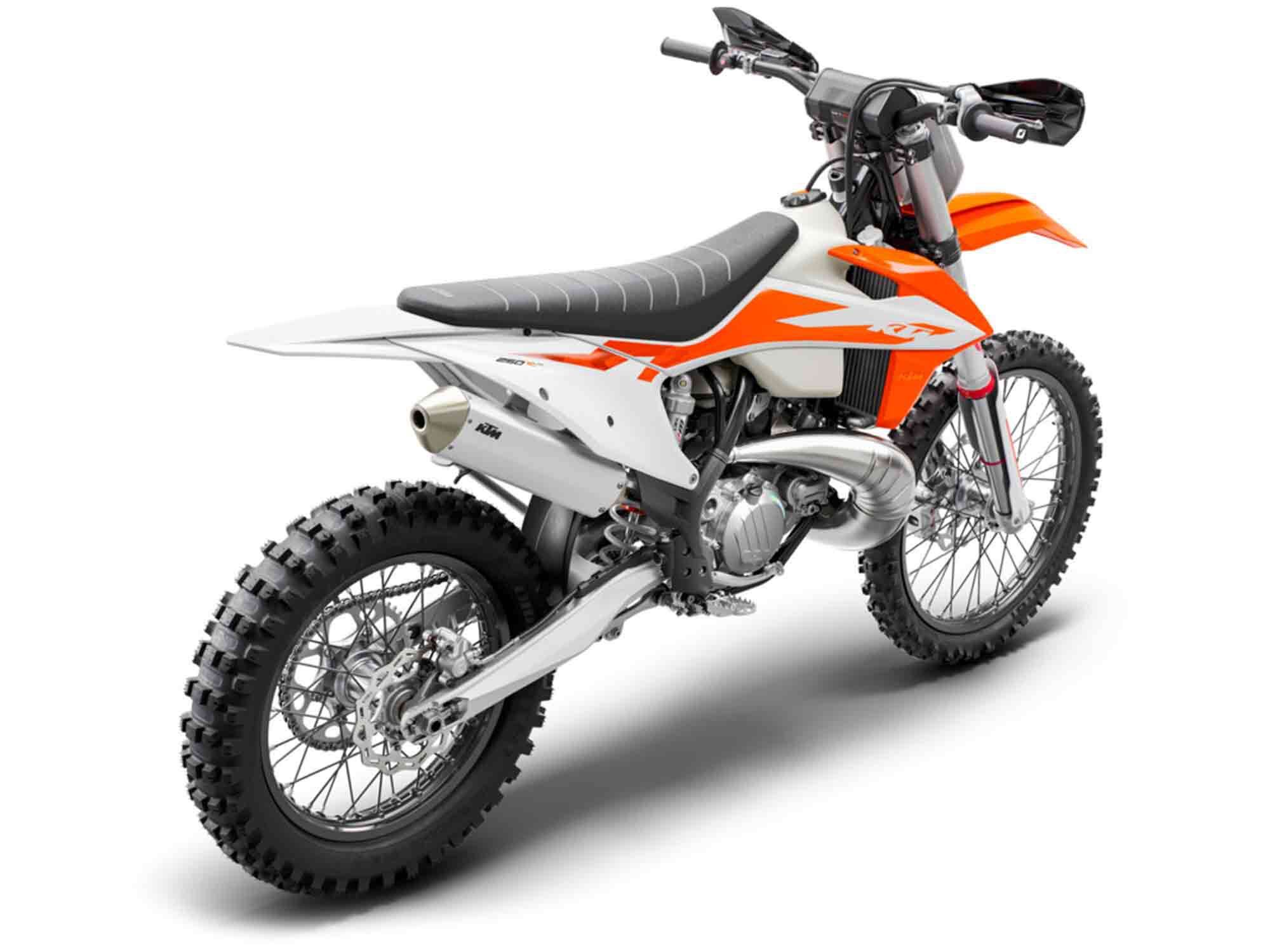
2020 KTM 250 XC TPI (KTM/) 2020 KTM 250 XC TPI Claimed Specifications
Price: $9,799 Engine: Liquid-cooled single-cylinder two-stroke Displacement: 249cc Bore x Stroke: 66.4 x 72.0mm Horsepower: N/A Torque: N/A Transmission: 6-speed Final Drive: Chain Seat Height: 37.4 in. Rake: 26.1° Trail: N/A Front Suspension: 48mm inverted fork, fully adjustable; 12.2-in. travel Rear Suspension: Fully adjustable; 11.8-in. travel Front Tire: 90/90-21 Rear Tire: 110/100-18 Wheelbase: 58.5 in. Fuel Capacity: 2.3 gal. Dry Weight: 223 lb. -
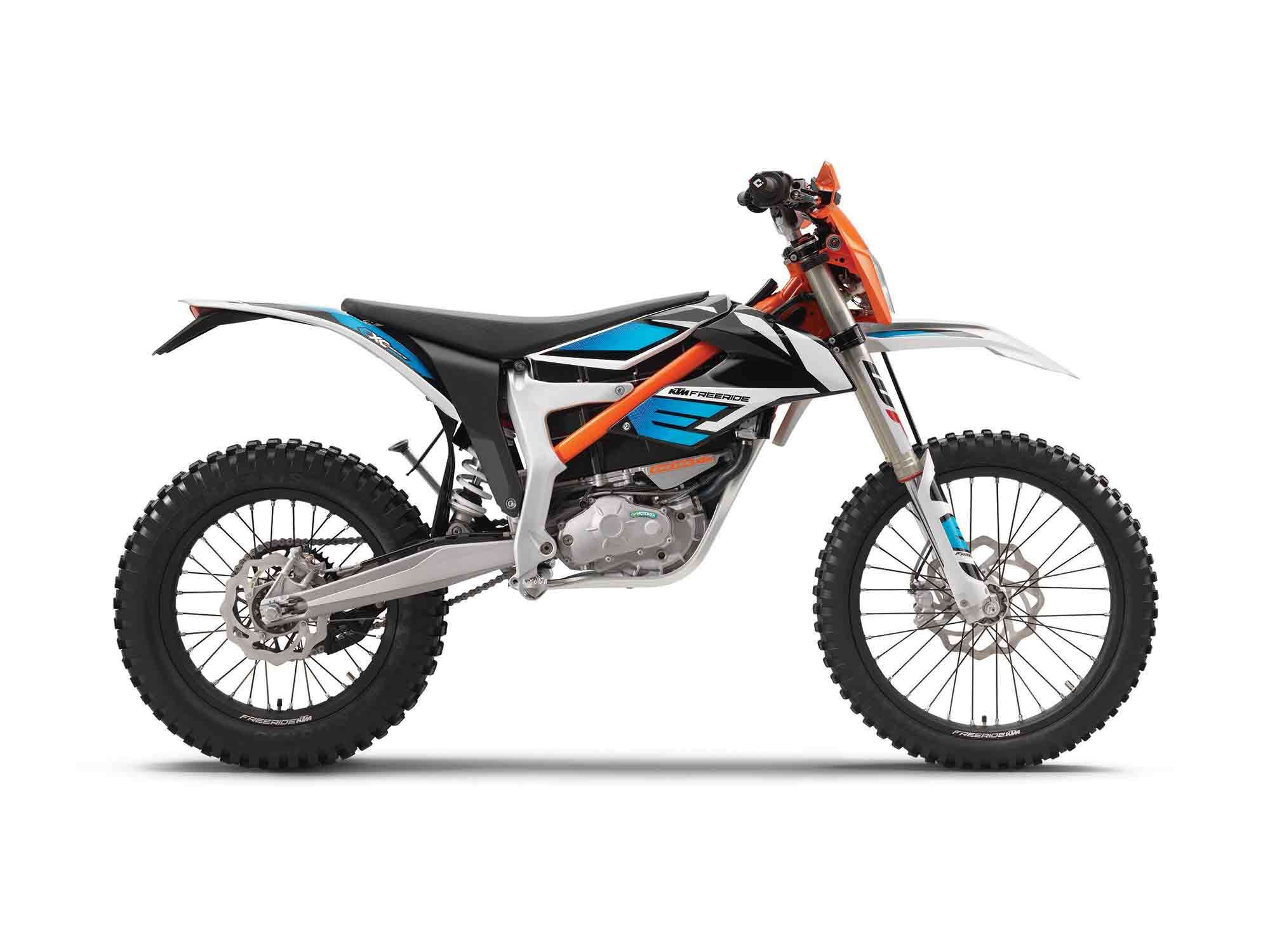
2020 KTM Freeride E-XC (KTM/) Although available in other markets in 2014, the KTM Freeride E-XC made its US introduction in 2017 followed by a multitude of updates in 2018. Over the past couple of years the e-machine has not seen any additional changes, however, it remains a midsize electric dirt bike that both beginners and pros can enjoy. Beginners will benefit from its lack of a clutch and gear shift lever, while more experienced riders will enjoy tapping into its electric motor’s claimed peak power of 18 kW. Its 260-volt lithium-ion battery can last for a claimed 1.5 hours (depending on the riding style) while energy recuperates when coasting or braking for added range. Its chassis consists of a composite frame, WP Xplor 43 fork, WP PDS Xplor shock, and long steering head for stability and handling.
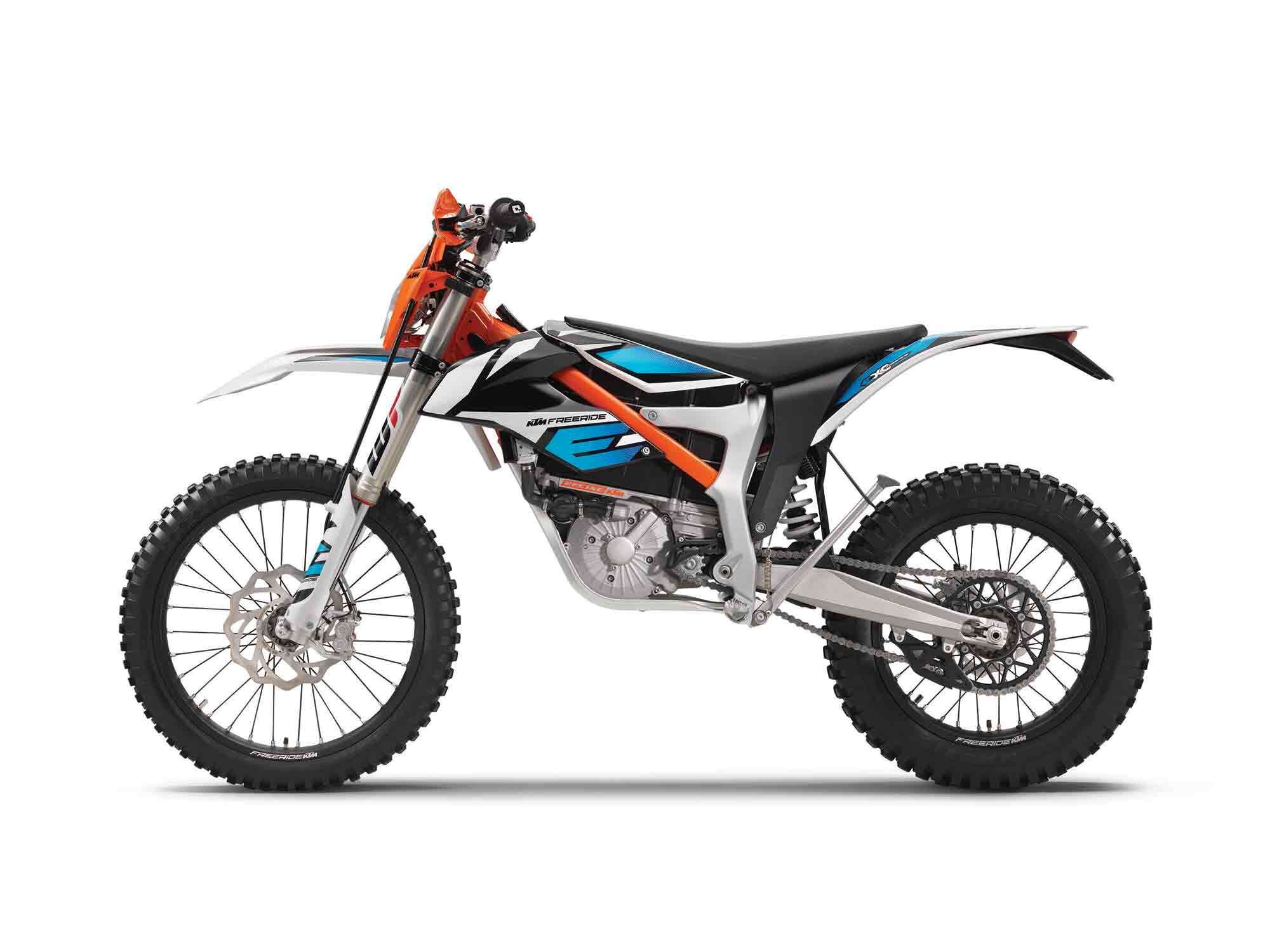
2020 KTM Freeride E-XC (KTM/) 2020 KTM Freeride E-XC Reviews, Comparisons, And Competition
When it made its way to the US in 2017, the KTM Freeride E-XC claimed praise for its tight maneuverability, carrying its 238-pound weight well, and accompaniment to rider skills with its three ride modes.
After the 2018 updates were implemented, which included a new battery, improved suspension and brakes, and additional features, these all added up to “move the bike more toward serious off-roader from playbike.”
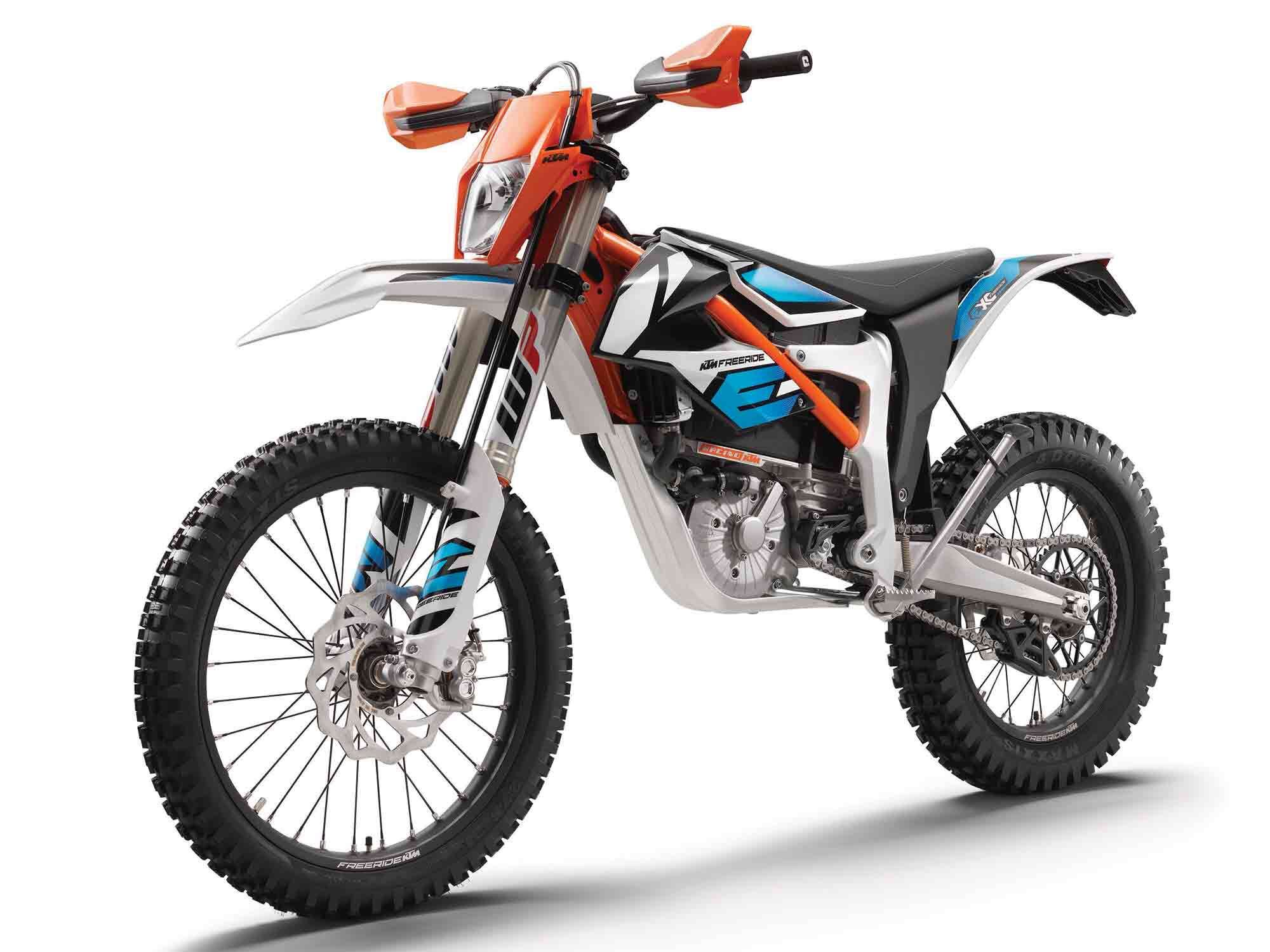
2020 KTM Freeride E-XC (KTM/) KTM Freeride E-XC Updates For 2020
No updates for 2020. It comes at a starting MSRP of $10,499.
2020 KTM Freeride E-XC Claimed Specifications
Price: $10,499 Engine: Liquid-cooled permanent magnet synchronous motor Horsepower: 24.5 hp @ 5,000 rpm Torque: 30.9 lb.-ft. from 0 rpm Transmission: 1-speed Final Drive: Chain Seat Height: 35.8 in. Rake: 23.0° Trail: N/A Front Suspension: 43mm inverted fork, fully adjustable; 9.8-in. travel Rear Suspension: Preload and compression adjustable; 10.2-in. travel Front Tire: 2.75-21 Rear Tire: 4.00-18 Wheelbase: 55.8 in. Capacity: 3,900 Wh Wet Weight: 245 lb. -
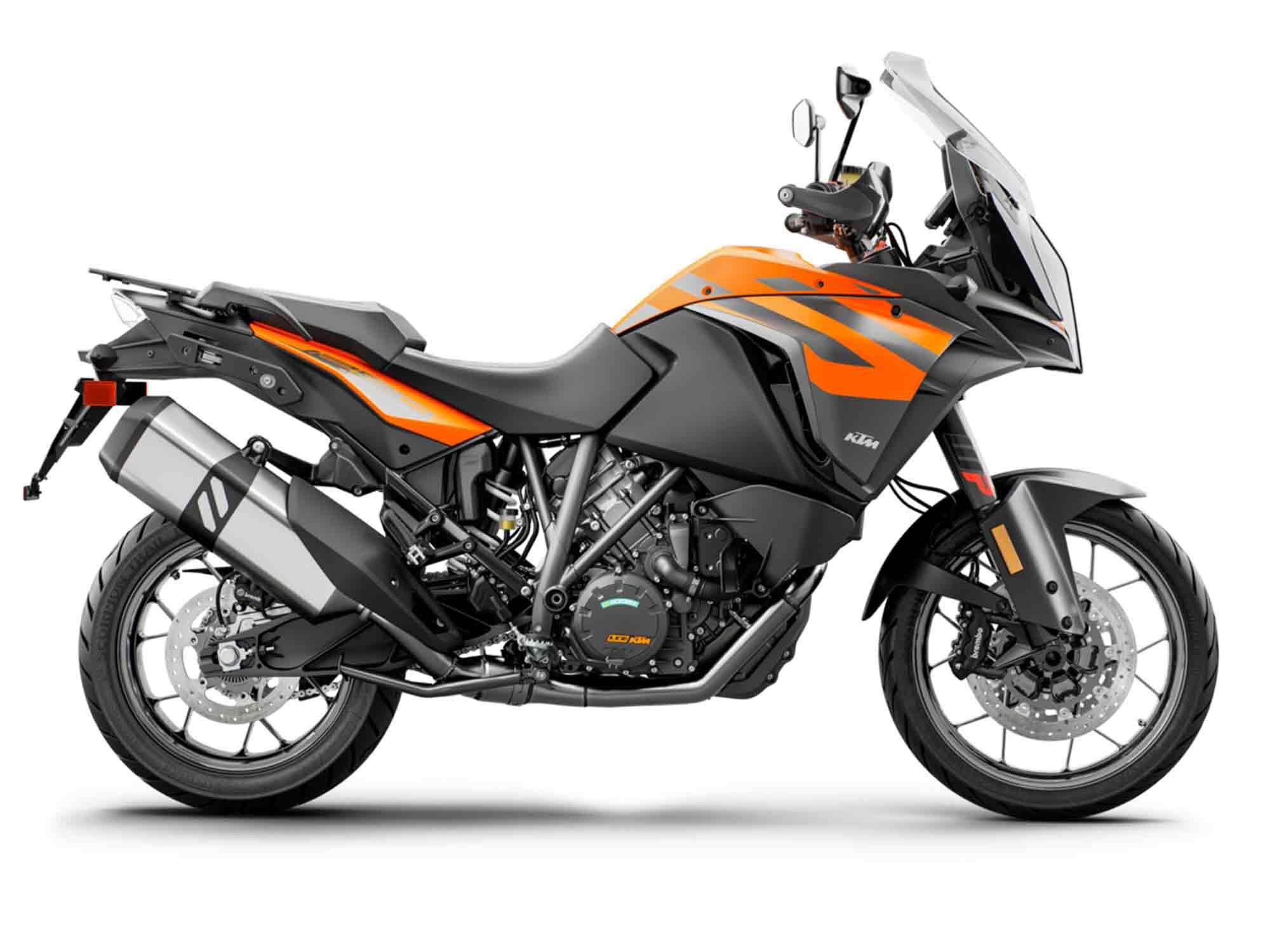
2020 KTM 1290 Super Adventure S (KTM/) The KTM 1290 Super Adventure S is built as a serious road-going adventure machine with moderate off-road capability. With a claimed 160 hp cranking out of the 1,301cc V-twin and plenty of rider aids, the KTM 1290 Super Adventure S allows the rider to push the limits both on road and off. Tech includes semi-active WP suspension, motorcycle stability control, cornering ABS, lean-angle-sensitive traction control, and four ride modes. While these will help you push the boundaries of the motorcycle, the standard KTM My Ride offers GPS navigation so you can push the map’s boundaries as well. This machine is for the experienced adventure seeker who wants a do-it-all machine as their steed.
Looking for more off-road potential from KTM? The well-equipped, long-travel 1290 Adventure R might suit your style.
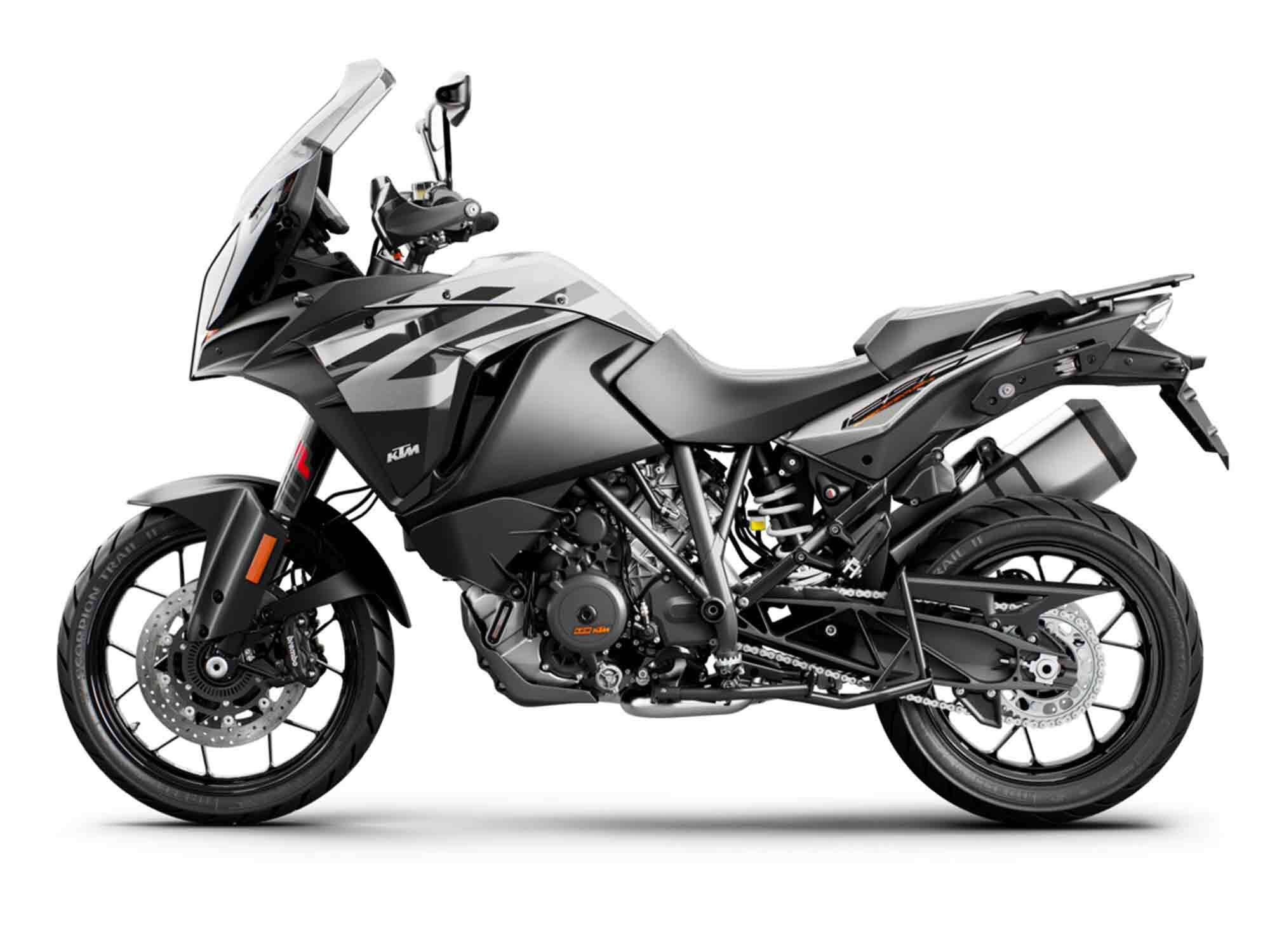
2020 KTM 1290 Super Adventure S (KTM/) 2020 KTM 1290 Super Adventure S Reviews, Comparisons, And Competition
When the standard model 1290 Super Adventure won Cycle World’s Ten Best in 2015, we claimed it was a “long-distance, earth-conquering traveler, capable on pavement, dirt, gravel, and mud. Great every day too.”
Competition includes the Ducati Multistrada 1260/S ($18,995), BMW R 1250 GS ($17,895), and Honda Africa Twin ($14,399).
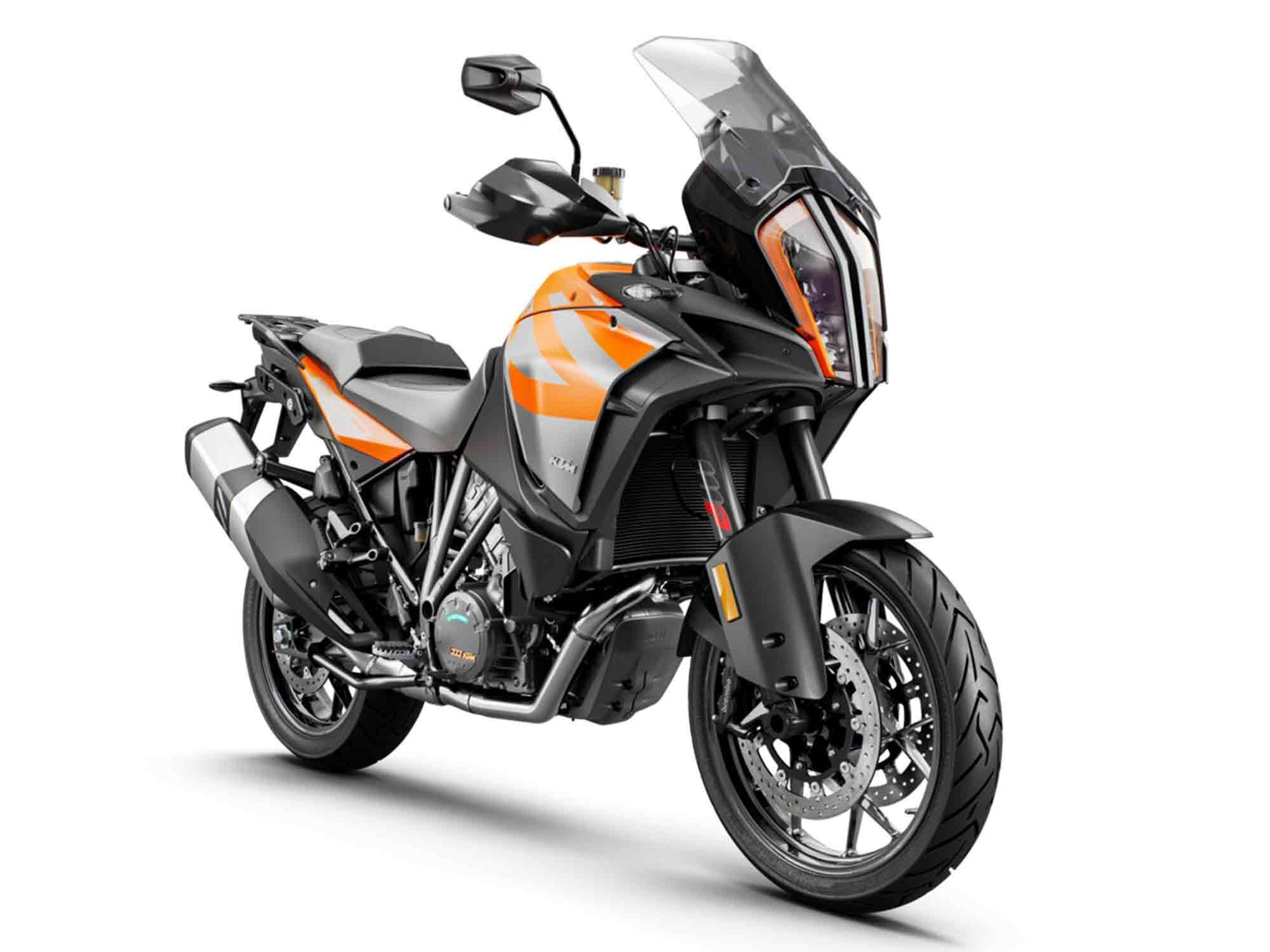
2020 KTM 1290 Super Adventure S (KTM/) KTM 1290 Super Adventure S Updates For 2020
No major changes were announced for 2020. The model comes in orange or silver at a starting MSRP of $18,599.
2020 KTM 1290 Super Adventure S Claimed Specifications
Price: $18,599 Engine: Liquid-cooled LC8 V-twin Displacement: 1,301cc Bore x Stroke: 108.0 x 71.0mm Horsepower: 160.0 hp @ 8,750 rpm Torque: 103.3 lb.-ft. @ 6,750 rpm Transmission: 6-speed Final Drive: Chain Seat Height: 33.9 in./34.4 in. Rake: 26.0° Trail: 4.7 in. Front Suspension: 48mm inverted fork, semi-active; 7.9-in. travel Rear Suspension: Preload adjustable; 7.9-in. travel Front Tire: 120/70ZR-19 Rear Tire: 170/60ZR-17 Wheelbase: 61.4 in. Fuel Capacity: 6.1 gal. w/ 0.9 gal. in reserve Dry Weight: 474 lb. -
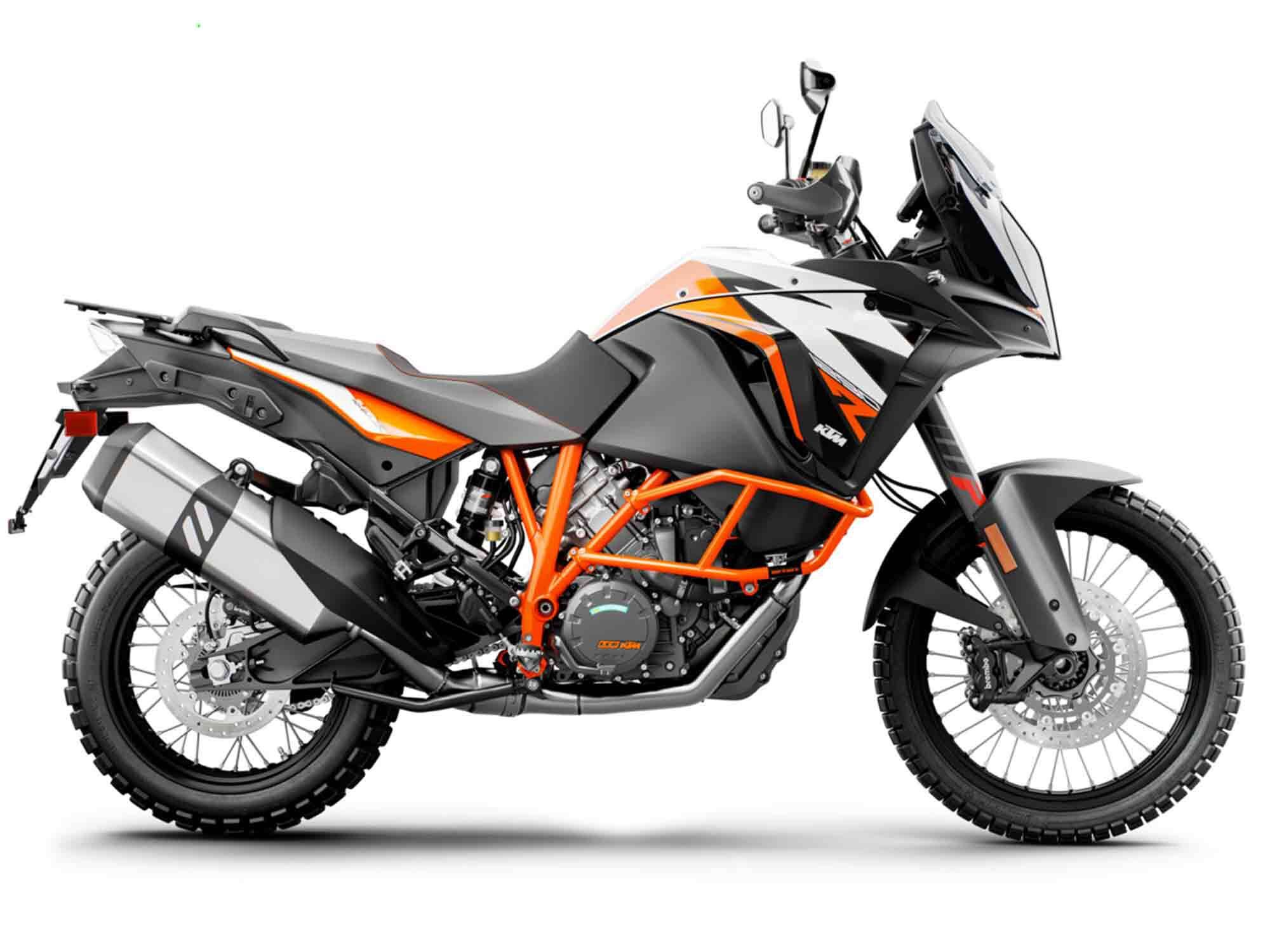
2020 KTM 1290 Super Adventure R (KTM/) KTM does off-road performance. Case in point, the 2020 KTM 1290 Super Adventure R. With Dakar-inspired styling, longer suspension travel than the road-going S model, crash guards, and spoked wheels, the R is geared for any challenging expedition. It’s equipped with the same 75-degree 1,301cc V-twin that claims 160 hp and lean-angle-sensitive ABS and traction control, four ride modes, cruise control, a 6.5-inch TFT display, KTM My Ride package with navigation capability.
2020 KTM 1290 Super Adventure R Reviews, Comparisons, And Competition
When our tester rode the 2017 1290 Super Adventure R he concluded that the ADV machine “is a lot of motorcycle, yes, but it’s a lot of very capable motorcycle, and just as willing to go off the beaten path as you are.”
Competition includes dirt-ready models like Ducati Multistrada 1260 Enduro, BMW R 1250 GS Adventure, and Honda Africa Twin.
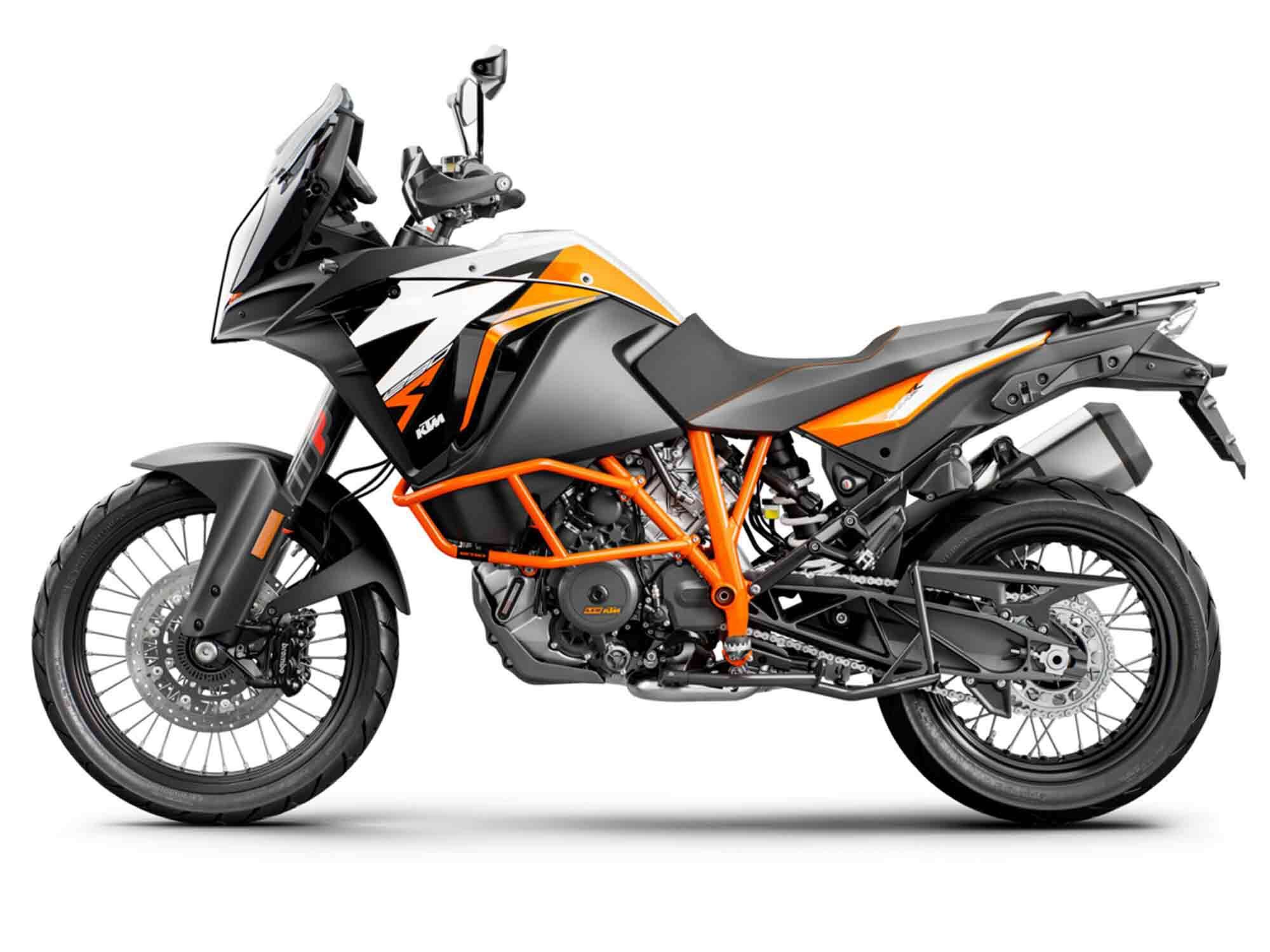
2020 KTM 1290 Super Adventure R (KTM/) KTM 1290 Super Adventure R Updates For 2020
No major changes were announced. The model is available in one graphic/color scheme for a starting MSRP of $18,599.
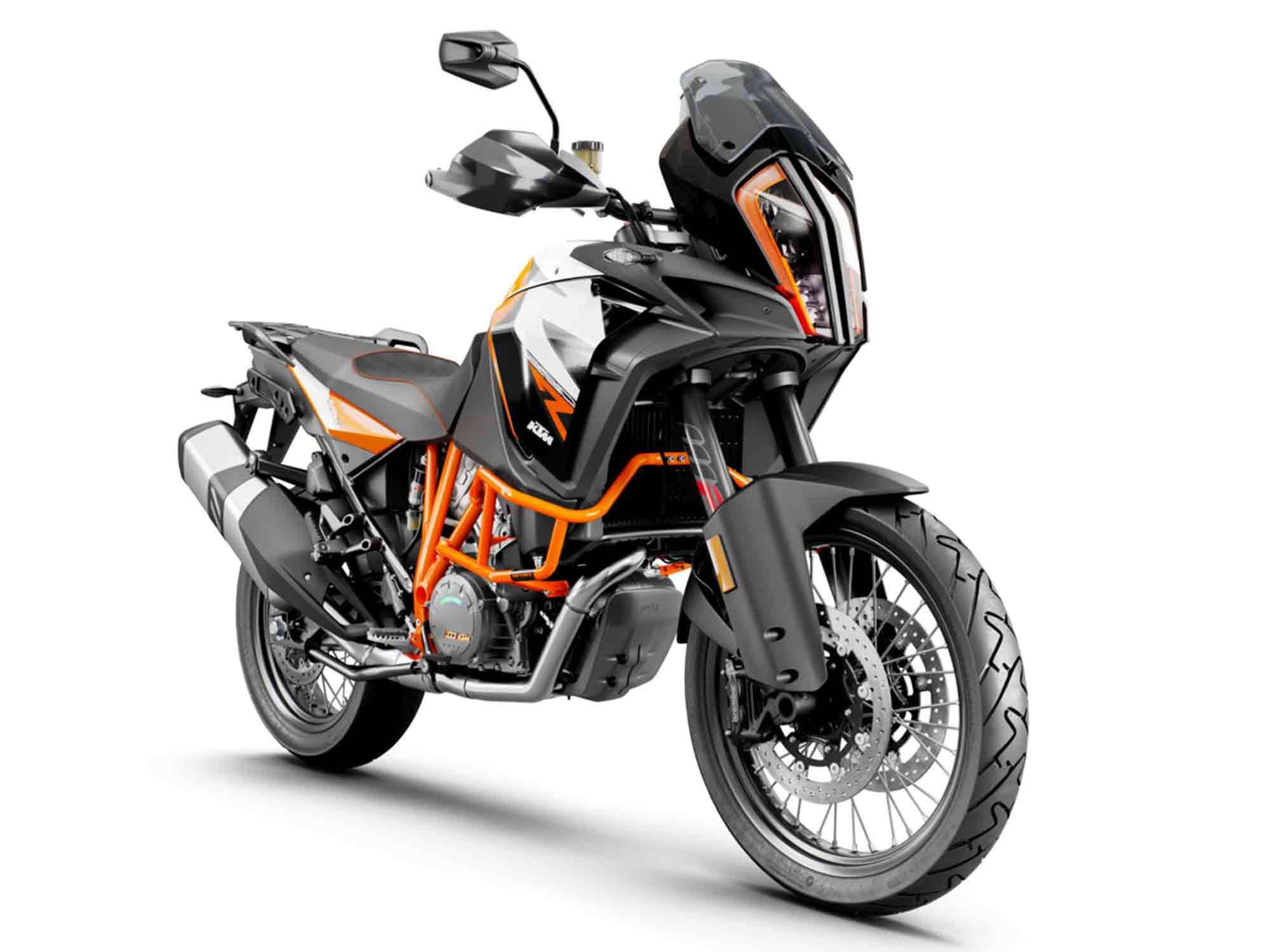
2020 KTM 1290 Super Adventure R (KTM/) 2020 KTM 1290 Super Adventure R Claimed Specifications
Price: $18,599 Engine: Liquid-cooled LC8 V-twin Displacement: 1,301cc Bore x Stroke: 108.0 x 71.0mm Horsepower: 160.0 hp @ 8,750 rpm Torque: 103.3 lb.-ft. @ 6,750 rpm Transmission: 6-speed Final Drive: Chain Seat Height: 35.0 in. Rake: 26.0° Trail: 4.8 in. Front Suspension: 48mm fork, fully adjustable; 8.7-in. travel Rear Suspension: Fully adjustable; 8.7-in. travel Front Tire: 90/90-21 Rear Tire: 150/70-18 Wheelbase: 62.2 in. Fuel Capacity: 6.1 gal. w/ 0.9 gal. in reserve Dry Weight: 478 lb. -
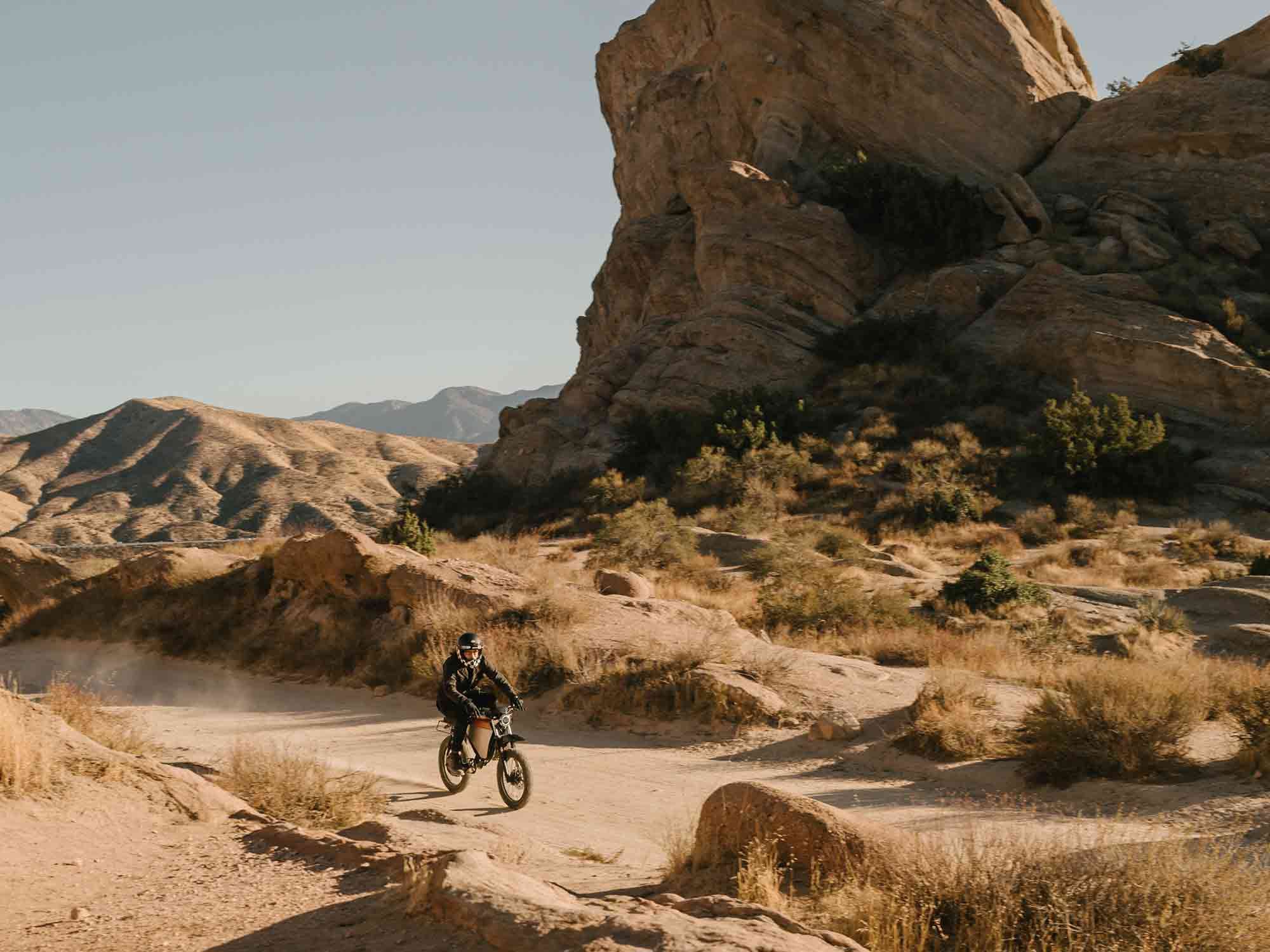
In its unrestricted ride mode, we were able to reach 47 mph on the Onyx RCR. (John Ryan Hebert/) The RCR is an incredibly stylish machine, a little bit ebike and a little bit electric motorcycle, which Onyx claims is capable of reaching speeds of around 60 mph. It has a headlight, taillight/brake light, blinkers, full suspension, and even a digital LCD dash with a speedometer and battery information, but no registered VIN. Having recently moved to Los Angeles, I now see a couple of these wood-clad machines pass my house every week. So what exactly is it? I reached out to Onyx Motorbikes to find out for myself.
The RCR looks like a cross between a Tomos moped and an art school café racer concept. A large steel-tube frame, shrouded in wood and brushed aluminum, cradles the battery. It’s modern and minimal, but with classic motorcycle lines and appeal. It demanded attention everywhere I went without being garish or obnoxious. That styling first attracted me to the bike, the reason I looked it up in the first place. And then, right there on the website, there it is: “75-mile range, 60 mph top speed, 8 horsepower.” Impressive. But too good to be true?

The RCR currently falls into a bit of a gray area when it comes to street legality. (Morgan Gales/) Now living in the heart of Los Angeles’ Los Feliz district, I was planning on using the RCR on road for in-city errands and commuting the 3.7 miles back and forth to my girlfriend’s bakery. When I arrived at Onyx headquarters, the team had prepared a model for me featuring its DRT kit, which costs about $300 and includes a front and rear fender, caged headlight, knobby tires, fork boots, and a cargo rack. It takes the refined café racer styling of the RCR and adds a little bit of utilitarian off-road toughness. When I saw the kit I decided I might have to expand my intended use. But first things first: Unload the bike and test it out.
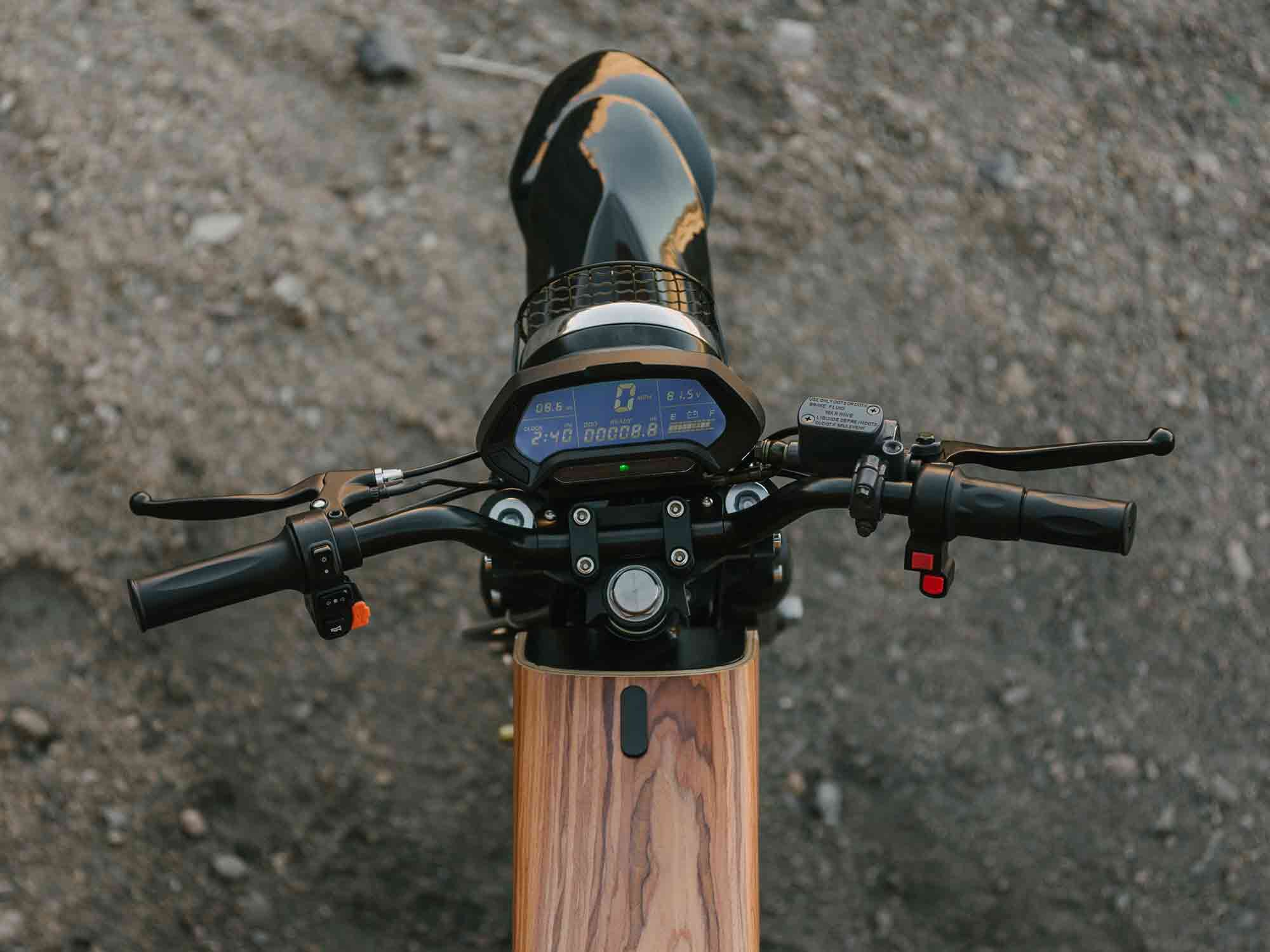
Left-hand controls include blinkers, horn, headlight, and a USB charging port. On the right hand is your throttle, ride mode select toggle, and power switch. The LCD in the middle displays volts, current battery level, mph, time, and odometer. (John Ryan Hebert/) When I first sat on the RCR, its gauge showed the battery at half charge. Seeing as the company claims a 75-mile range in Eco mode, I figured half of the battery was more than enough to get me those few miles home from the bakery, where I had naturally gone to show off this beautiful machine. I was sadly mistaken. Of course, excited as I was to ride this famed “60 mph” ebike-or-moped-or-whatever, I put it in Sport mode and gave the throttle a twist. It pulled forward about a foot and shut off completely.
OK.
I waited a moment and fiddled with the remote, locking, unlocking, trying buttons until eventually the RCR came back on. I tried to take off again; the same thing happened. OK, no Sport mode for me. I put it in Normal mode, launched more slowly with a limited throttle, and headed down the road.
I made it about half a mile until it died on me again and wouldn’t come back on. A call to my contact at Onyx revealed that when the voltage sags too low, the battery will shut off to protect itself. So when the battery is at a less-than-full level, as it then was, it reaches that point more quickly and simply shuts off. The rider must take off the wooden cover and power cycle the battery to get it to turn back on. The cover does not come off smoothly or easily; it takes a key to unlock, followed by some sliding and navigating around the seat. After doing this about 15 times, I walked the 145-pound RCR a couple miles home, uphill, barefoot in the Los Angeles snow.
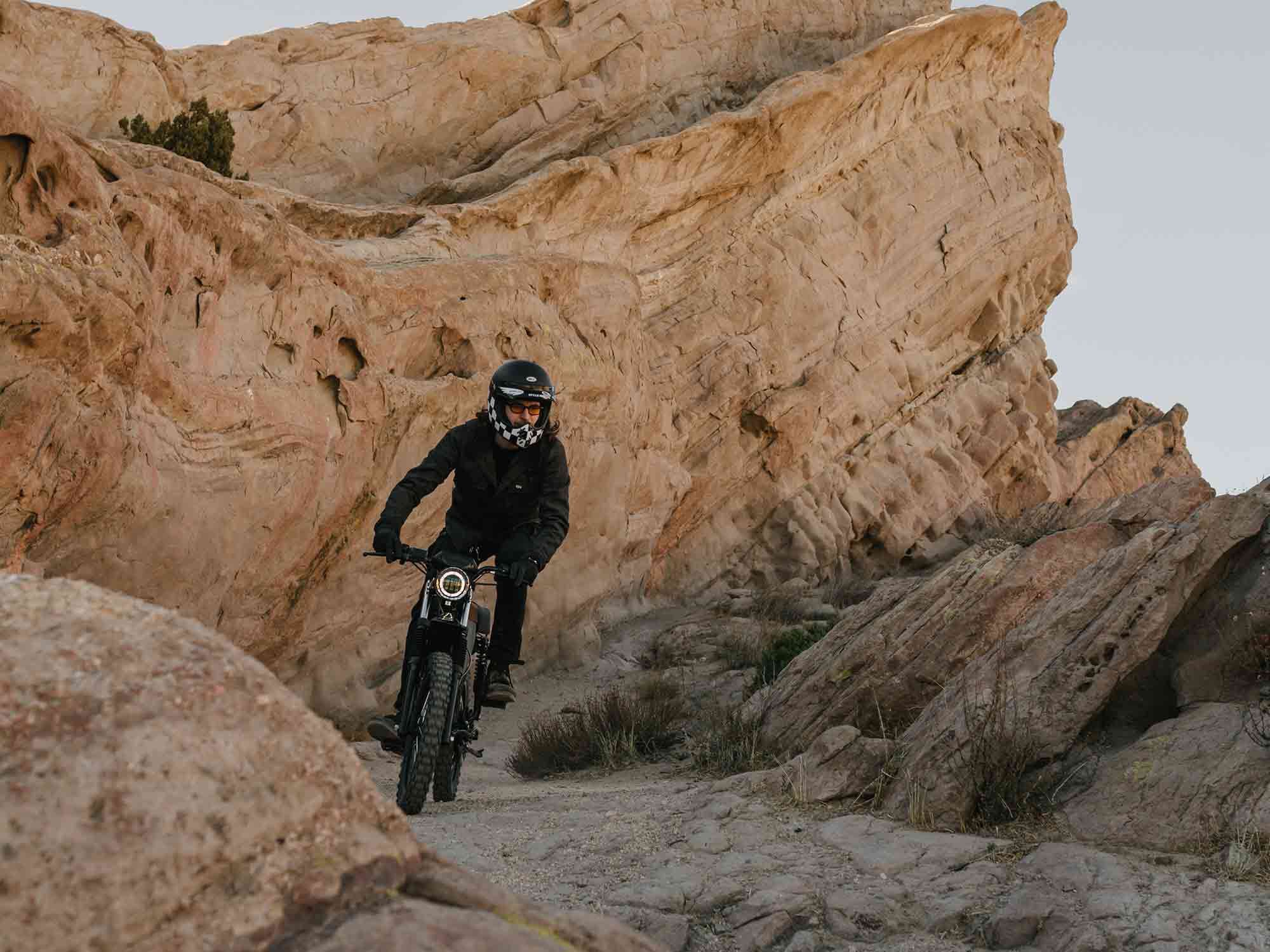
On hard-packed dirt trails and rock, the RCR was an absolute joy to ride. It feels light and maneuverable, easily crossing rough terrain. (John Ryan Hebert/) And so home and on the charger it went. With a normal 110-volt wall plug and the five-amp charger, the RCR took about four hours to charge. The next morning I loaded the bike up and headed to a private off-road area to take some photos and get a more accurate idea of performance with a full charge. I started in Normal mode and, after twisting the throttle, had to double-check to make sure I wasn’t in Sport. It’s fast. It pulls off the line and keeps pulling all the way to the 35 mph limit. The tires grip rocks and dirt well. Honestly, if nobody had told me it was capable of going faster, I would have been perfectly happy riding around under 35 and giggling like a kid. I was ripping around, smiling unabashedly in my helmet and enjoying every minute for the first 4 miles, until I was climbing a hill and the power cut out again. The dash went black. Sport mode be damned. I powered the bike back on and swapped back to Normal. As you are able to swap on the fly while applying throttle, I would only switch to Sport mode when I was already moving at a significant pace so as to not overstress the battery and trigger the safety again.
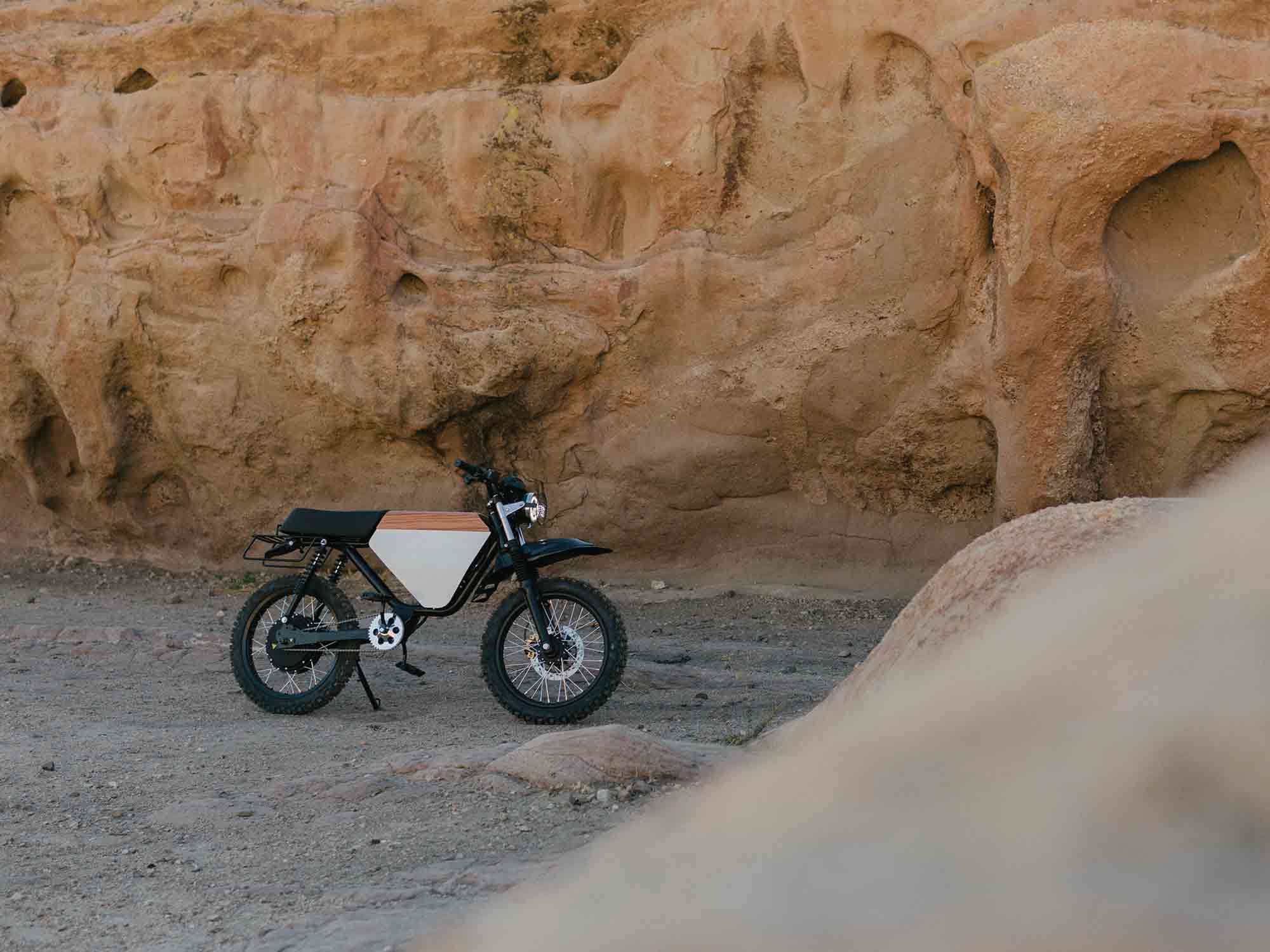
Issues with the RCR’s safety had us scared of getting too far from a charging point, despite being incredibly fun to zip around desert trails in silence. (John Ryan Hebert/) Nothing short of a crash will wipe that smile off your face quicker than a bike that just keeps quitting. After minding the throttle and ride modes, I saw no more issues that day, but I was plagued by range anxiety and did not want to reach the battery’s limits again and find myself pushing this bike miles through the desert. While riding around in the dirt was a blast, I feel most riders will be using the RCR almost entirely on road, so back to the city we went to recharge and give it another go.

The RCR has plenty of power to get loose and spit up some dirt, should you so desire. (John Ryan Hebert/) My second on-road experience was amazing. Starting from the same location and keeping the RCR in Sport mode, I went cruising around the neighborhood. The bike performed exactly as I hoped it would. I stopped by the local brewery and grabbed a growler for later, using the rack on the back. I picked up a dozen tamales from the husband-and-wife duo selling them out of their driveway. The RCR is a quick and efficient way to get around, and the silent, rapid acceleration is exhilarating every time.
Of course, the first two questions are always “How fast does it go?” and “How far will it go?” One is completely dependent on the other. The RCR operates in three modes, Eco, Normal, and Sport. Eco mode limits the output, accelerating more slowly than the other two modes and capping speeds at an indicated 20 mph. Onyx claims Eco mode will give you 75 miles of range. Normal mode accelerates quickly up to a top speed of 35 mph. Estimated range in Normal mode is around 40 miles, less if you’re launching hard or climbing a lot of hills. In Sport mode, the highest speedometer reading was 53 mph while tucked in on a long straightaway, but it didn’t seem that fast compared to the cars around me, so I checked. A GPS-based speedometer on my phone showed 47 mph, which was soon corroborated by the digital radar speed sign on the side of the road. The knobby tires, my 6-foot-4 frame serving as a wind-catching sail despite my tuck; there were factors limiting speed, but I am doubtful that a smaller or lighter rider would be able to reach 60 mph. Riding around at 47 mph on 17-inch moped wheels felt plenty fast to me, but nobody is raising a fuss about an electric moped that’s capable of 47 mph. That’s not why we’re here.
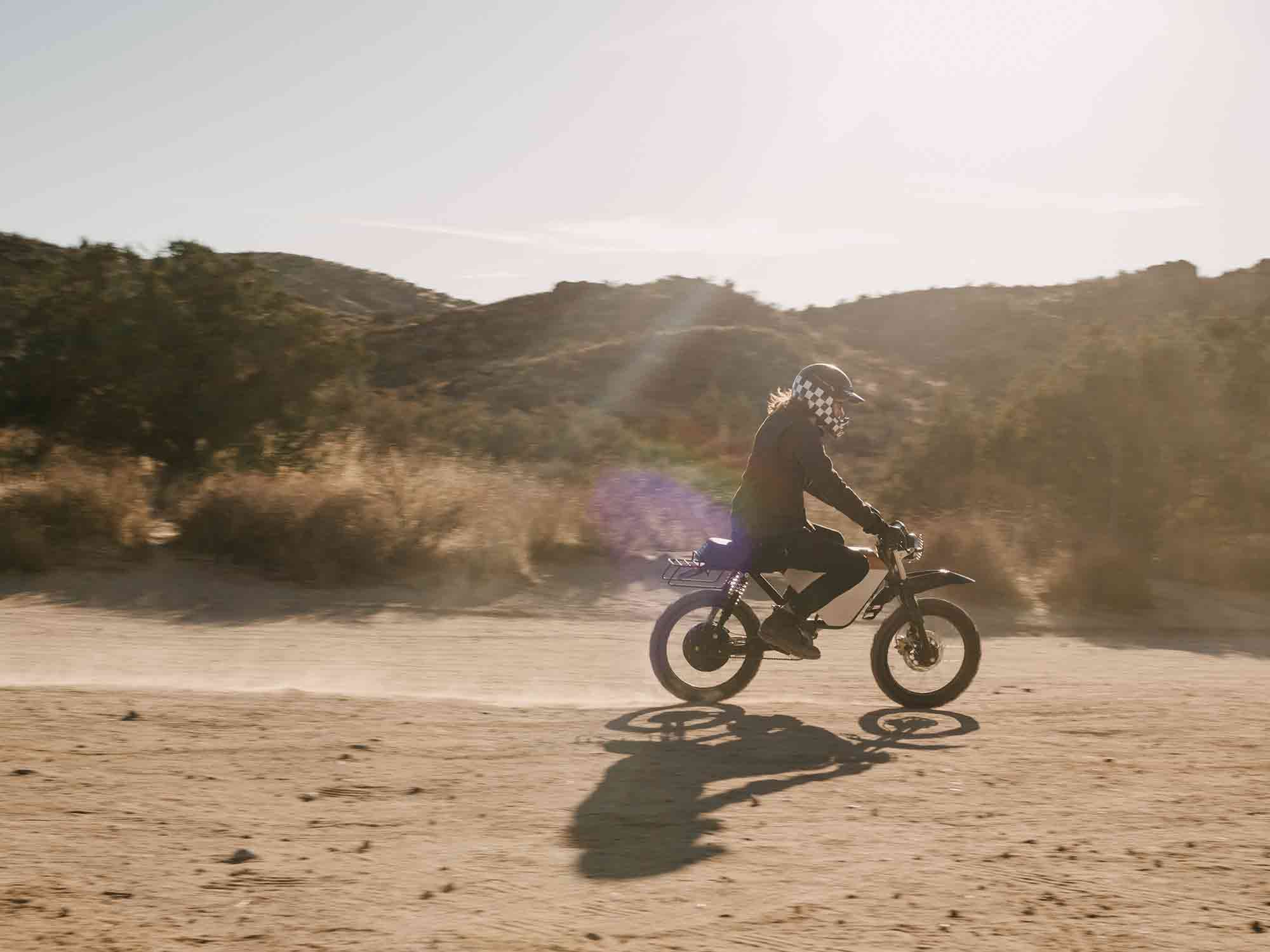
The size of an average moped, the RCR is compact, but not uncomfortable for a tall rider. (John Ryan Hebert/) Suspension on the RCR is what you would expect from a modern moped with nonadjustable front fork and rear shocks with adjustable preload. It feels springy and soft when you slam on the brakes, but smooth enough in any setting. And fun to bounce around a bit if you want to hop off a curb or rock, or load it up and spring off a speed bump.
A hydraulic single-piston caliper on a 220mm disc serves as the RCR’s primary stopping method. (Morgan Gales/) Both front and rear brakes operate with discs, 220mm in the front and a 205mm rear. Front brake feel is fine; not great, but fine. With a hydraulic single-piston caliper, you get a little bit of feedback, and you can give the lever a good hard squeeze before feeling like that front wheel is going to dish out on you. But it does often feel like you’re walking that line between enough braking power to stop quickly and losing the front end completely. The cable-operated rear brake felt like a bicycle brake strapped to a motorcycle, because it basically is. I knew it was working when I could hear the rubber smearing the tarmac. On several occasions, the bike’s weight and power overwhelmed its braking system. As the RCR runs standard moped tire and brake sizes, the necessary upgrades are easy to find, and you could significantly improve performance without a major investment. Mind you, all of this is on the knobbier set of tires offered from Onyx, which the tech told me were significantly more sticky and grippy than the on-road variant.
Rear brake on the RCR was underpowered and would often lock up when applied. (Morgan Gales/) At $4,150 for a completely electric vehicle, I had hoped to find higher-quality controls at the bars. They’re the first thing most riders will touch, so I wish I could describe the buttons and switches in any way other than cheap. The buttons look like generic pieces off of eBay, and the remote matches. Nothing about them says Onyx, looks unique, or feels substantial. Aesthetics set high expectations, and thin plastic on these pieces cheapens an otherwise premium experience.
Ebike qualifications vary from state to state to limit power by top speed, motor size, or both, and the Onyx RCR blows past all of them. The company claims RCR owners have been able to register their bikes as mopeds in California, but the California DMV clearly states that a moped must have less than 4 hp, and Onyx’s website claims the RCR has 7.24. Therefore here in California, where the company’s two offices are located, it is too fast to be qualified as an ebike or moped but lacks the VIN and required certifications to be sold or registered as a motorcycle. They tell me they’re working on it.
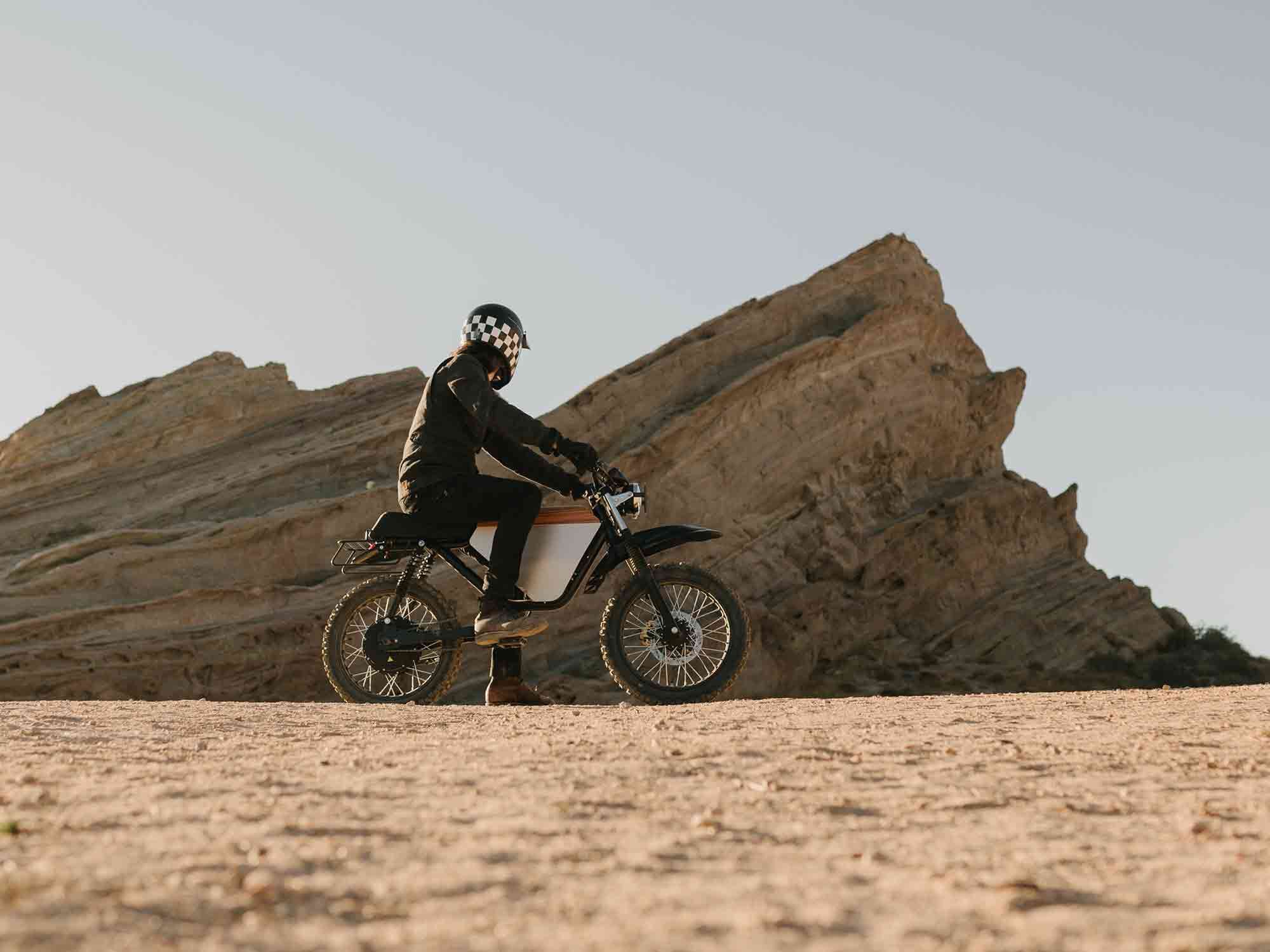
Riding miles off the beaten path is fun on the RCR, but range anxiety sets in as the battery gauge drops because the bike is just too heavy to pedal without assist. (John Ryan Hebert/) So what is the Onyx RCR? It’s an incredibly stylish machine that can go 47 mph for about 15 miles, so long as you are careful with the throttle and don’t hit any steep hills. It’s a fun short-mile commuter, but it is definitely not an ebike. And with 7-plus horsepower, I would argue it isn’t a moped either. It currently sits in a legal gray area which makes investing in one a gamble if you’re planning on riding any public roads. The safe bet would be to save your money until it starts producing these machines with VINs and calling them what they are: electric motorcycles with pedals. Or just buy a real ebike that’s legal on bike paths and doesn’t make exaggerated claims—or shut off abruptly.
Onyx RCR Specifications
Price: $4,150 Motor: 3,000-watt, 205mm hub motor Battery: 72V 23AH removable lithium-ion Claimed weight (ready to ride): 145 lb. Claimed peak horsepower: 7.24 hp Claimed peak torque: 134 lb.-ft. Tires: 2.75 x 17 in. Wheels: 36-spoke steel, 17 in. -
Hello Heavycheese,
Welcome to The Motorbike forum. Please feel free to browse around and get to know the others. If you have any questions please don't hesitate to ask.
Why not tell us a bit about yourself too.
-
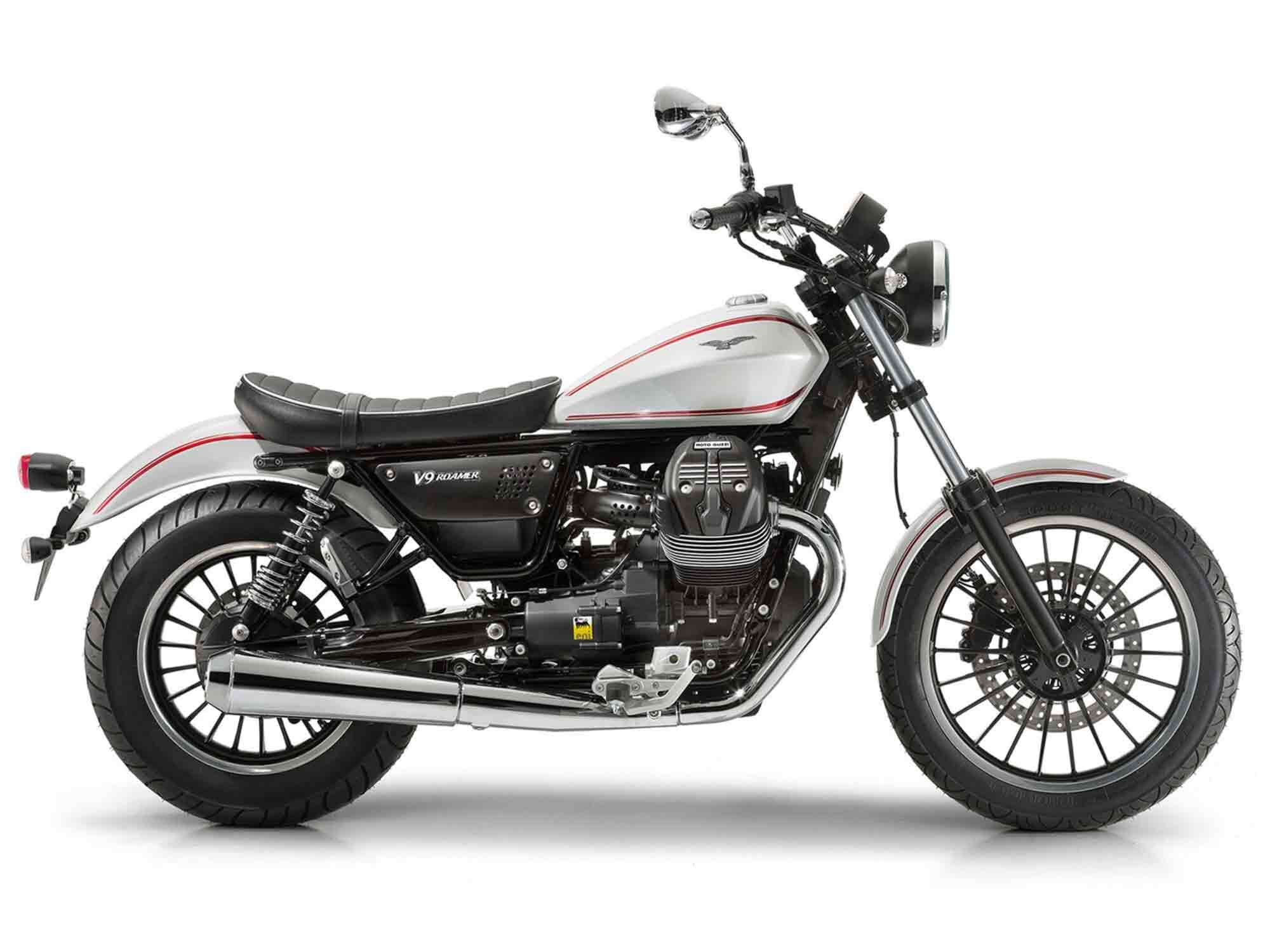
2020 Moto Guzzi V9 Roamer 850 (Moto Guzzi /) If you’re a fan of Guzzi’s popular V7 models but just wished for a bit more muscularity, power, and grunt, then the Italian marque’s new-ish V9 platform, introduced in 2016, might be the ticket. There are two separate models, the V9 Roamer and the V9 Bobber, both sporting a more laid-back cruiser aesthetic, and both powered by the V9-specific, 850cc transverse V engine paired with a six-speed transmission, and of course, shaft drive. The painted and chromed Roamer may be more colorful, and it also sports a 19-inch front wheel, while the Bobber rolls on two 16-inch wheels with a fatter hoop up front. The blacked-out V9 Bobber also differs from the V9 Roamer with its more crouched and sporty riding position thanks to a lower, drag-style handlebar and the different footpeg positioning.
2020 Moto Guzzi V9 Reviews, Comparisons, And Competition
Our editors agreed that the V9s are “exceptionally user friendly, with an engine spec’d specifically for rideability. If you can ride a motorcycle, you will feel instantly instinctively at home on this motorcycle,” though they also thought the Bobber with the 16-inch front wheel handled slightly better in slow sharp-turning situations than the Roamer.
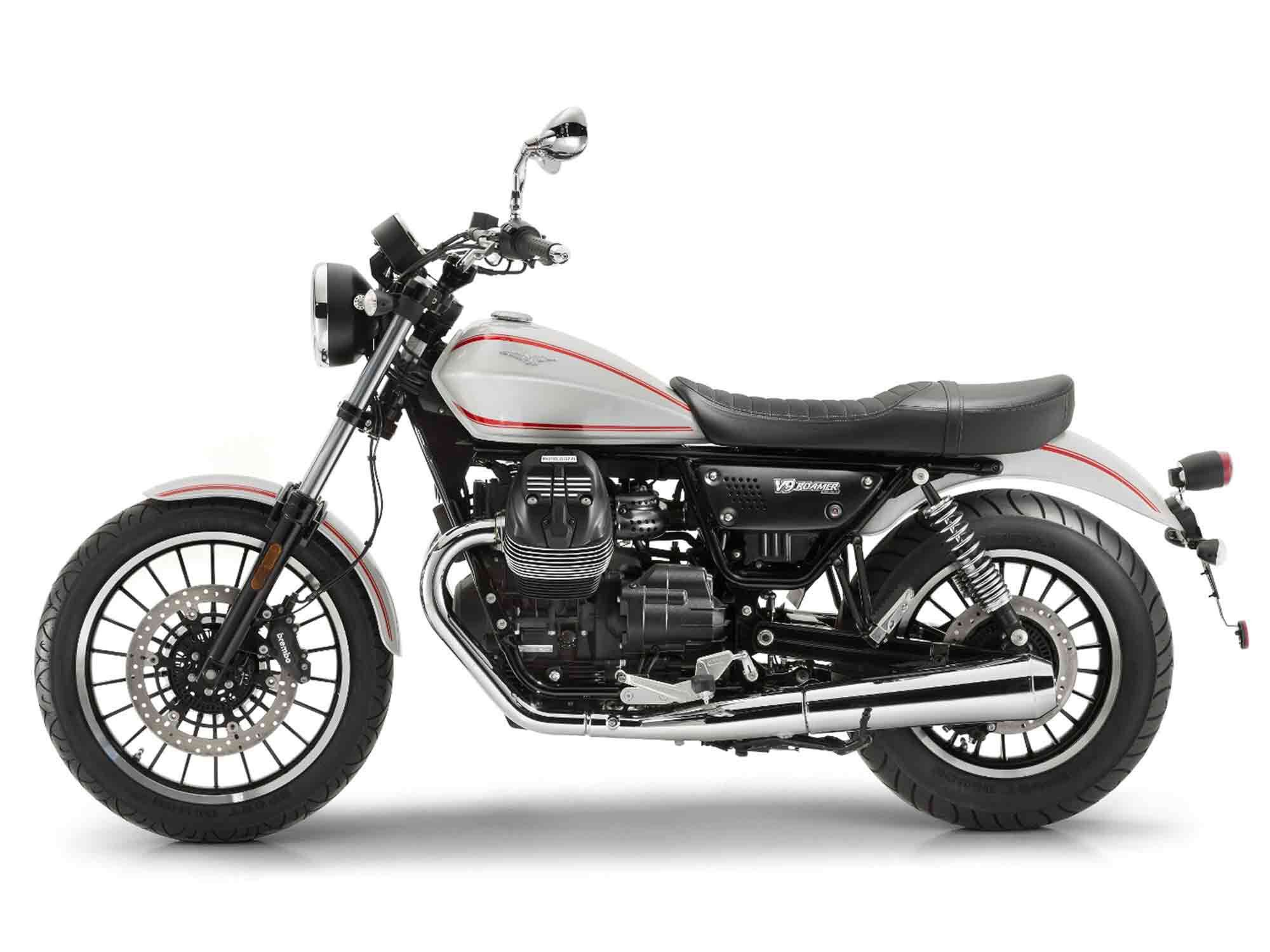
2020 Moto Guzzi V9 Roamer 850 (Moto Guzzi /) Moto Guzzi V9 Updates For 2020
For 2020, the V9 series retains both the Roamer and the Bobber, both returning unchanged this year save for different color options on each.
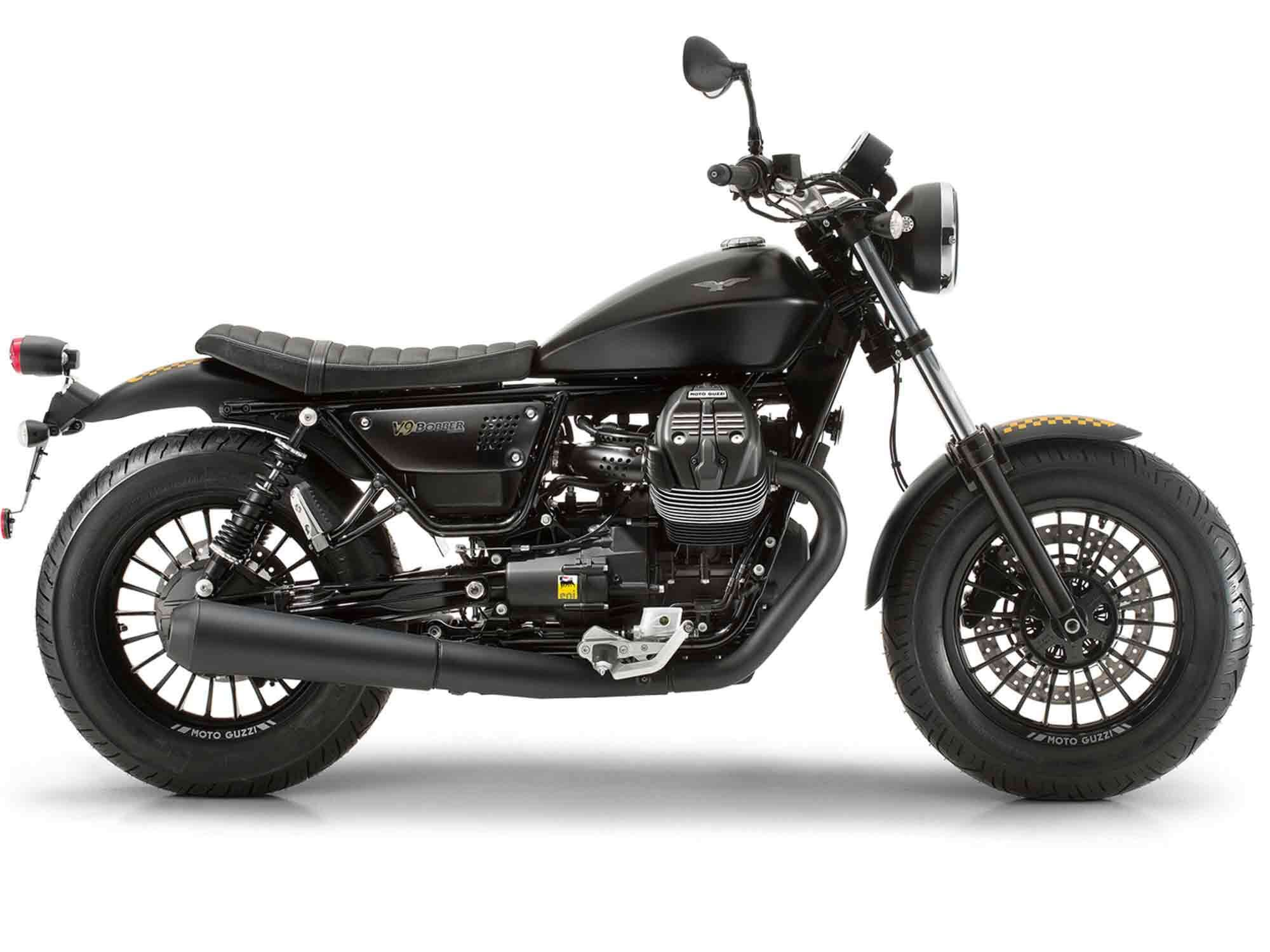
2020 Moto Guzzi V9 Bobber 850 (Moto Guzzi /) 2020 Moto Guzzi V9 Roamer/Bobber Claimed Specifications
Price $11,090–$11,590 Engine Air-/oil-cooled, 90-degree V-twin; 2 valves/cyl. Displacement 853cc Bore x Stroke 84.0 Horsepower 55 hp @ 6,250 rpm Torque 45.7 lb.-ft. @ 3,000 rpm Transmission 6-speed Final Drive Shaft Seat Height 30.9 in. (Roamer)/31.5 in. (Bobber) Rake 26.4° Trail 4.9 in. (Roamer)/4.6 in. (Bobber) Front Suspension 40mm telescopic fork; 5.1-in. travel Rear Suspension Preload adjustable; 3.1-in. travel Front Tire 100/90-19 (Roamer) / 130/90-16 (Bobber) Rear Tire 150/80-16 (Roamer) / 150/80-16 (Bobber) Wheelbase 57.6 in. Fuel Capacity 3.9 gal. Wet Weight 463 lb. -
Hello William Pesek,
Welcome to The Motorbike forum. Please feel free to browse around and get to know the others. If you have any questions please don't hesitate to ask.
Why not tell us a bit about yourself too.
-
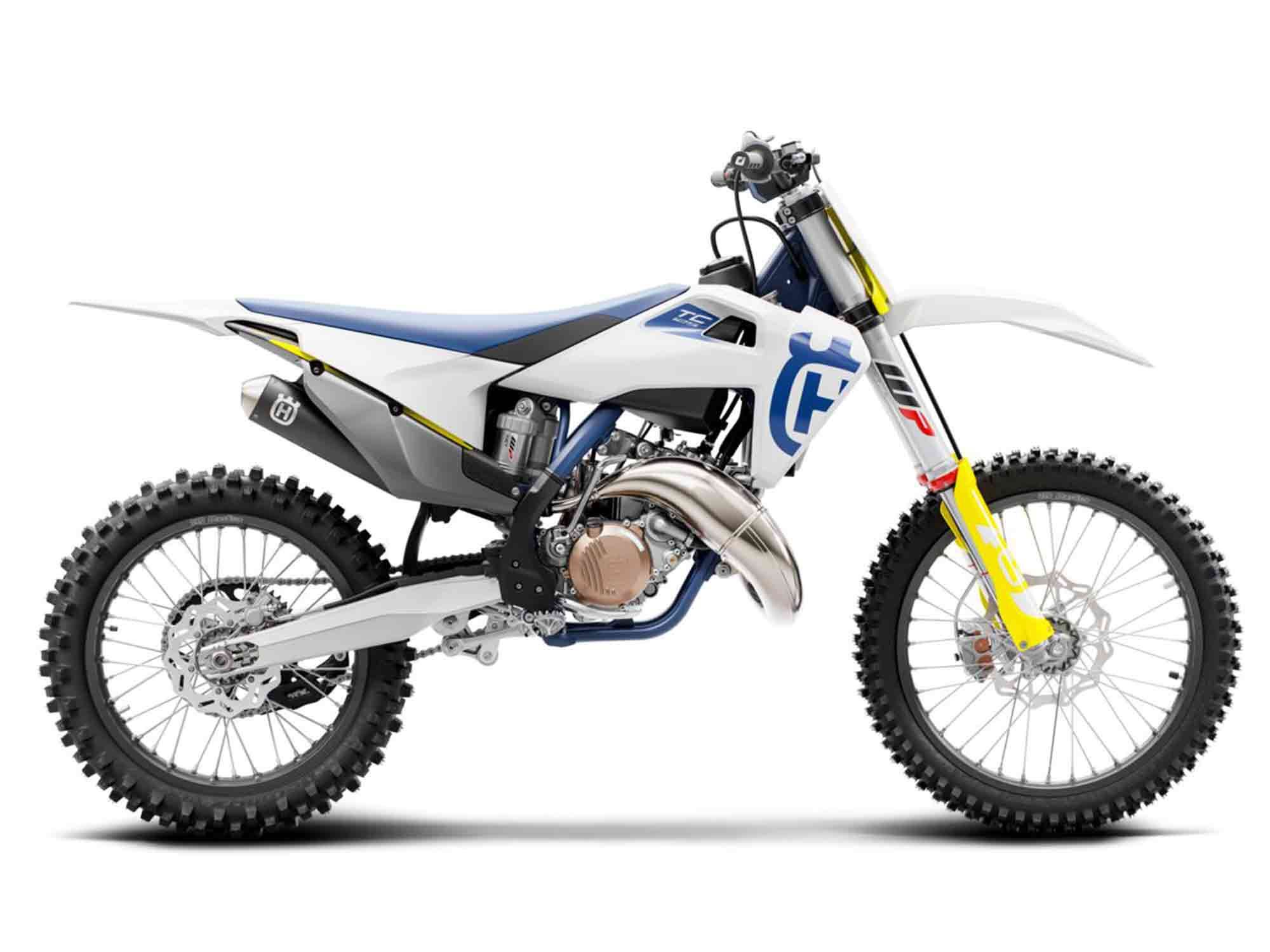
2020 Husqvarna TC 125 (Husqvarna/) The TC 125 is Husqvarna’s motocrosser that provides a smooth entry for younger riders transitioning from the mini scene to the full-size classes. But heck, it’s just as much fun for the seasoned too. Powered by the 125cc two-stroke engine with impressive character, this thing rips—without the hit of the larger TC 250. As is common in Husqvarna models, the TC 125 features WP suspension, chrome-moly frame, and Magura clutch system.
2020 Husqvarna TC 125 Reviews, Comparisons, And Competition
GNCC championship rider Jason Thomas races a TC 125 in the XC3 125 Pro-Am class and found that though riding for three hours on a 125 is tough it “works extremely well in mud races. In 2017, I finished seventh overall on a 125. That was out of every single Pro rider. People seem to think that was a big achievement. In reality, the 125 is lighter. It kind of floats on top of the wet stuff, even when mud sticks to the bike.”
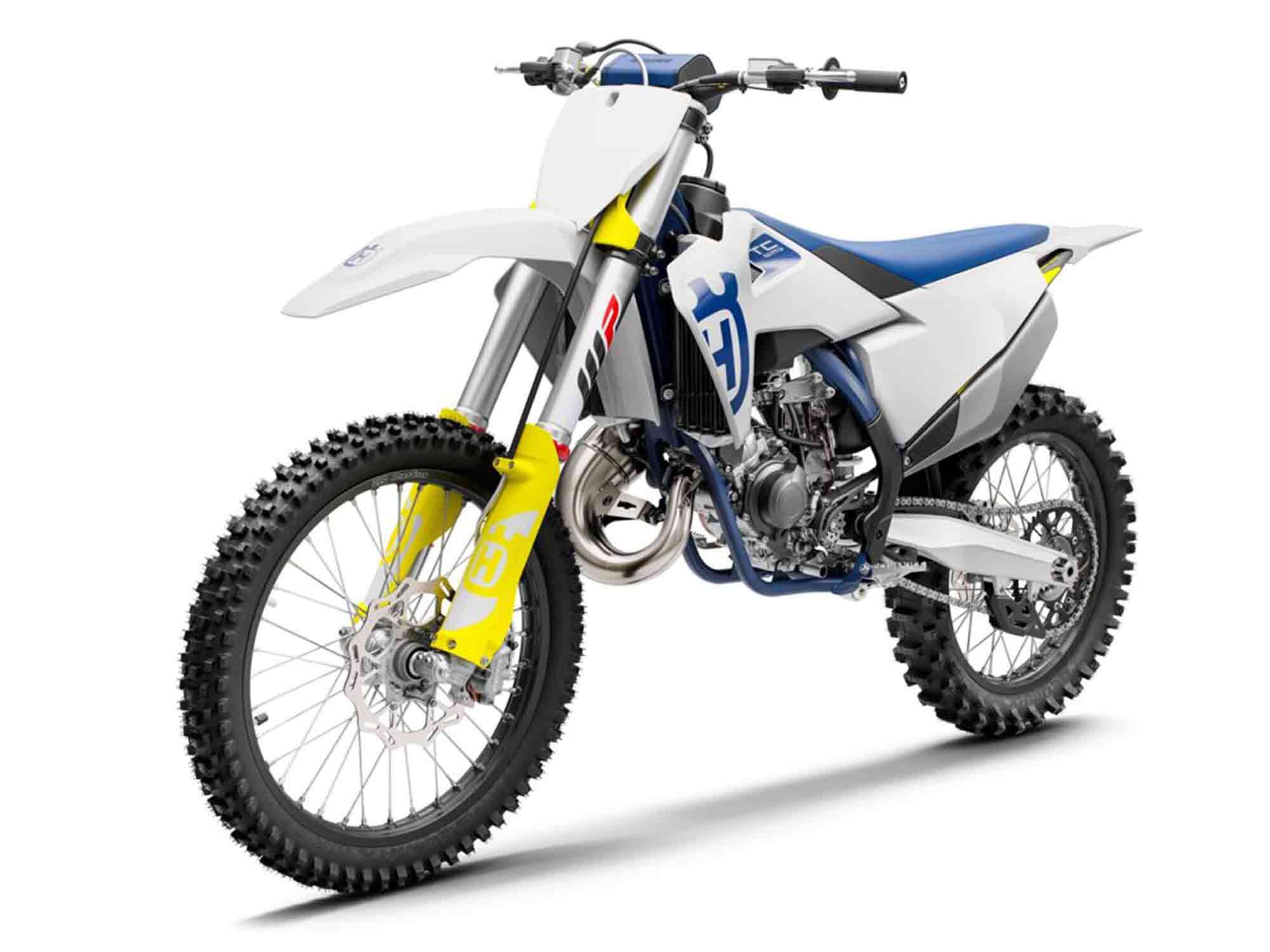
2020 Husqvarna TC 125 (Husqvarna/) In Dirt Rider’s 2016 first impression of the TC 125, test rider Kris Keefer found the engine to have unbelievable character. It was snappy and hard-hitting down low, then screamed into midrange to top-end with minimal clutch use.
Relevant models for your own side-by-side comparison include the TM MX 125, Yamaha YZ125, and KTM 125 SX.
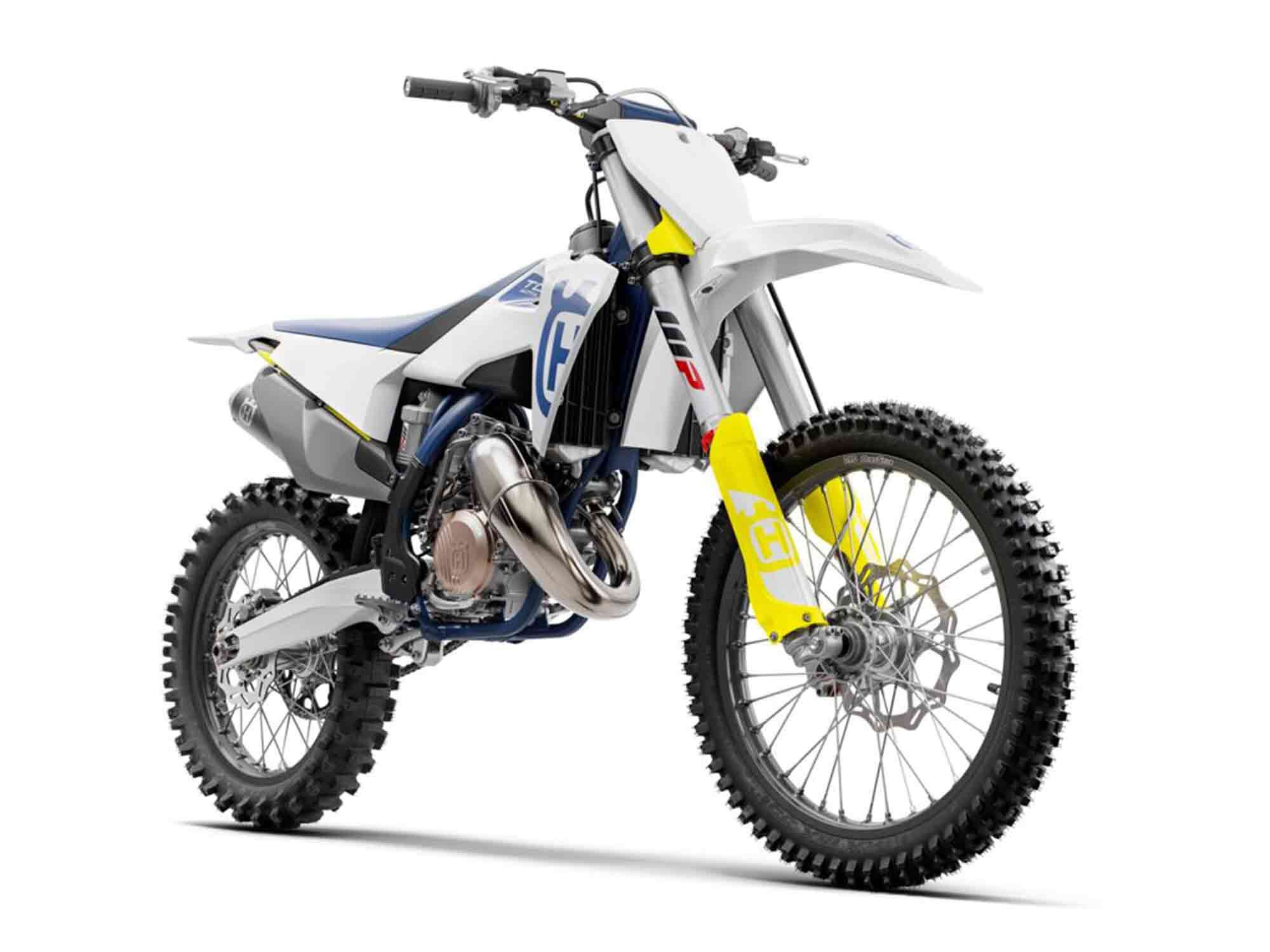
2020 Husqvarna TC 125 (Husqvarna/) Husqvarna TC 125 Updates For 2020
Like the other 2020 TC and FC models in Husqvarna’s lineup, the TC 125 flaunts updated graphics.
2020 Husqvarna TC 125 Claimed Specifications
Price: $7,399 Engine: Liquid-cooled single-cylinder two-stroke Displacement: 125cc Bore x Stroke: 54.0 x 54.5mm Horsepower: N/A Torque: N/A Transmission: 6-speed Final Drive: Chain Seat Height: 37.4 in. Rake: 26.1° Trail: N/A Front Suspension: 48mm inverted fork, fully adjustable; 12.2-in. travel Rear Suspension: Fully adjustable; 11.8-in. travel Front Tire: 80/100-21 Rear Tire: 100/90-19 Wheelbase: 58.5 in. Fuel Capacity: 2.1 gal. Dry Weight: 193 lb. -
Hello Andriko,
Welcome to The Motorbike forum. Please feel free to browse around and get to know the others. If you have any questions please don't hesitate to ask.
Why not tell us a bit about yourself too.
-
-
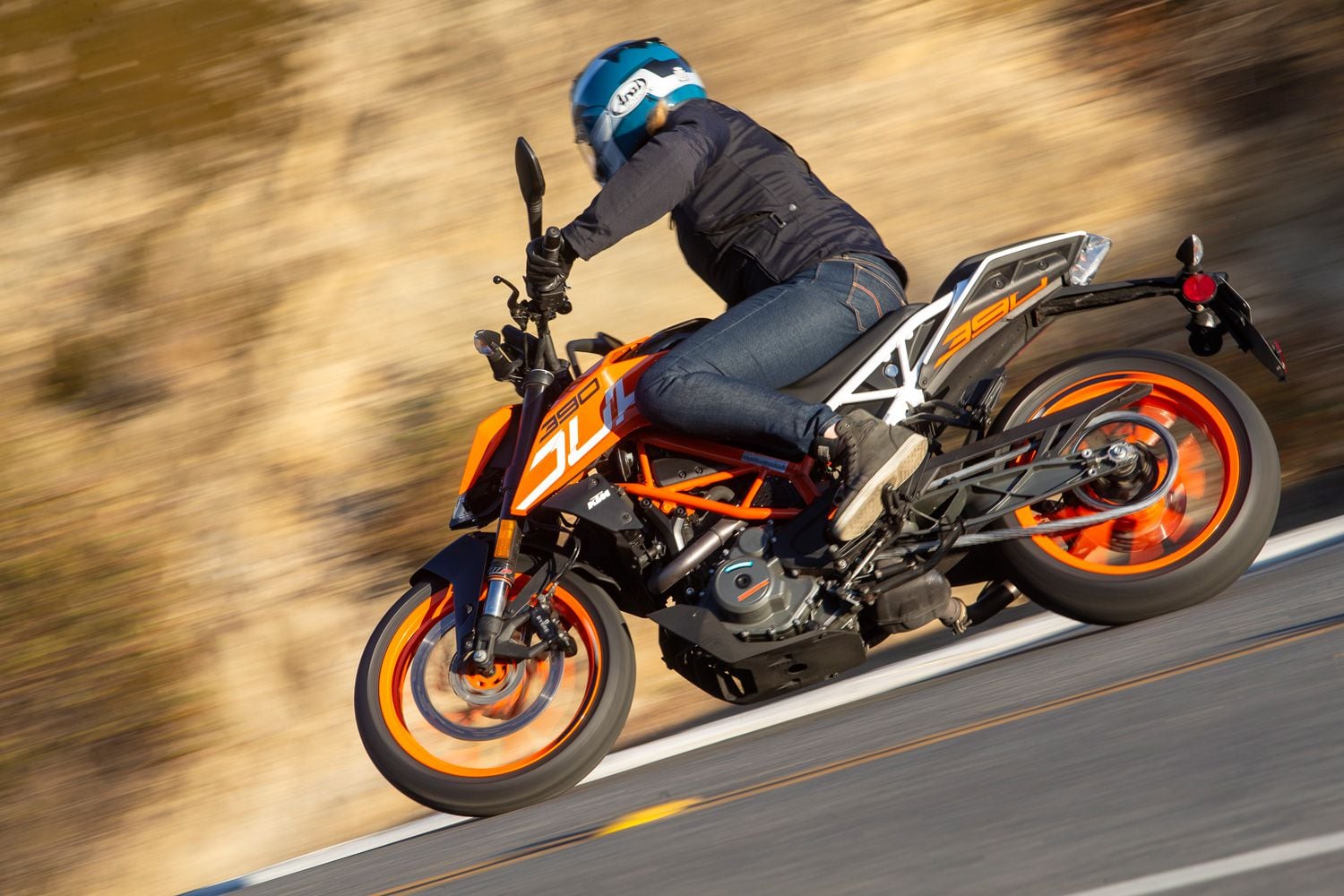
Approximately 9,000 miles’ worth of freeway, side streets, twisties, and even some…dirt roads? This 2018 KTM 390 Duke has proved to be dependable through it all. (Jeff Allen/) Buying a personal motorcycle can be a tough decision, especially considering the 300-plus motorcycle models available on the market. You may consider price, power, style, reliability, or perhaps even a riding experience. While I was considering my options for my personal bike, the KTM 390 Duke hit the main criteria for me: low price, unintimidating, and fun. Riding the 390 for a charity ride a few years ago also helped seal the deal for me. The combination of freedom and supporting a good cause in two-wheeled fashion hit all the right feels, so I just had to buy one. After purchasing my 2018 KTM 390 Duke brand new from the dealer in March of 2019, the bike has accumulated nearly 9,000 miles’ worth of daily commutes and weekend rides.
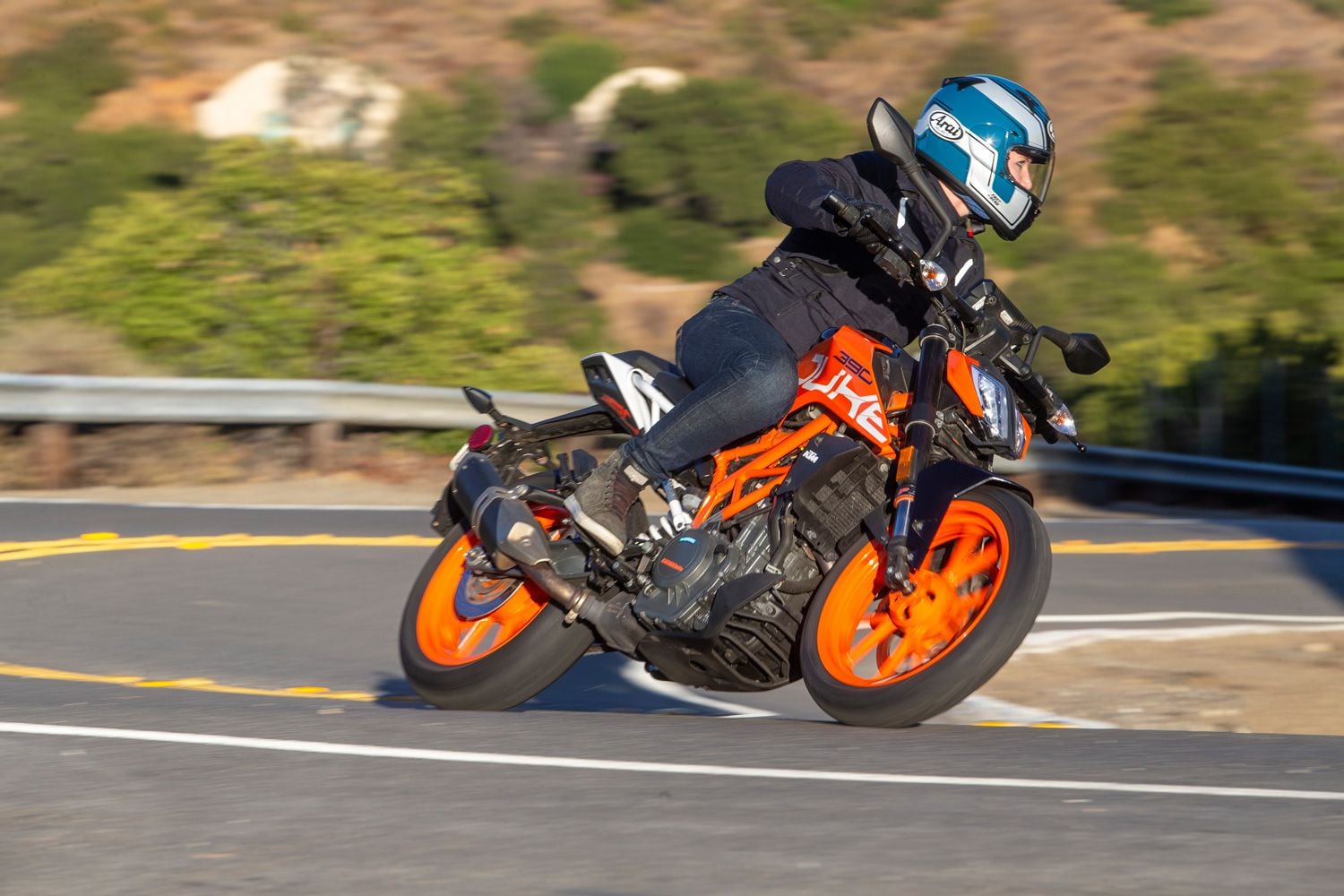
If there’s one thing the 390 Duke loves, it’s corners. (Jeff Allen/) Where Has It Been?
Since March 2019, these miles included primarily the daily commute of highway, freeway, and side street riding as well as weekend rides around the local twisties and even some dirt roads as part of Motorcyclist’s Alley Rally. No trackdays, no dragstrips, just the humble plebeian roads for this Duke. I measured this mixture of rides to produce an average of 52.04 mpg from the 3.6-gallon fuel tank.
Regardless of whether I was on the freeway or the canyon roads this small naked bike is comfortable, despite the lack of wind protection, and its ergos place you in an upright position to allow for many consecutive hours of riding. I agree with our test rider of the 2017 390 Duke in that at 6 feet tall I too feel right at home in position and shorter riders can easily reach the ground as well. Seat height is a Cycle World-measured 32.1 inches for an easy step down to pavement.
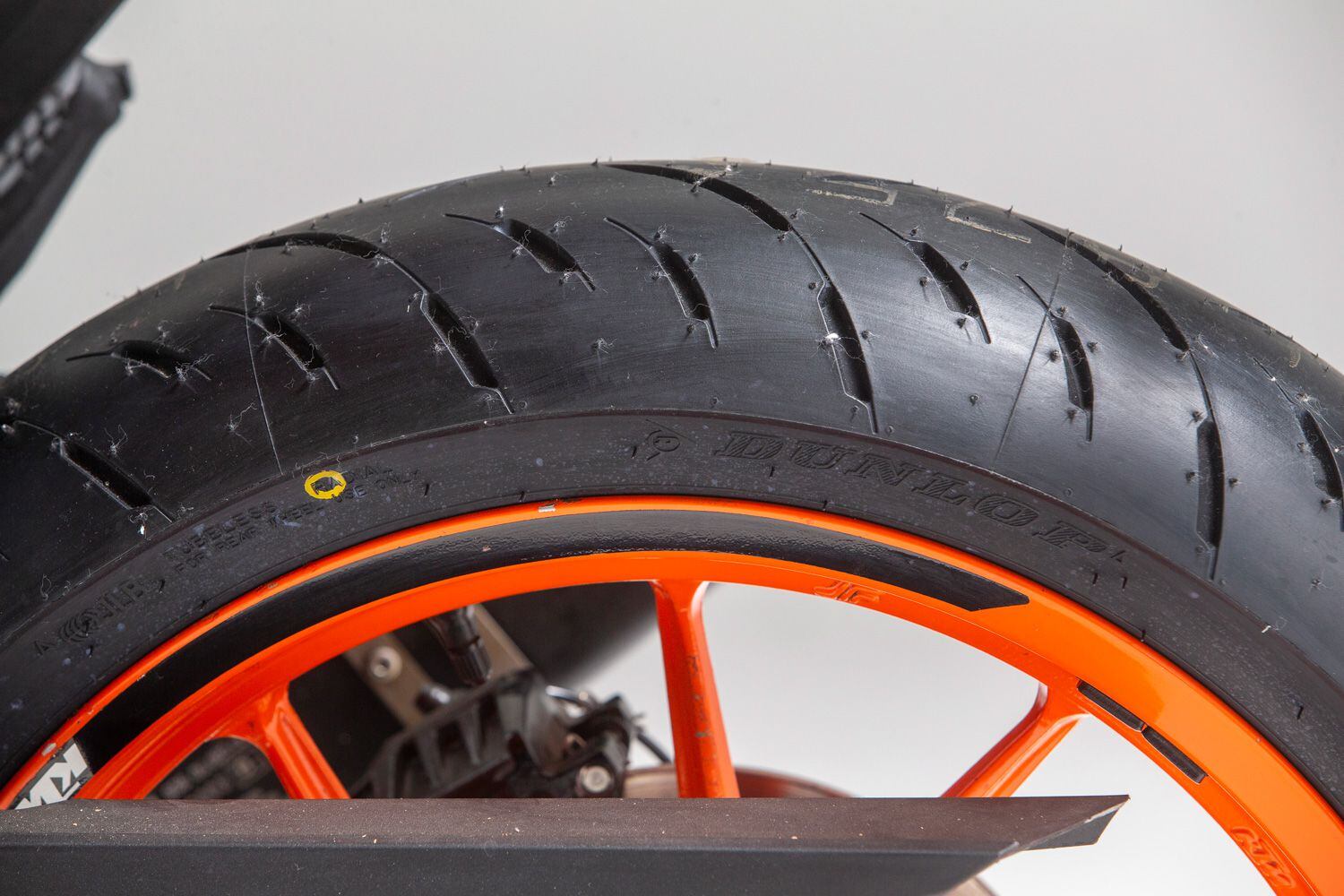
Say hello to new Dunlop buns. (Jeff Allen/) A big feather in the Duke’s cap is its maneuverability. It has a short wheelbase (claimed 53.4 inches) that makes it a blast in the corners. Its CW-measured 362 pounds is incredibly tight-turn friendly and makes slow maneuvers a breeze. I am impressed by the long life of the stock Metzeler Sportec M5 tires—they did, however, need to be replaced at 8,730 miles. I swapped in some Dunlop GPR-300s (110/70R-17 front, 150/60R-17) to experience a different set of rubber, and although the front’s aspect ratio is smaller than the stock 110/90R-17′s this difference resulted in a quicker initial turn-in and more feedback from the front.
Has Thee Fared Well?
There are many components of the machine that have withstood the test of daily wear in the Duke’s 20-month life.
I have always been very confident in the bike’s ability to start right up at the push of the electric starter, and analyzing the 12-volt lead-acid battery now, it hasn’t discharged or corroded at the terminals and still buzzes to life in cold- or hot-weather conditions. Other electrical components powered by the voltage, such as the TFT display and LED lighting, also work well and have not needed any attention.
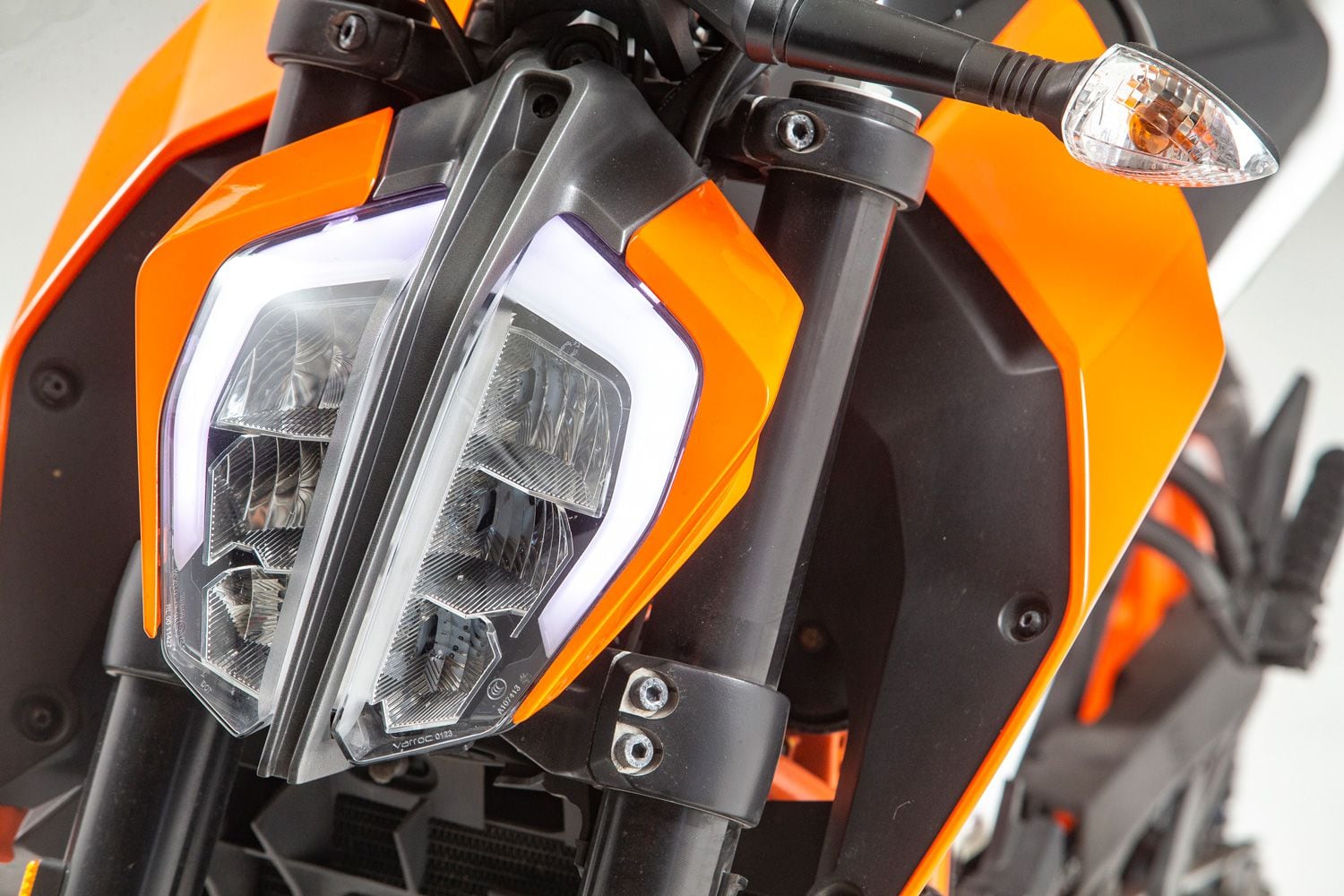
The sleek LED lighting has not had any issues. (Jeff Allen/) The upright handlebars and grips are in good condition with only minor wear at the inner end of the grips. Both the pilot and passenger seats have maintained their form and provide hours of riding comfort. The only complaint I have is that the pillion can be a little uncooperative when reinstalling on the bike.
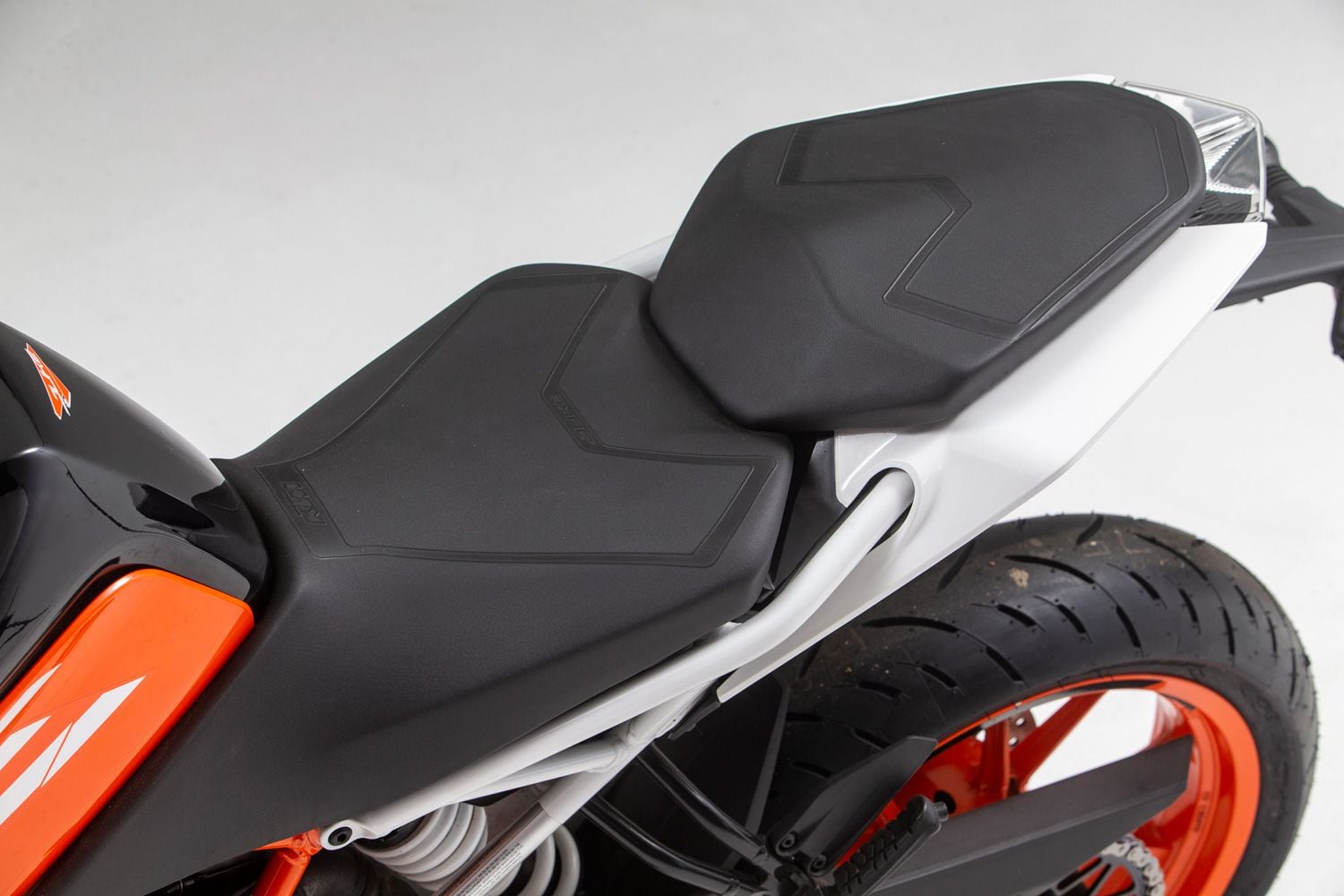
Seat cushion remains firm and comfortable. (Jeff Allen/) The WP suspension is also a durable survivor that has made the twisty roads a blast and provided great comfort over even the dirt roads of the Alley Rally. The fork seals have held up well and are not leaking even after all this time.
The brake pads are also still kicking with only the front brake pad showing middle-aged signs of wear. Brake fluid is also clean.

Graphics and paint remain vibrant. (Jeff Allen/) The plastics and decal graphics prevail with bright and vibrant colors—no fading or peeling despite being left in the sun during work hours. When not at the office it’s stored in a parking garage.
What Needs Some Attention?
While the KTM 390 Duke has seen great success in its 20 months of use, there are a few points that demand attention.
Within the first 515 miles, I had an issue with the engine temperature skyrocketing and warning lights illuminating while on a commute home from work. I was familiar with the overheating history of KTMs, but was still shocked that I had the issue so soon after my purchase. What it came down to was the radiator fan’s 10A fuse blew out and as a result the radiator fan was off-duty. After realizing the fuse was blown I spent around $6 for a multipack of 10A fuses and, since the replacement, have not had any issues and the engine has been running perfectly since.

The TFT dash is arguably one of the best in the biz—that doesn’t mean it lacks idiosyncrasies. (Jeff Allen/) I have become pretty spoiled with the easily readable full-color TFT dash, however, a problem has surfaced with the clock. It starts to time travel incrementally back in time and has needed to be reset twice—I’ve gone back to the future with no flux-capacitor-equipped DeLorean needed, only a somewhat faulty TFT clock display. Another minor aggravation is the menus are confusing to navigate. Info, Motorcycle, Settings, and Preferences tabs all sound like they could potentially lead you to the same thing, so to this day it still takes me a couple of tries to get to the correct setting screen.
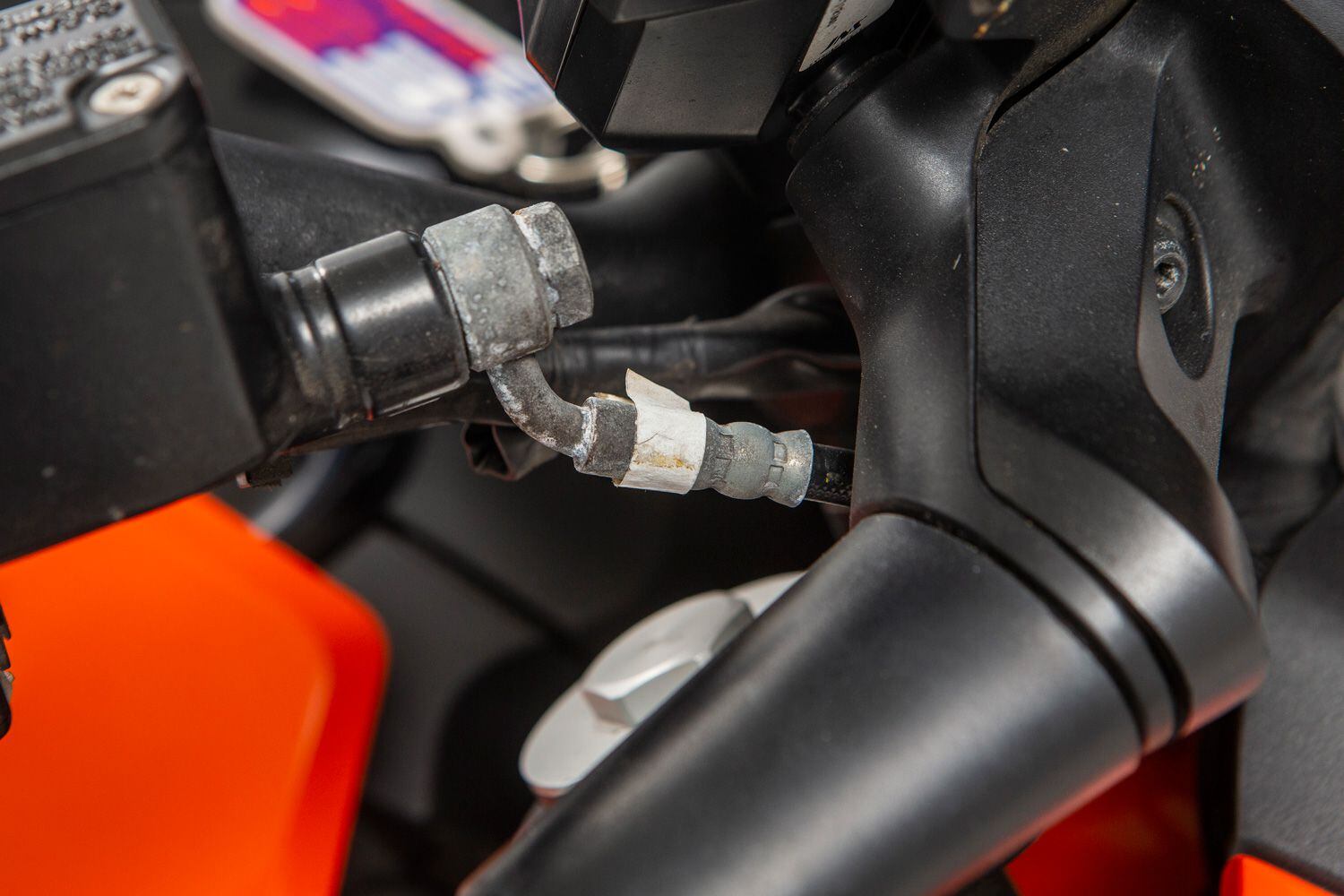
I love and hate living by the water. Despite the bike being covered and under the garage, the moisture in the air takes its toll on the sensitive metal parts. (Jeff Allen/) Another one of the main complaints I have is regarding the amount of corrosion that has taken hold of a majority of the hardware and the front brake disc (oddly the rear brake disc is not compromised). And this comes down to storage. I live near the ocean, and even in an underground garage with a cover blanketing the Duke, the salty moisture has still wreaked havoc on many of the bits and bobs. I did take some Scotch-Brite to the front brake rotor about a quarter of the way through its current mileage. This removed the grittiness, but the corrosion has returned and is in need of another scrubbing.
Some corrosion on the lower end of the fork tubes was also noticed. The speckling was able to be cleaned a little bit, but corrosion remains. A handful of fasteners on various areas of the bike are also showing the signs of battling the coastal elements.
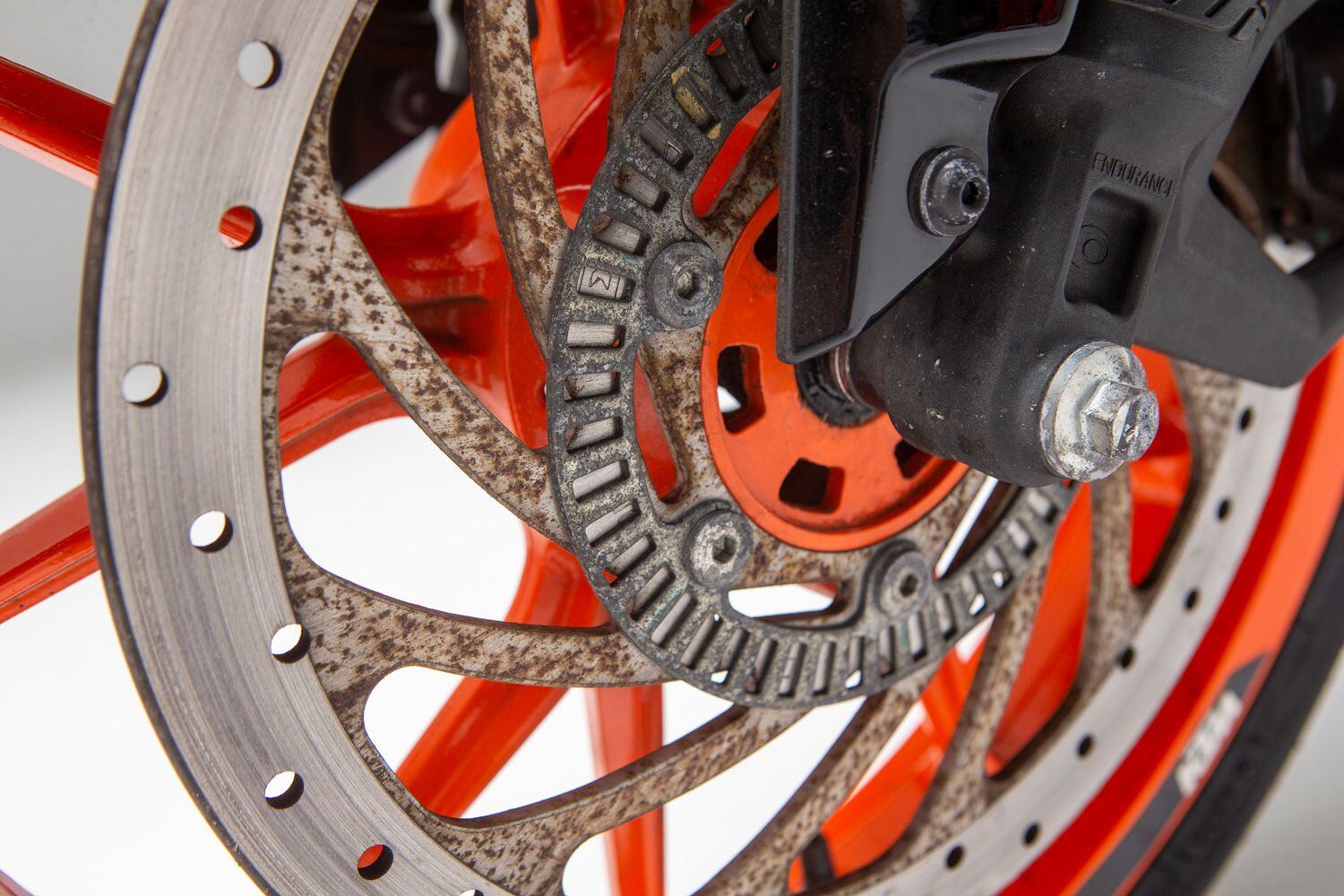
The corrosion on the front brake rotor makes me cringe. A Scotch-Brite pad has been used in the past and will be needed again in the near future. (Jeff Allen/) Mechanical pieces like the shift lever and rear brake pedal are sturdy and bearings are unimpaired for smooth shifting and braking actions, however, the clutch lever and brake levers did have play at the perch and adjuster—the clutch’s being more noticeable now that the bushings have worn by countless squeezes. The clutch freeplay has also needed adjustment as the plates have worn, but there is no sign of chatter or slip.

It was time for a chain and sprockets replacement. The new kit was purchased for $156.60. (Jeff Allen/) The chain has also had a nice long life spinning around sprockets. I have had to adjust the chain tension three times (at 2,400 miles, 7,086 miles, and 8,231 miles) and standard wear on the chain and sprockets now requires its first replacement at 8,730 miles. The chain had about 40mm of total lateral motion so I have replaced it with a D.I.D 520 X-ring chain. The new rear sprocket is 43 teeth and the engine sprocket 15 (stock was 45 teeth and 15 teeth, respectively). The two-teeth decrease on the rear sprocket makes the final drive ratio taller, causing the Duke to have a theoretical increase in top speed, but decrease in acceleration. The benefit in real-world riding is lower engine rpm at the quicker pace of freeway riding, for example, but slightly reduces acceleration getting off the line on city streets. The kit was purchased from Sprocket Center for a total of $156.60.
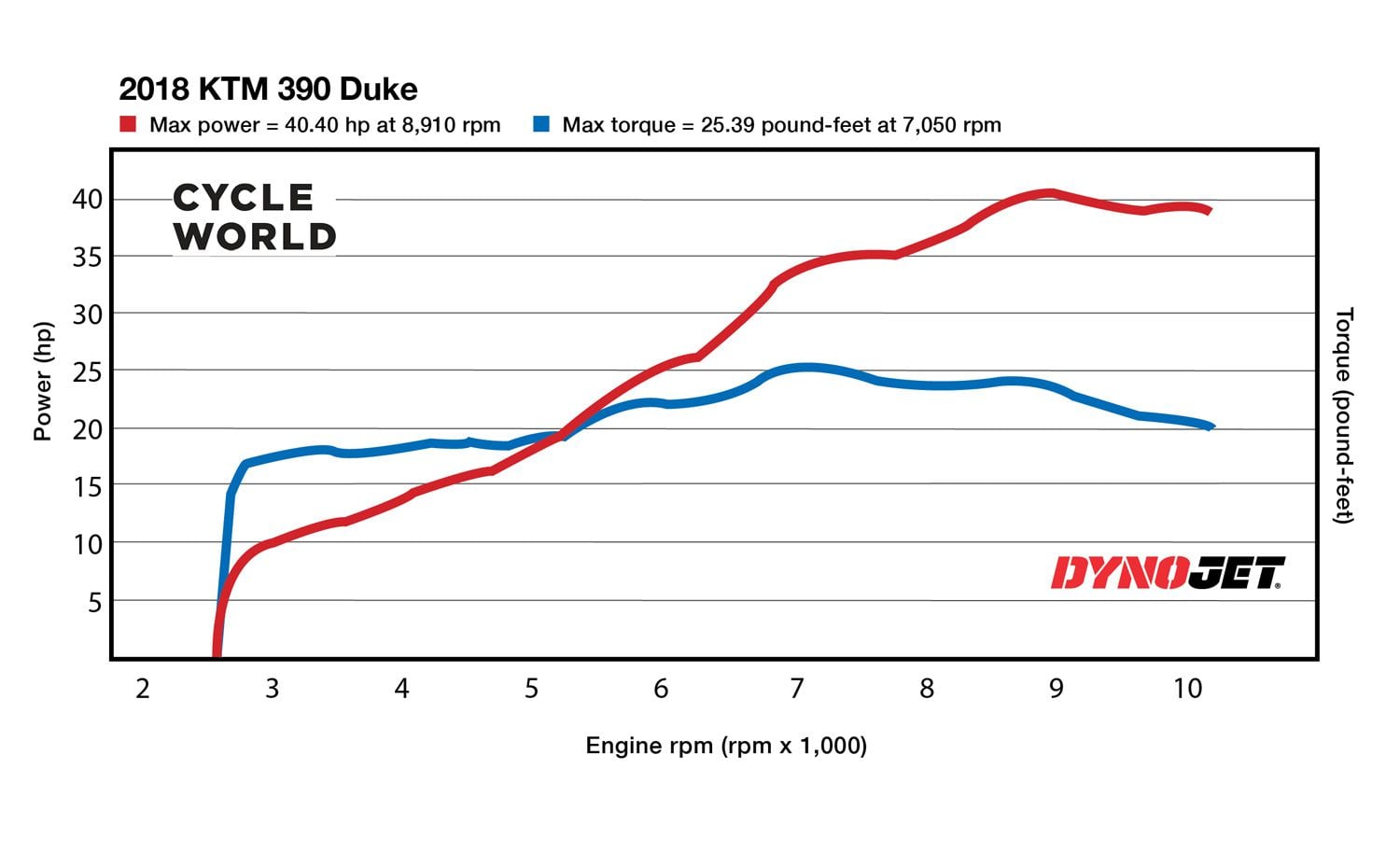
My 2018 KTM 390 Duke’s dyno chart. (Michael Gilbert/) After its tires, chain, and sprockets were swapped, my Duke took a spin on our in-house dyno; 40.40 hp at 8,910 rpm and 25.39 pound-feet at 7,050 rpm were recorded. When Cycle World ran the 2019 press unit on the dyno it produced 40.53 hp at 8,850 rpm and 26.10 pound-feet at 6,920 rpm. That’s not much of a difference in performance after 9,000 miles.
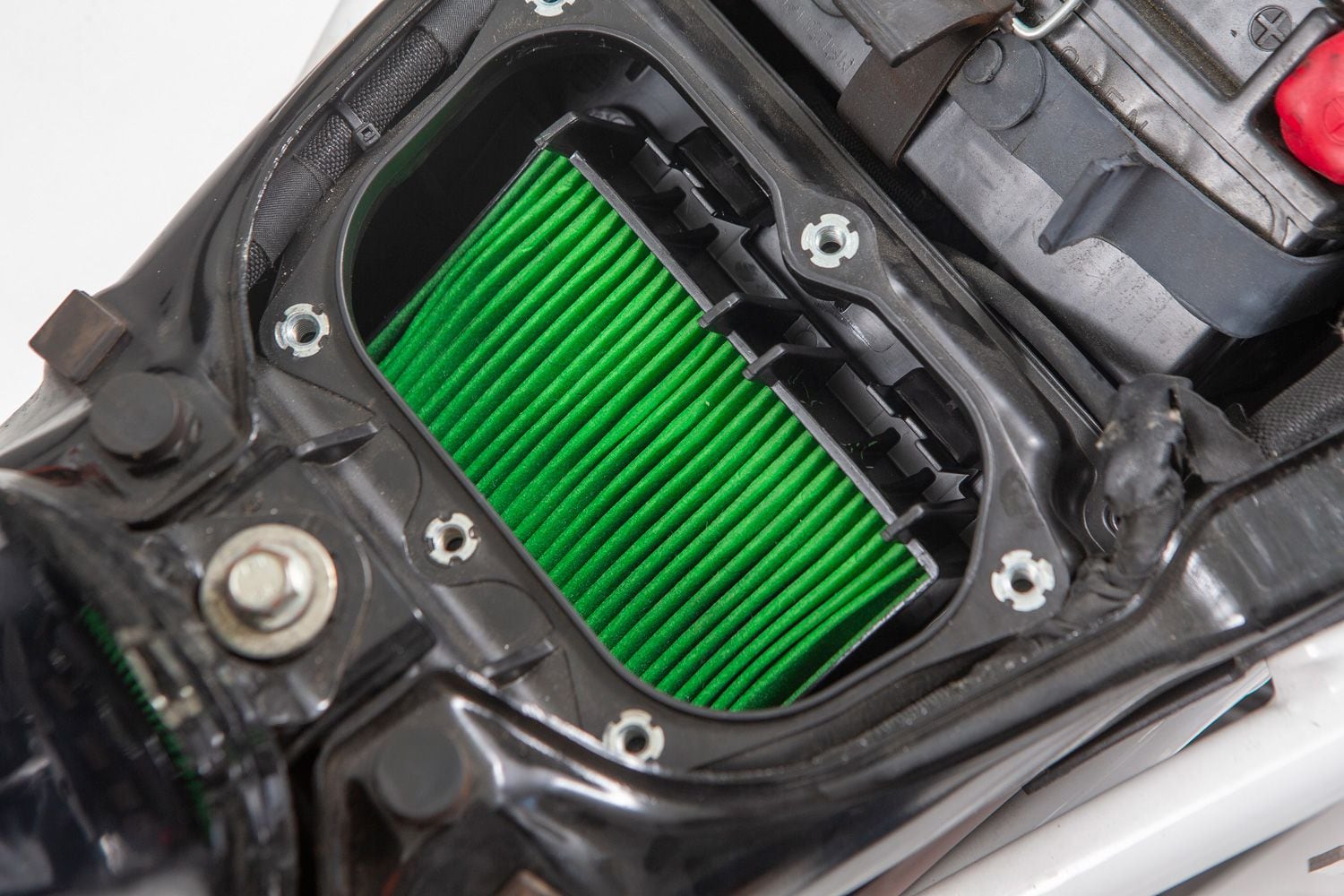
The old air filter fins were bent and dirty. Now, a new air filter took its place. (Jeff Allen/) The airbox was also in good shape and free of dirt. There was a small hint of oil but not enough to collect in the airbox drain. This amount of oil looks to be via crankcase venting. The air filter was blackened and the fins a bit deformed, so that part has also been replaced at 8,730 miles.
Aside from the regular oil changes, there were a couple of points when the oil needed to be topped off (one time in between the 515- and 4,359-mile services and again around 8,000 miles), and at 8,730 miles the coolant needed only a couple ounces to fill it up.
Related Content: The Importance of Working on Your Motorcycle
Regardless of the pros and cons, the 2018 KTM 390 Duke hasn’t stopped making me smile, but with a pride of ownership comes a cost of ownership and thankfully the Duke’s is a reasonable $6,933.95 thus far. At the time of writing, the 9,300-mile service is still needed and that will include things like replacing the spark plugs and changing the engine oil and oil filter—if the first two dealer services are any indication, it will be an additional $250–$270 charge approximately.
Cost of Ownership
Purchased new at dealership in March 2019 $6,000 Fuse replacement (multipack) Approx. $5.59 Break-in service at dealership $247.67 Second service at dealership $271.21 Dunlop Sportmax GPR-300 (110/70R-17) front tire [WPS Catalog] $94.95 Dunlop Sportmax GPR-300 (150/60R-17 rear tire [WPS Catalog] $133.95 Sprocket Center chain and sprocket kit $156.60 Air filter $23.98 Total: $6,933.95 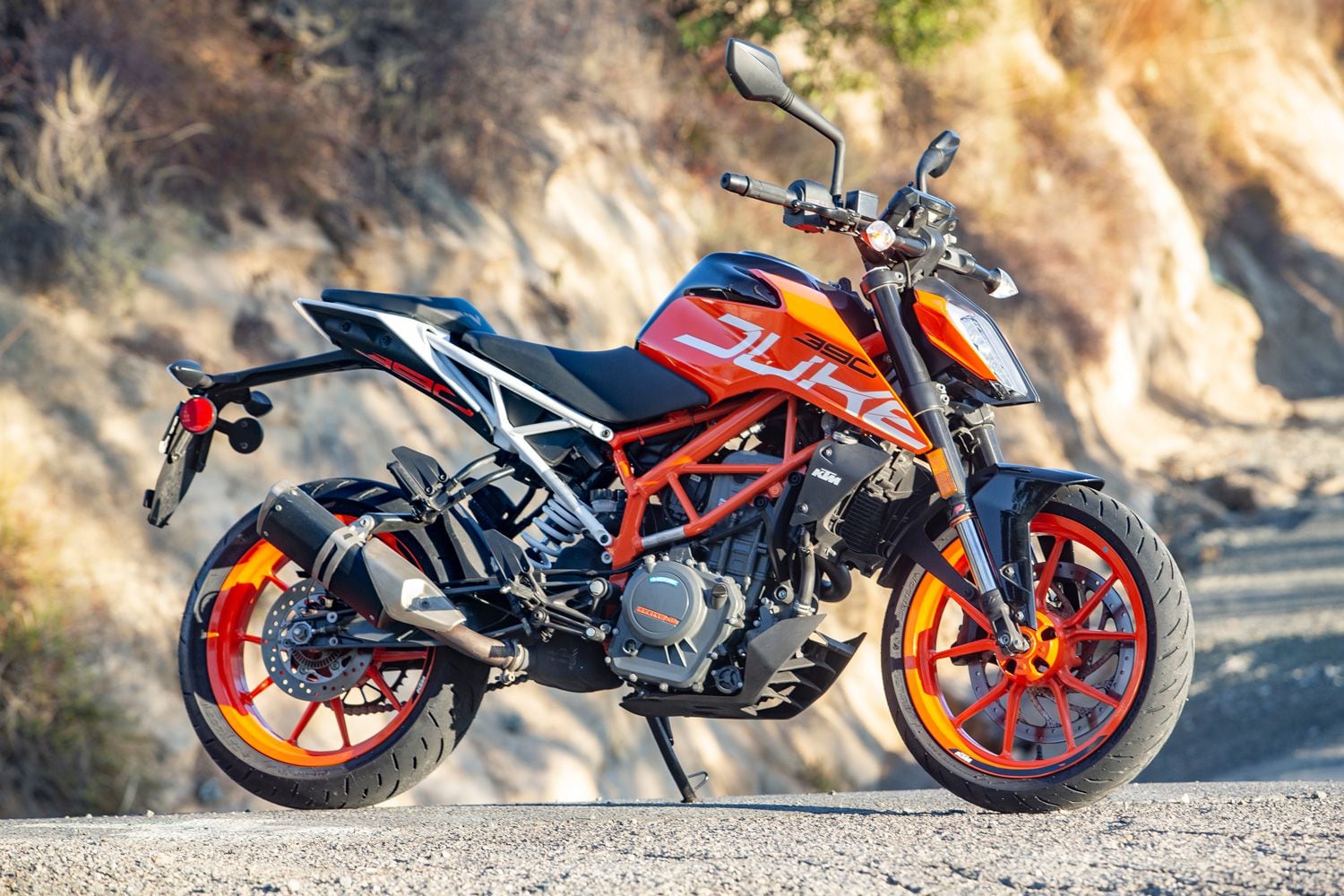
The 390 Duke is an affordable bike that has withstood miles of various riding scenarios and I anticipate many more. (Jeff Allen/) 2018 KTM 390 Duke Specifications
Purchased Price: $6,000 Engine: 373cc, DOHC, liquid-cooled single-cylinder Bore x Stroke: 89.0 x 60.0mm Transmission/Final Drive: 6-speed/chain Cycle World Measured Horsepower: 40.40 hp @ 8,910 rpm Cycle World Measured Torque: 25.39 lb.-ft. @ 7,050 rpm Clutch: Slipper clutch in oil bath; mechanically operated Fuel Delivery: Electronic fuel injection Frame: Steel trellis Front Suspension: WP 43mm inverted fork; 5.6-in. travel Rear Suspension: WP suspension; 5.9-in. travel Front Brake: 4-piston caliper, 320mm disc Rear Brake: 1-piston floating caliper, 230mm disc New Tires, Front/Rear: Dunlop Sportmax GPR-300; 110/70R-17 / 150/60R-17 Wheelbase: 53.4 in. Cycle World Measured Seat Height: 32.1 in. Fuel Capacity: 3.6 gal. Cycle World Measured Wet Weight: 362 lb. -
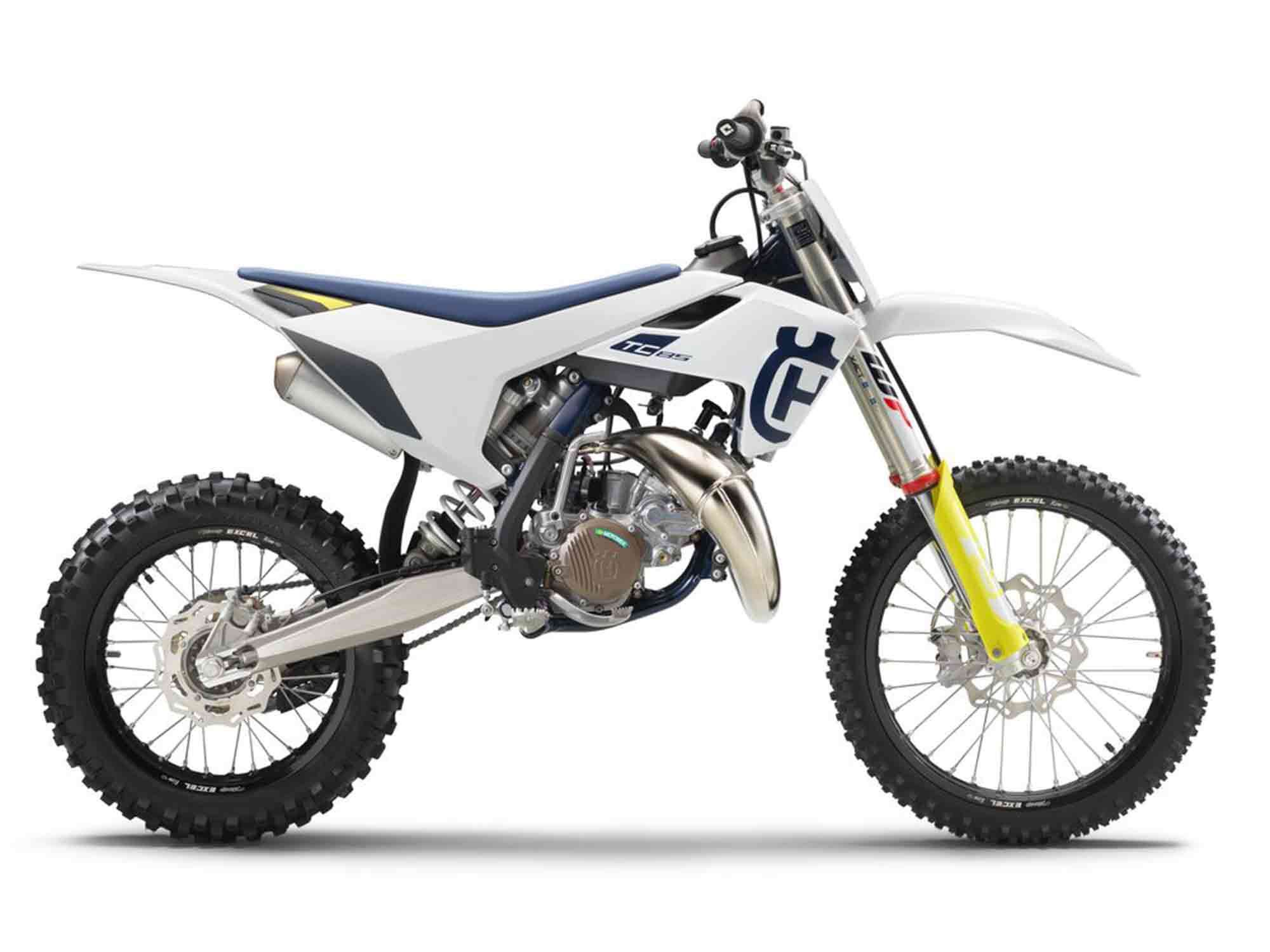
2020 Husqvarna TC 85 (Husqvarna/) As riders build up the skills and confidence to get up to full-size motocross bikes, there are gradual levels that help ensure the rider is ready for higher-displacement machines. The Husqvarna TC 85 is one such level. With two wheel size options, the 19/16 and 17/14, these models cater to young teens with different inseams who are looking for a machine powered by a smooth-delivering 85cc two-stroke engine. This dirt bike is supported by a chrome-moly frame and WP AER fork that uses air pressure as an additional available adjustment for complete adjustability.
2020 Husqvarna TC 85 19/16 And 17/14 Reviews, Comparisons, And Competition
In Dirt Rider’s 2017 Husqvarna TC 85 17/14 project bike build the engine was applauded for being “a great starting point, with very smooth and linear power—a lot of it,” but this was a project bike after all and updates were easily made to the machine with aftermarket parts showing that riders can tinker this Husky to their personal preferences.
The TC 85 does have its share of competitors: Suzuki RM85, Yamaha YZ85, KTM 85 SX 19/16 and 17/14, Kawasaki KX85, and TM MX 85.

2020 Husqvarna TC 85 (Husqvarna/) Husqvarna TC 85 19/16 And 17/14 Updates For 2020
The TC 85′s along with all the other motocross models in the Husqvarna lineup feature new graphics for 2021.
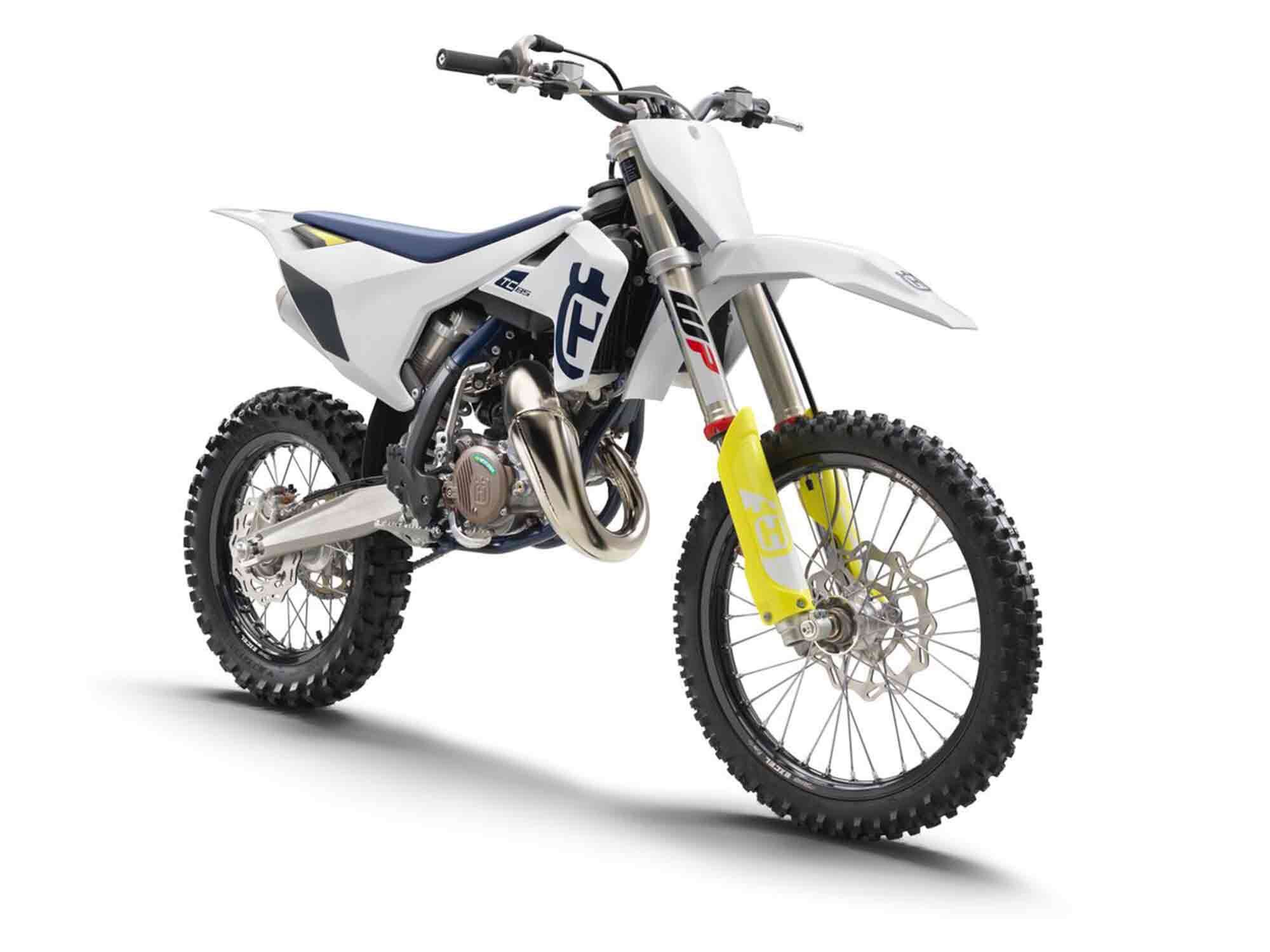
2020 Husqvarna TC 85 (Husqvarna/) 2020 Husqvarna TC 85 19/16 And 17/14 Claimed Specifications
Price: $6,299 (19/16)/$6,099 (17/14) Engine: Liquid-cooled single-cylinder two-stroke Displacement: 85cc Bore x Stroke: 47.0 x 49.0mm Horsepower: N/A Torque: N/A Transmission: 6-speed Final Drive: Chain Seat Height: 35.0 in. (19/16) / 33.5 in. (17/14) Rake: 24.0º Trail: N/A Front Suspension: 43mm inverted fork, fully adjustable; 10.9-in. travel Rear Suspension: Fully adjustable; 12.0-in. travel Front Tire: 70/100-19 (19/16) / 70/100-17 (17/14) Rear Tire: 90/100-16 (19/16) / 90/100-14 (17/14) Wheelbase: 50.8 in. Fuel Capacity: 1.4 gal. Dry Weight: 150 lb. (19/17) / 148 lb. (17/14) -
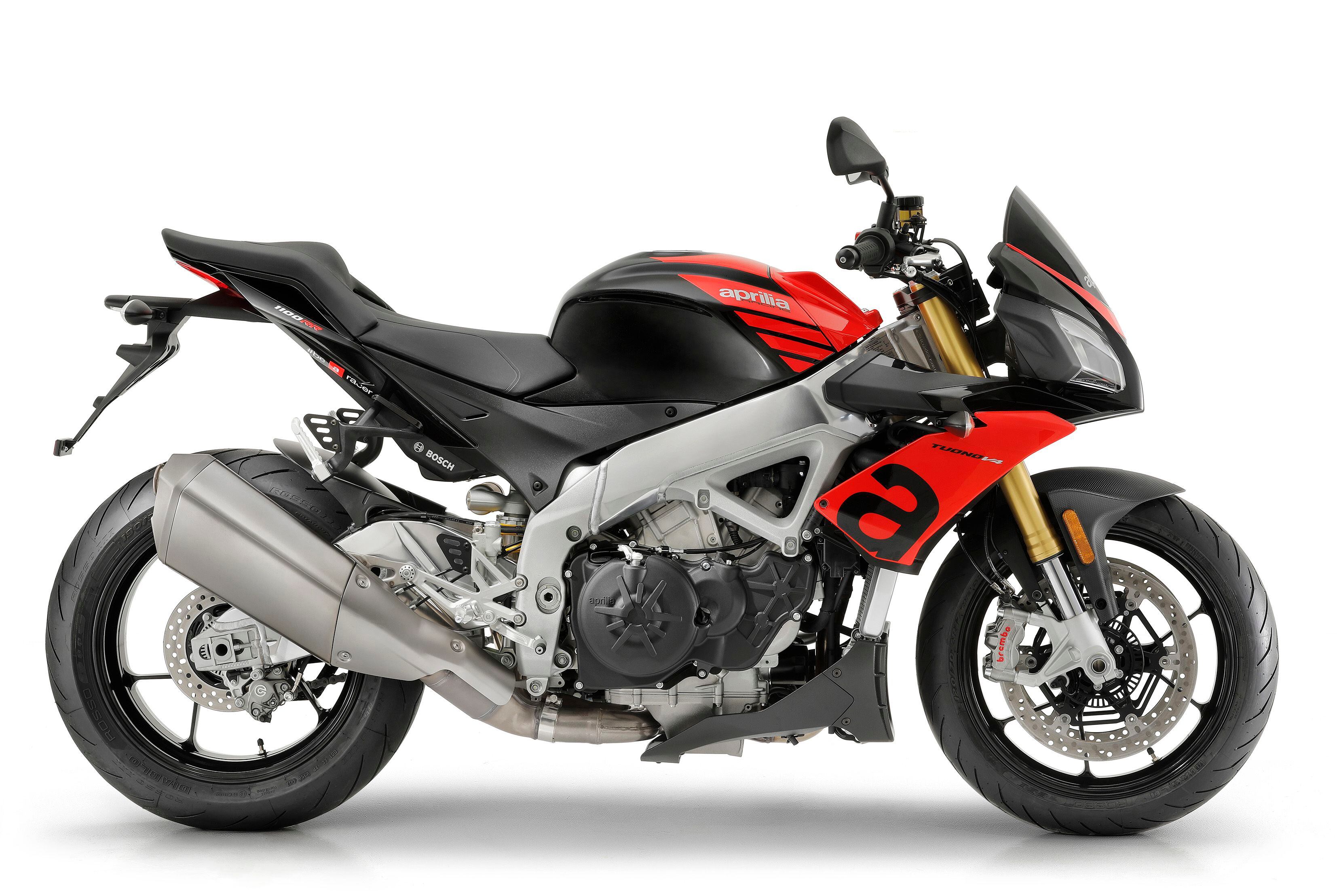
2020 Aprilia Tuono V4 1100 RR (Aprilia/) Make it light and make it fast. A combination of lightweight componentry whipped down the tarmac by a 1,077cc V-4 engine makes the Aprilia Tuono 1100 a pure adrenaline pumper. The Tuono’s connection to the venerable RSV4 open-class superbike is what elevated it above the competition a couple of years ago—staking a firm claim as Cycle World’s Best Standard for two consecutive years (2017 and 2018). With a suite of electronics, premium braking, top-shelf suspension, and cream-of-the-crop V-4, this naked sets the bar just barely in reach for the competition.
2020 Aprilia Tuono 1100 Factory/1100 RR Reviews, Comparisons, And Competition
The Tuono 1100 RR’s claim of the 2017 and 2018 Cycle World Best Standard Bike proves it can stand up to some fierce competition with a raucous V-4 engine, and when the throttle is whacked open “the Tuono V-4 is one of the most thrilling experiences in motorcycling.”
The Aprilia Tuono’s competition is right in its own backyard with the Ducati Streetfighter, but other standard bikes that serve a challenge include the Yamaha MT-10, BMW S 1000 R, and KTM 1290 Super Duke R.
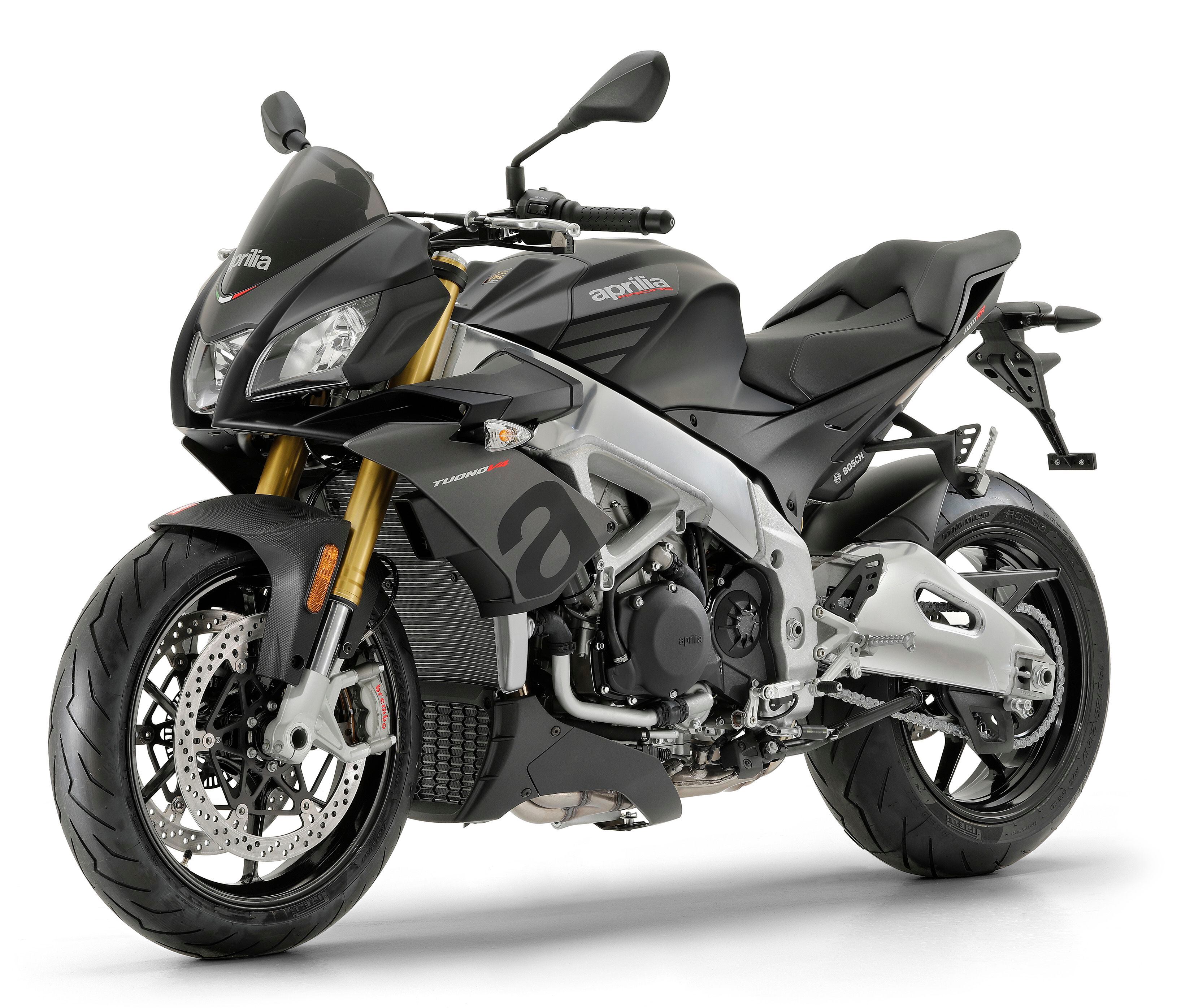
2020 Aprilia Tuono V4 1100 RR (Aprilia/) Aprilia Tuono 1100 Factory/1100 RR Updates For 2020
The 1100 Factory is an exclusive version of the Tuono with carbon fiber details and electronic Öhlins suspension (versus the Sachs suspension for the 1100 RR). There is even the ultra exclusive Aprilia Tuono V4 X, a rare track-only beast to drool over.
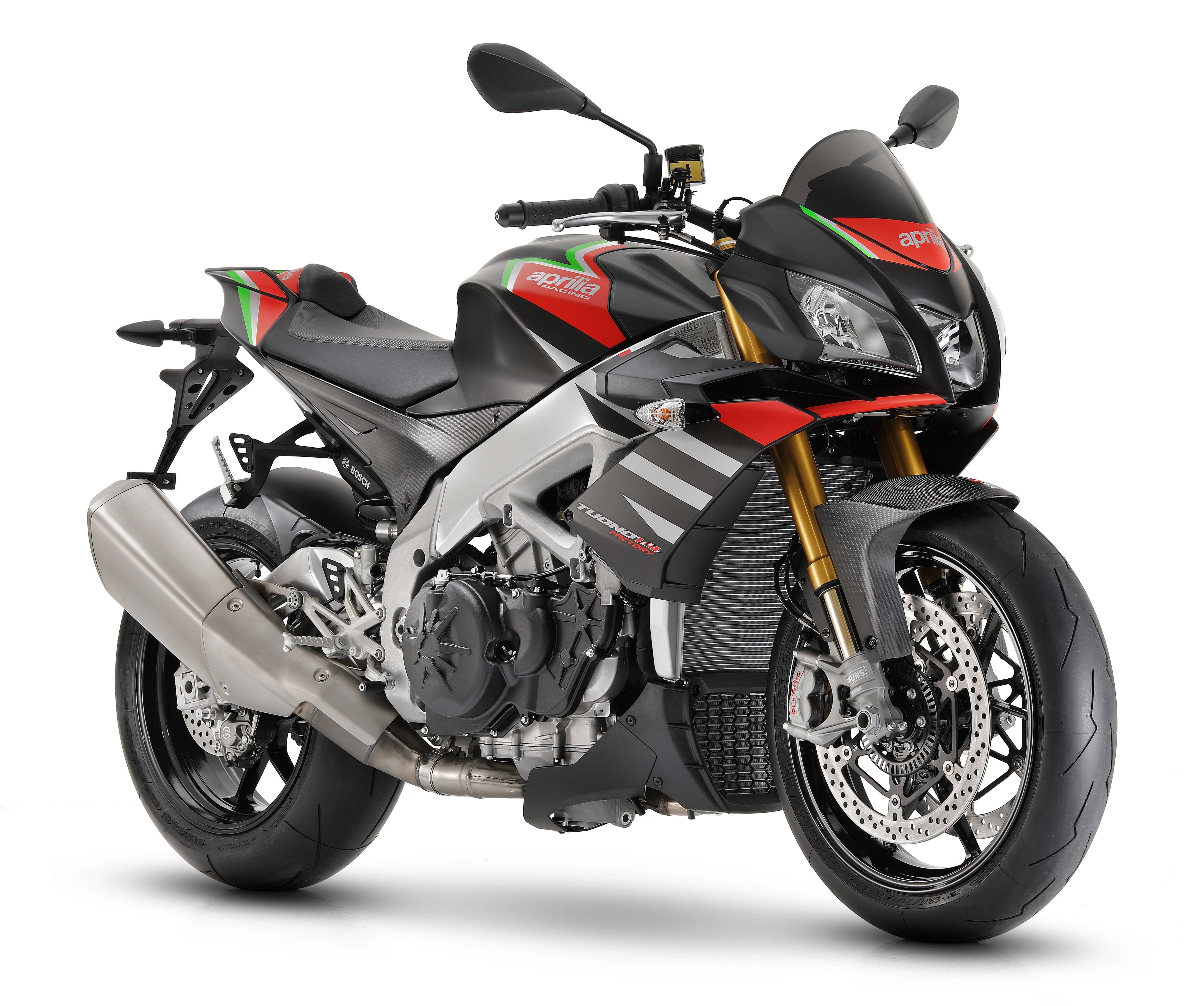
2020 Aprilia Tuono V4 1100 Factory (Aprilia/) 2020 Aprilia Tuono Factory/1100 RR Claimed Specifications
Price: $18,999 (base)/$15,499 (1100 RR) Engine: Liquid-cooled DOHC four-cylinder Displacement: 1,077cc Bore x Stroke: 81.0 x 52.3mm Horsepower: 175.0 hp @ 11,000 rpm Torque: 89.2 lb.-ft. @ 9,000 rpm Transmission: 6-speed Final Drive: Chain Seat Height: 32.5 in. Rake: 27.0° Trail: 3.9 in. Front Suspension: 43mm inverted fork, fully adjustable (1100 RR); 4.6-in. travel (1100 RR) Rear Suspension: Fully adjustable (1100 RR); 5.1-in. travel Front Tire: 120/70ZR-17 Rear Tire: 200/55ZR-17 (Factory)/190/55ZR-17 (1100 RR) Wheelbase: 57.1 in. (1100 RR) Fuel Capacity: 4.9 gal. Wet Weight: 461 lb. -
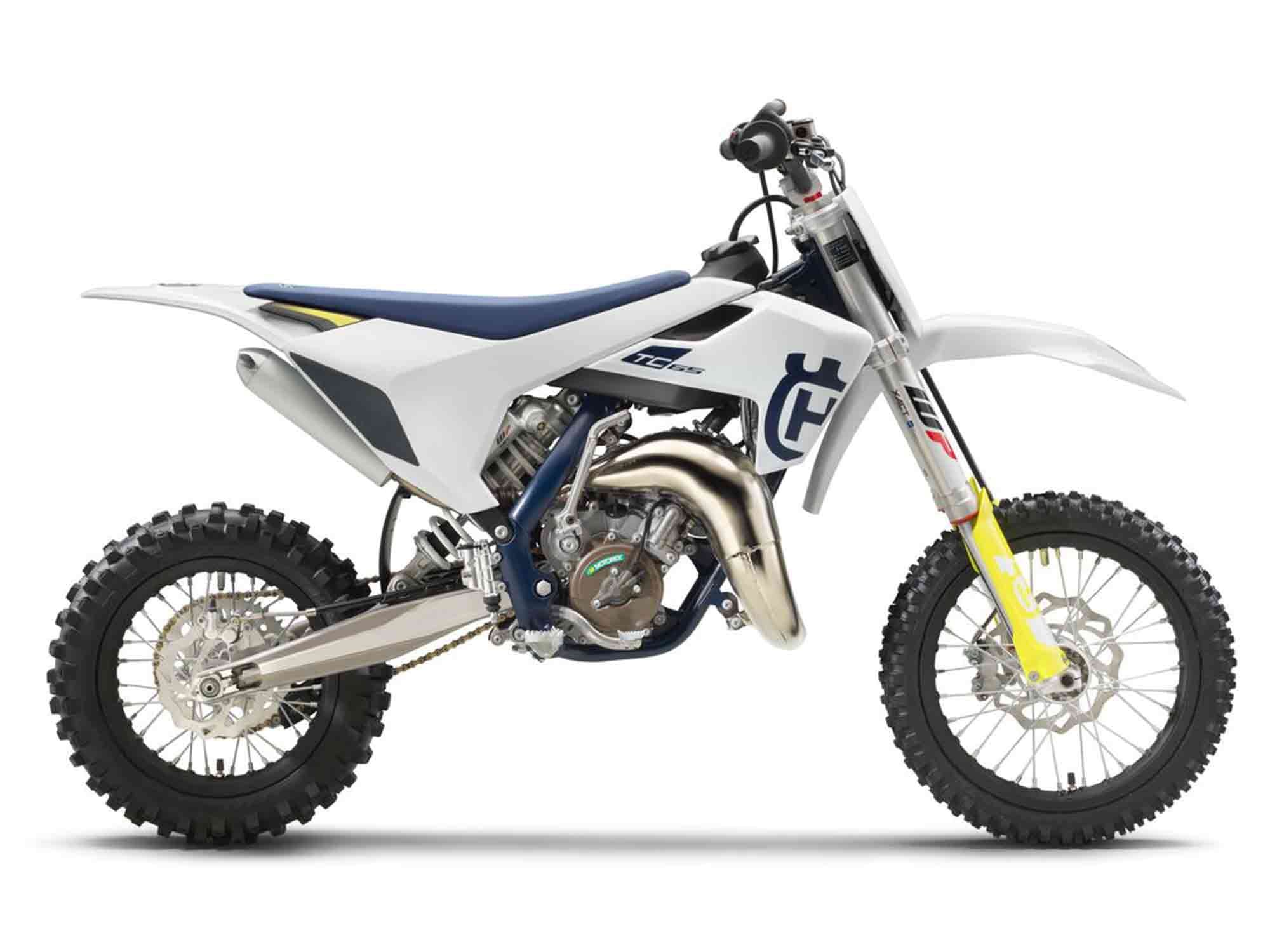
2020 Husqvarna TC 65 (Husqvarna/) Moving on up through the Husqvarna lineup is the TC 65. This motocross model is a steppingstone above the pint-size TC 50, but still focuses on enhancing the young riders’ skills. This is because, unlike the automatic clutch and 50cc engine of the TC 50, the rider will have to work a manual clutch and six-speed gearbox as well as modulate the throttle to control the more powerful 65cc two-stroke engine. Like the TC 50, however, the TC 65 is built for aspiring motocrossers with its stiff chrome-moly steel frame and adjustable WP suspension. Stopping power is done by the hydraulically operated brake caliper pinching on wave brake discs.
2020 Husqvarna TC 65 Reviews, Comparisons, And Competition
Other two-stroke 65cc dirt bikes suitable for the smaller motocrossers of the family include the KTM 65 SX, Kawasaki KX 65, and Yamaha YZ65.
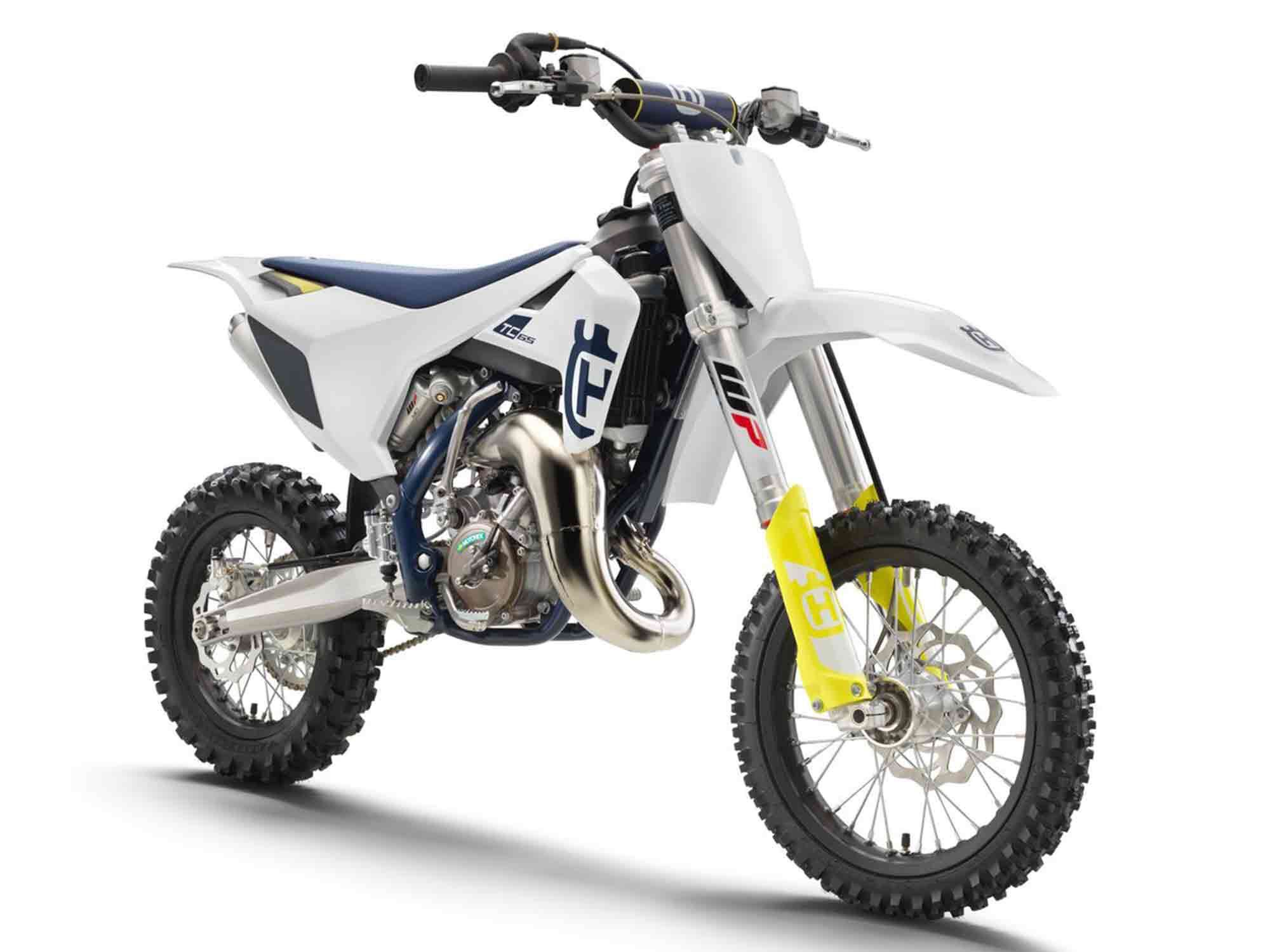
2020 Husqvarna TC 65 front right (Husqvarna/) Husqvarna TC 65 Updates For 2020
For 2020, the primary update for the TC 65 is new graphics.
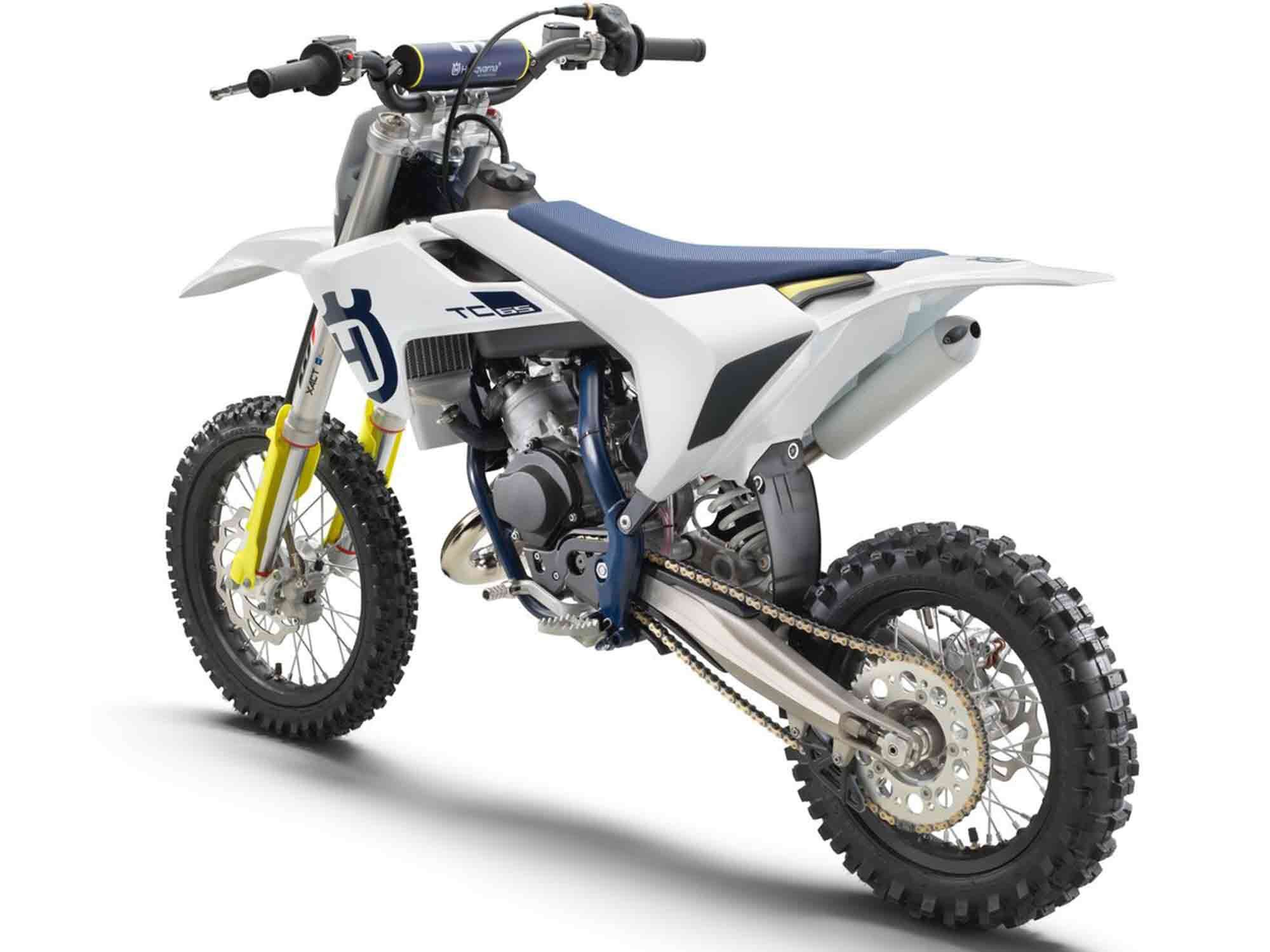
2020 Husqvarna TC 65 (Husqvarna/) 2020 Husqvarna TC 65 Claimed Specifications
Price: $5,149 Engine: Liquid-cooled single-cylinder two-stroke Displacement: 65cc Bore x Stroke: 45.0 x 40.8mm Horsepower: N/A Torque: N/A Transmission: 6-speed Final Drive: Chain Seat Height: 29.7 in. Rake: 25.5° Trail: N/A Front Suspension: 35mm inverted fork, preload and rebound adjustable; 8.5-in. travel Rear Suspension: Fully adjustable; 10.6-in. travel Front Tire: 60/100R-14 Rear Tire: 80/100R-12 Wheelbase: 44.8 in. Fuel Capacity: 1.0 gal. Dry Weight: 117 lb. -
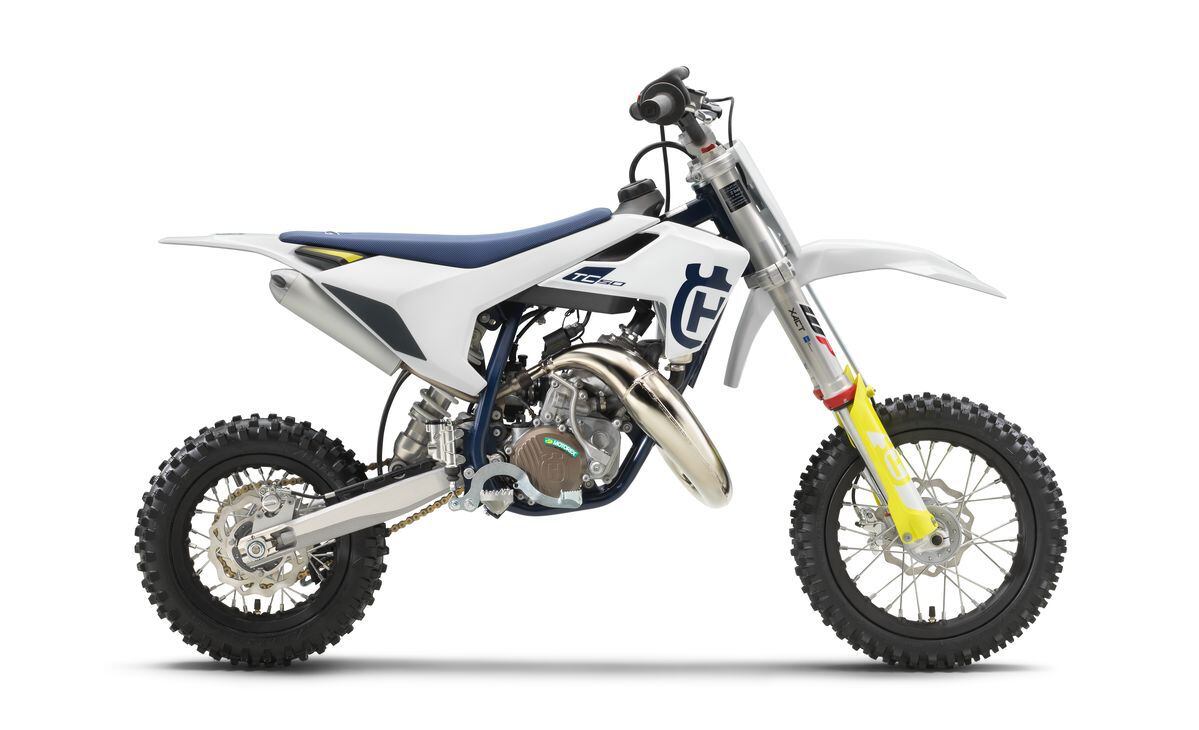
2020 Husqvarna TC 50 (Husqvarna/) Little riders have guts. When it comes to any kind of extreme sports they can be some of the most fearless out there, so it’s no wonder that there are mini motocross bikes like the Husqvarna TC 50 tailored to them. This dirt bike is powered by a 49cc two-stroke engine which is approachable and power-appropriate for the young riders. They can’t be expected to be the next Jason Anderson overnight, so a power reduction kit which reduces output to 5.5 hp is available. Further, a single-speed automatic transmission helps the rider focus on their riding without having to contemplate clutch work. WP suspension, Maxxis tires, a chrome-moly steel frame, and disc brakes are other features on the model.
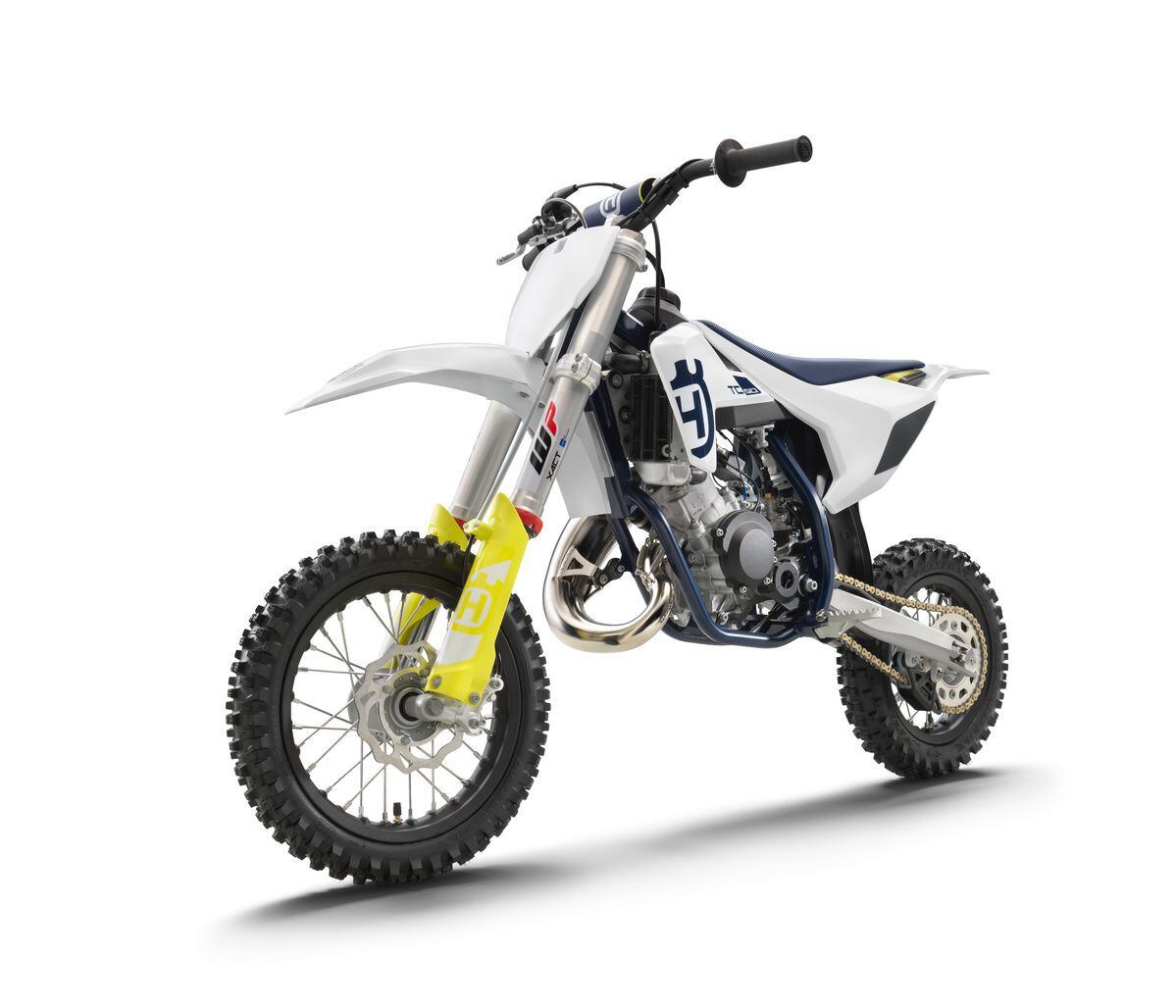
2020 Husqvarna TC 50 (Husqvarna/) 2020 Husqvarna TC 50 Reviews, Comparisons, And Competition
Competition for this small motocrosser is primarily found in the KTM 50 SX, although other trail-inclined 50cc models are available: Yamaha PW50 and TT-R50E, Honda CRF50F, and Suzuki DR-Z50.
Husqvarna TC 50 Updates For 2020
For 2020, the little Husky sees primary changes with the new cast aluminum swingarm and updated graphics. Like KTM’s 50 SX, this model also has a mini version for smaller riders.
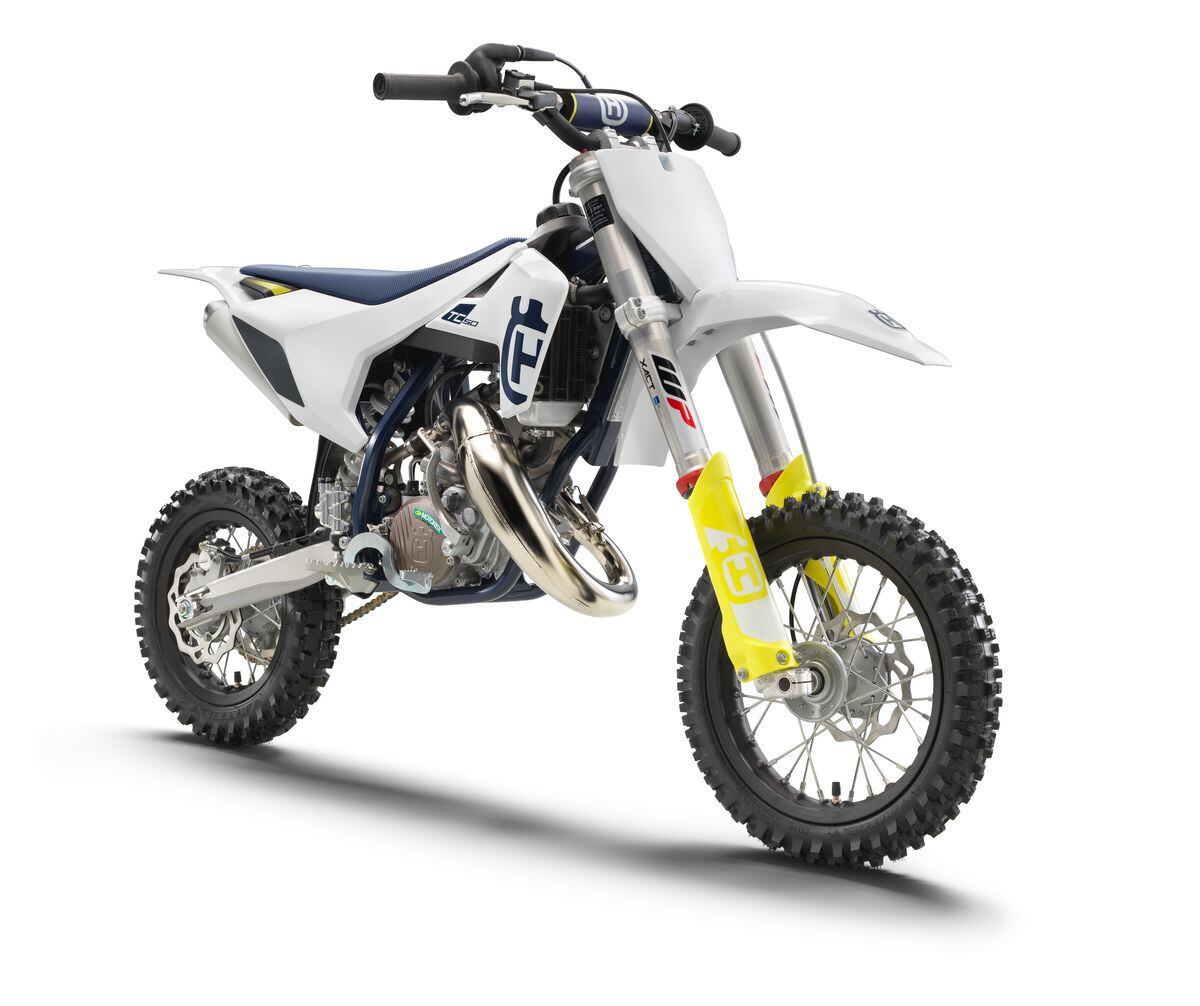
2020 Husqvarna TC 50 (Husqvarna/) 2020 Husqvarna TC 50 Claimed Specifications
Price: $4,349 Engine: Liquid-cooled single-cylinder two-stroke Displacement: 49cc Bore x Stroke: 39.5 x 40.0mm Horsepower: N/A Torque: N/A Transmission: 1-speed automatic Final Drive: Chain Seat Height: 26.2 in. Rake: 24.0° Trail: N/A Front Suspension: 35mm inverted fork, preload and rebound adjustable; 8.1-in. travel Rear Suspension: Fully adjustable; 7.3-in. travel Front Tire: 60/100-12 Rear Tire: 2.75x10 Wheelbase: 40.6 in. Fuel Capacity: 0.6 gal. Dry Weight: 92 lb. -
There’s something so attractive about the 2020 Triumph Street Twin’s simplicity. Sure, there are a number of killer motorcycles available that rule the spec sheets or ultra-focused areas of performance. But then there’s the Street Twin—an elementary modern classic motorcycle with a seriously engaging riding experience.
Highlighting the Street Twin’s ride is the smooth nature of its liquid-cooled, eight-valve, SOHC, 899cc parallel-twin engine with its 270-degree firing order. It was recently updated for the 2019 model year, receiving a lighter-weight crankshaft and redesigned balance shafts as well as a magnesium camshaft cover and lighter clutch cover. The real-world result is an engine that “delivers steady, usable power across its five gears with plenty of torque in the low midrange and a long-stretching fifth,” as Serena Bleeker said in her first ride review.

2020 Triumph Street Twin dyno (Robert Martin/) We ran the Street Twin on our in-house dyno to get the hard numbers. The Triumph produced 60.06 hp at 6,880 rpm and 55.60 pound-feet of torque at 3,730 rpm. What’s most remarkable is just how agreeable the curves are. That is, how incredibly linear the power curve is and how broad and flat the torque is, which offers the flexibility in delivery that Bleeker praised. There’s more than 50 pound-feet of torque available between roughly 2,750 rpm and 6,000 rpm. All in all, a sensible, friendly ride with classic good looks and wonderfully usable power.
-
Hello Sophie1206,
Welcome to The Motorbike forum. Please feel free to browse around and get to know the others. If you have any questions please don't hesitate to ask.
Why not tell us a bit about yourself too.
-
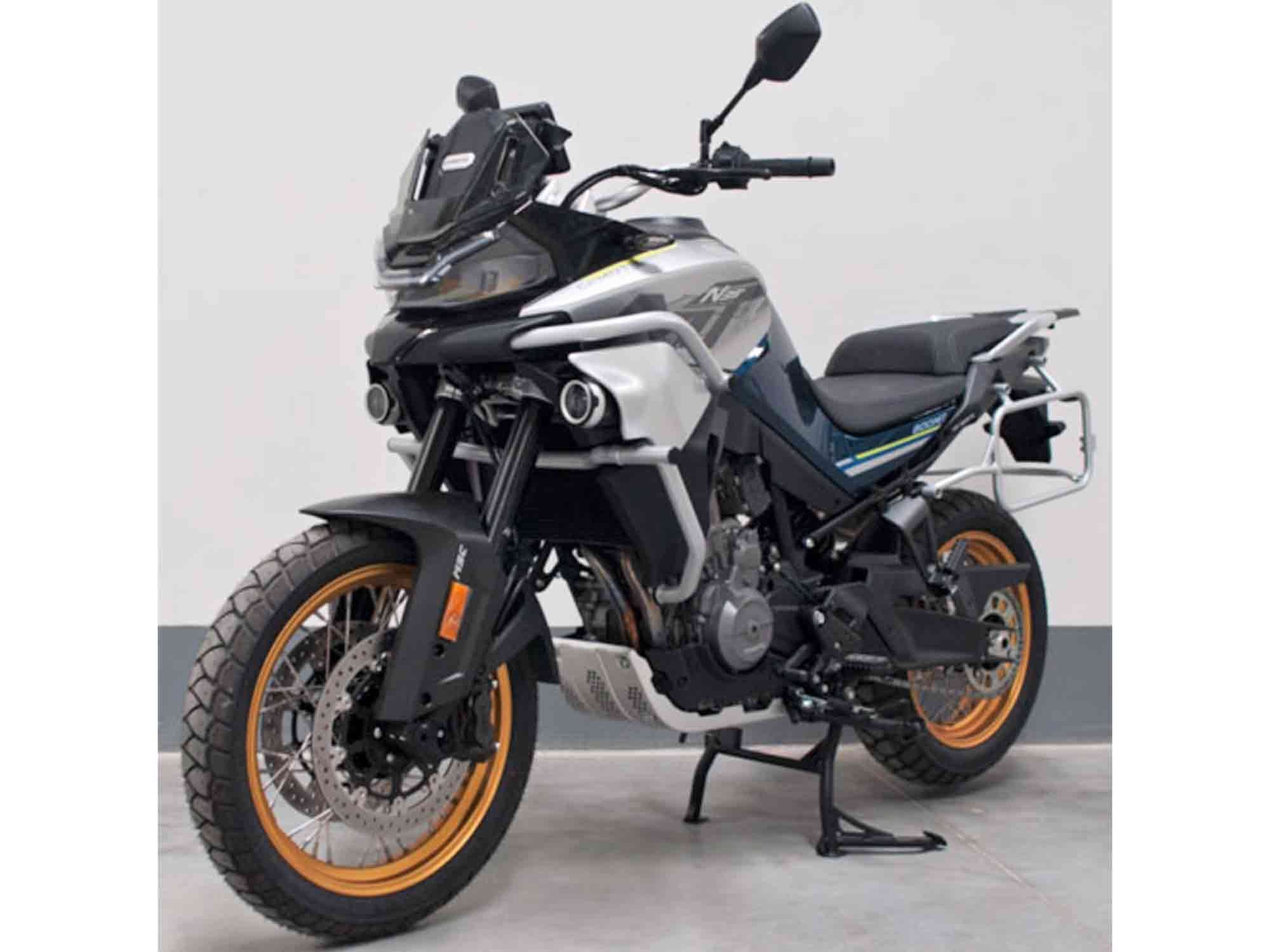
CFMoto’s new, soon-to-be-launched MT800 will come in two distinct variants, including this adventure-biased version. (CFMoto/) It might not be due for launch until early 2021 but details of CFMoto’s upcoming MT800 adventure bike have emerged early thanks to Chinese vehicle-approval paperwork that includes both photos and specifications of the new machine. For those with the idea that Chinese-made bikes are cheap and nasty, the MT800 looks like it could break some preconceptions. Not only does CFMoto already manufacture several KTM models, offered both in Asia and elsewhere, but it makes many of the engines that are destined for KTMs sold worldwide.
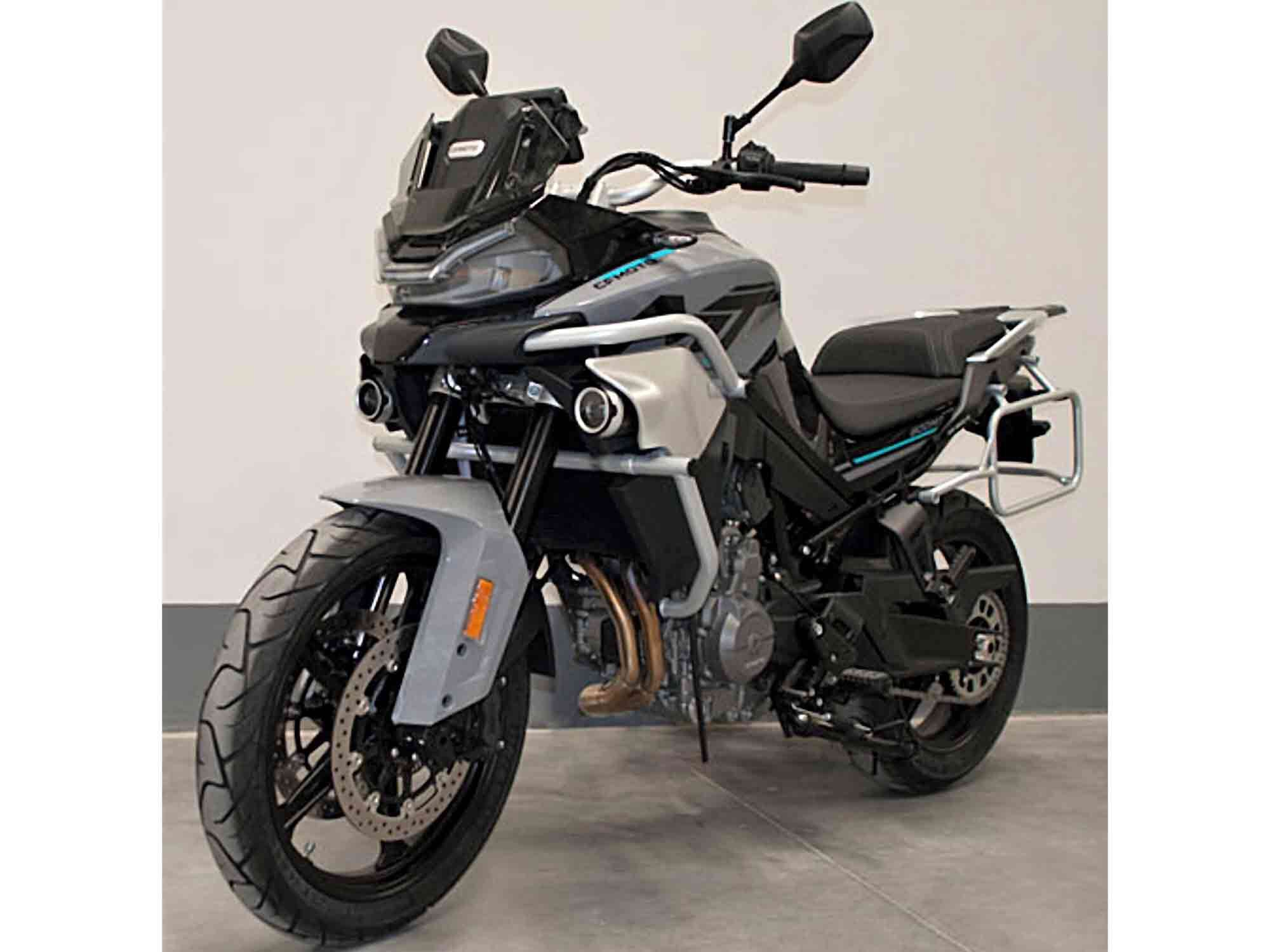
The more road-oriented trim features alloy wheels, but both models have the same KTM-sourced frame. (CFMoto/) KTM’s most recent investor presentation revealed there will be a “massive increase of cooperation level” with CFMoto in the months to come, and that cooperation starts with the MT800. The bike’s engine is the 799cc LC8c parallel twin that was previously used in KTM’s 790 Duke and 790 Adventure models. Both those bikes have become 889cc “890” machines now, leaving a space for the slightly less powerful CFMoto. The type-approval documents confirm that the MT800 makes 95 hp, the same as the old 790 Adventure. It’s enough to give the MT800 a rated top speed of 118 mph.
The frame also appears to be straight from the KTM 790, albeit with CFMoto’s own swingarm design. It appears to be a longer arm than KTM used, as the CFMoto’s wheelbase is longer than the 790 Adventure’s—rising from 59.4 inches to 60.3 inches.
While it’s not certain which markets the bike will be sold in at the moment, it’s worth noting the machines seen here wear Europe- and US-required elements like side reflectors on the fork—a clear indication the design has been created with global sales in mind.
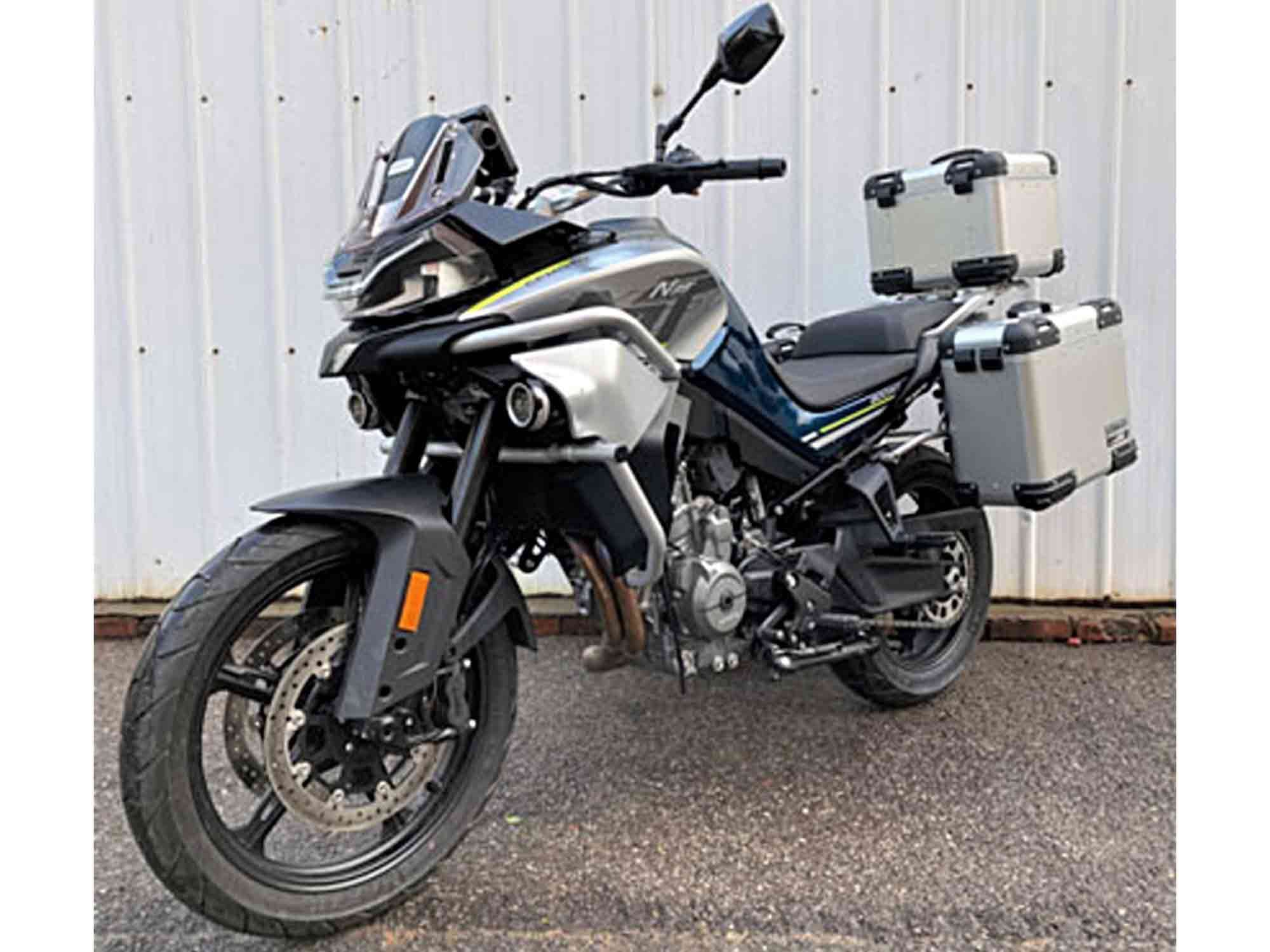
Both versions will have the option for fitting luggage; shown is the road version with bags. (CFMoto/) Although it’s an adventure-style bike, the MT800 doesn’t tread on KTM’s toes—it has a much more road-oriented design than the 790 or 890 Adventure. The wheels are smaller diameter, with a 19-inch front and 17-inch rear (the KTM wears 21-inch and 18-inch hoops, respectively), covered by 110/80 rubber at the front and a 150/70 at the back. It’s also a heavier machine, coming in at 509 pounds wet, or 529 pounds with the aluminum cases fitted.
Along with the luggage option, the bike will be sold in two distinct model variants. The more road-biased version features cast alloy wheels and has the lower section of the engine exposed, while the more adventurous model uses wire wheels—still the same size as the alloys—and has an aluminum bash plate to protect the exhaust and engine cases. The suspension and brakes on all versions are the same, including radial-mount calipers and Bosch 9.1MP ABS.
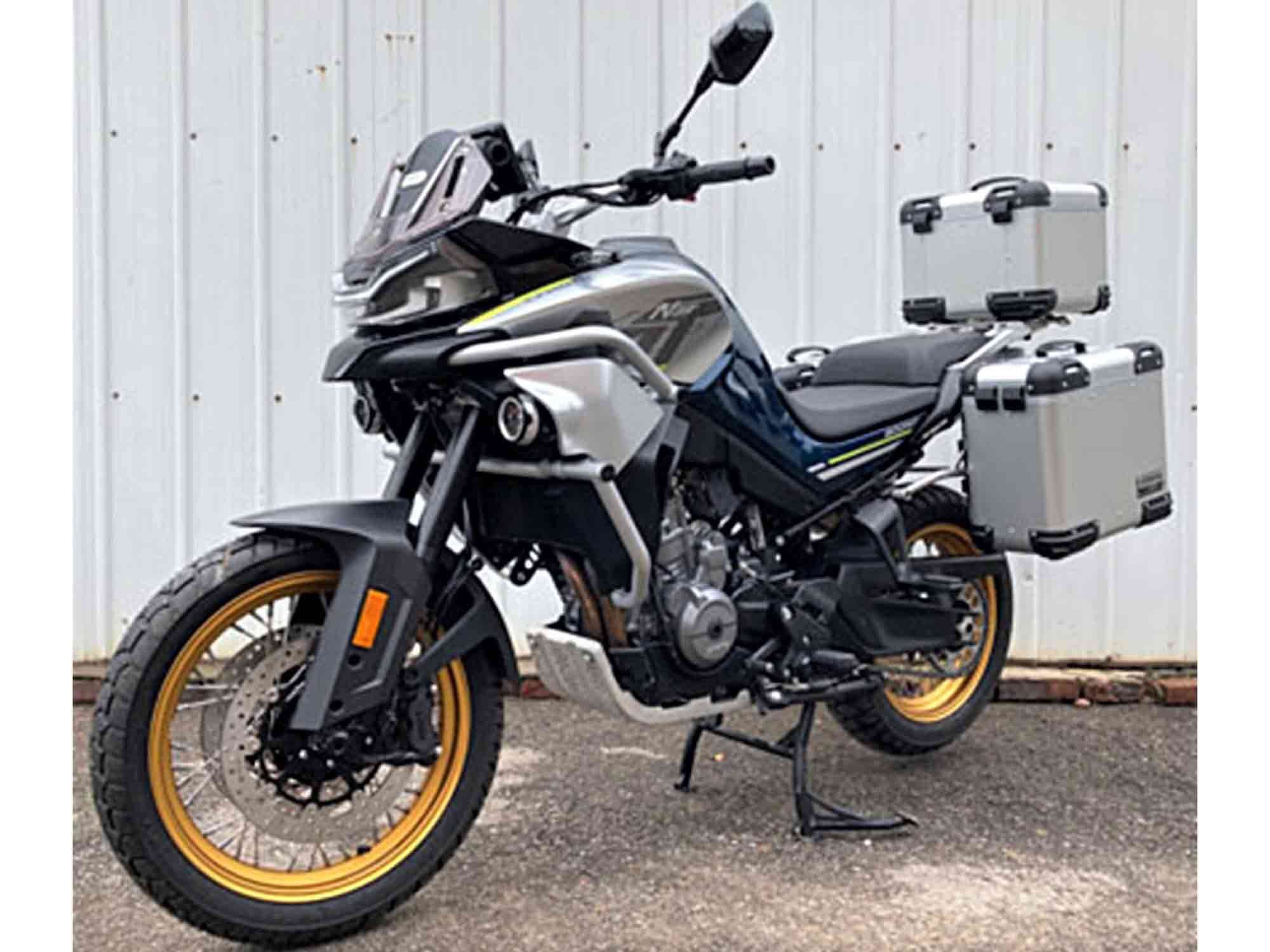
The adv-oriented model gets a skid plate and wire-spoked wheels, but otherwise looks very similar. (CFMoto/) The MT800 isn’t the only CFMoto/KTM-related model we should expect in months to come. The Chinese firm has already shown its 1250 tourer, which uses a highly modified version of KTM’s V-twin engine, and KTM’s investor presentation earlier this year said that CFMoto will be tasked with making a whole range of “750cc” KTM models for global markets, including a 750 Duke, 750 Adventure, and 750 Supermoto T.
It’s possible, and even likely, that the CFMoto-made “750” KTMs will actually use the same 799cc engine seen in the MT800, simply understating their capacity to distance the models from the Austrian-made 890 Duke and Adventure machines. It’s a trick BMW uses on the F 750 GS, which actually has the same 853cc capacity as the F 850 GS but is simply detuned to make less power.
-
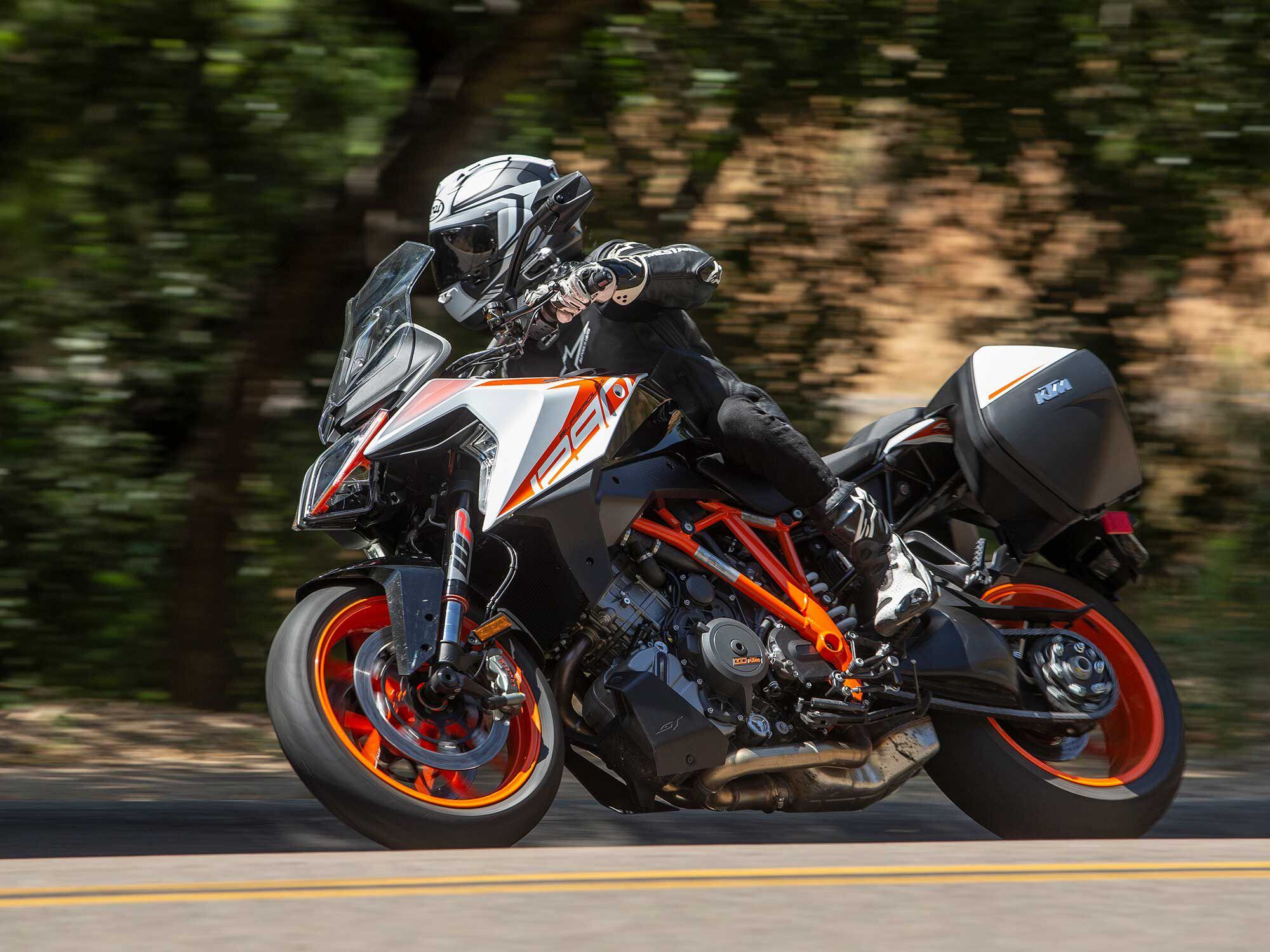
Paying attention to what the best riders are doing and then putting those techniques to use makes for a successful life in motorcycling. (Jeff Allen/) “It’s the Wild West out there,” the gentleman commented. His assignment was to establish a rider-training direction for a group of riders, and his comment referred to what he had seen and heard during his monthslong, nationwide research. The information he gathered was wildly divergent and bewildering.
And it could be bewildering to new riders too. At Champ School we often introduce riders to techniques that are directly opposite of what they previously learned or understood. Straight-line braking versus trail-braking, for instance. What is best and safest? Notice that I didn’t ask, “Who is right?”
Industry growth based on improved rider safety through best-practices techniques isn’t a who’s-right or who’s-wrong question, or at least it shouldn’t be. We should all be interested in pursuing excellence on two wheels because mistakes can be devastating to a person and industry. As the gentleman referred to in the first line soon learned, there were a wide variety of techniques being taught and some made little sense outside the parking lot. How does a rider discern best and the rest? Should our industry move to determine best practices in rider training or continue with the Wild West?
Best and Safest
Best riding practices must equate to safest riding practices and makes sense when we add, “…at the pace you choose.” Safest at the pace you choose. That means a curriculum must provide safety at the pace the students choose; it can’t just work for riders who never accelerate. As the pace increases, the safety margins shrink and the technique choices narrow.
RELATED: Motorcycle Lessons Beyond the Classroom
RELATED: Getting Ready to Stop Beyond The Classroom Part 2
As a riding instructor I have learned to teach to the highest level I can imagine, whether that’s a Superbike in the rain with the TC fuse blown or a downhill right-hand corner that tightens and you’re in too quick with your daughter on the back. Maybe you pop over the hill and traffic is stopped; maybe the road is freshly graveled; maybe it’s your first trackday and it’s raining. How about when you leave the dealership on your new tires and it’s 36 degrees, or if a deer jumps the guardrail… You get the picture. I’m not teaching for who the rider is today or even for the venue we currently inhabit—I’m teaching for the time when everything counts.
Question No. 1: What’s the Leader Doing?
New riders will receive a lot of advice, almost all given in good faith. A litmus test for any advice is to see if that approach is being used to win roadracing championships or create high-mileage veteran street riders. Notice I didn’t write “used in roadracing” or “employed by street riders’' because we must be much more specific about who is using the technique.
A roadracing champion has the ability to ride consistently quickly, sometimes less than one-second-per-lap more quickly than their competitors, but consistently so. We should care what they’re doing and how they’re doing it. If advice we are given isn’t being used by the racers at the front, file that advice further down the priority level and keep looking for answers. We don’t care what most riders do, we care what the best riders do.
A high-mileage veteran street rider has seen a lot and survived through approaches that should be imitated. Poor techniques don’t stand the test of time and miles, so advice from a casual, part-time street rider should be taken with the knowledge that time and miles have not yet tested that approach.
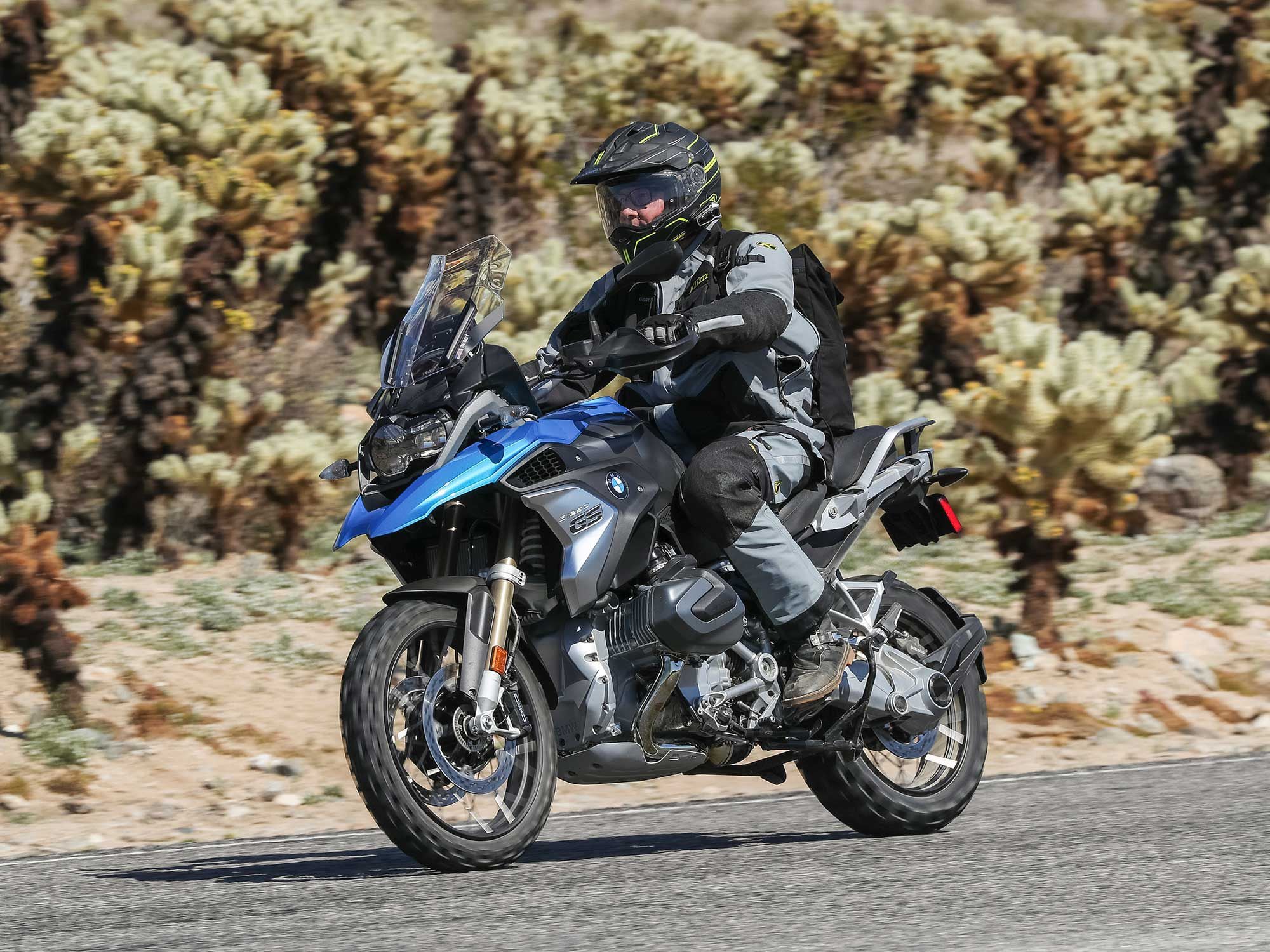
Street riders should look to high-mileage veterans—poor practices don’t stand the test of time. (BMW Motorrad/) Successful people learn from other successful people—you have done that all your life. Employ this approach in your riding and be sure to test advice against this simple question: Is this what the best are doing?
Question No. 2: Does That Make Sense?
You’re a 16-year-old at a new-rider school and the instructor stands next to their gigantic motorcycle with 40 years of riding experience and tells you what to do. You do it—you’re a kid and they’re an expert. But while doing it, ask yourself this basic question: Does that make sense?
RELATED: Motorcycle Lessons Beyond the Classroom, Part 3
RELATED: Motorcycle Lessons Beyond the Classroom, Part 4
If it doesn’t make sense to you, raise your hand and ask more questions. The instructor’s explanation (and hopefully their demonstration) will enlighten you to the correctness of the technique, or show you that the technique is not well thought out. It could be a curriculum problem, a communication problem, or an understanding problem. But it’s a problem. Store that problem in your mind and search elsewhere for answers. There are answers.
In my opinion, the endeavor of riding a motorcycle is extremely straightforward and logical. It’s not easy, but it’s simple. It isn’t a mystery or dark art or voodoo science known only to a few in the club. In your search for answers, the truth will hit you strongly—it’s that logical. When you hear something that doesn’t make sense, ask questions and get explanations; if it fails to become truth, keep looking.
Question No. 3: Have You Examined a Motorcycle and a Top Rider?
We look at the pair of relatively narrow tires and realize traction wouldn’t be difficult to lose if we’re abrupt. We note the suspension travel and see that the suspension must get loaded before the tire gets loaded. We look at pictures of bikes braking and accelerating and see the vast difference in tire contact patches between the two actions. Because of this loading, we know that using the front brake and the throttle at the same time is a recipe for disaster.
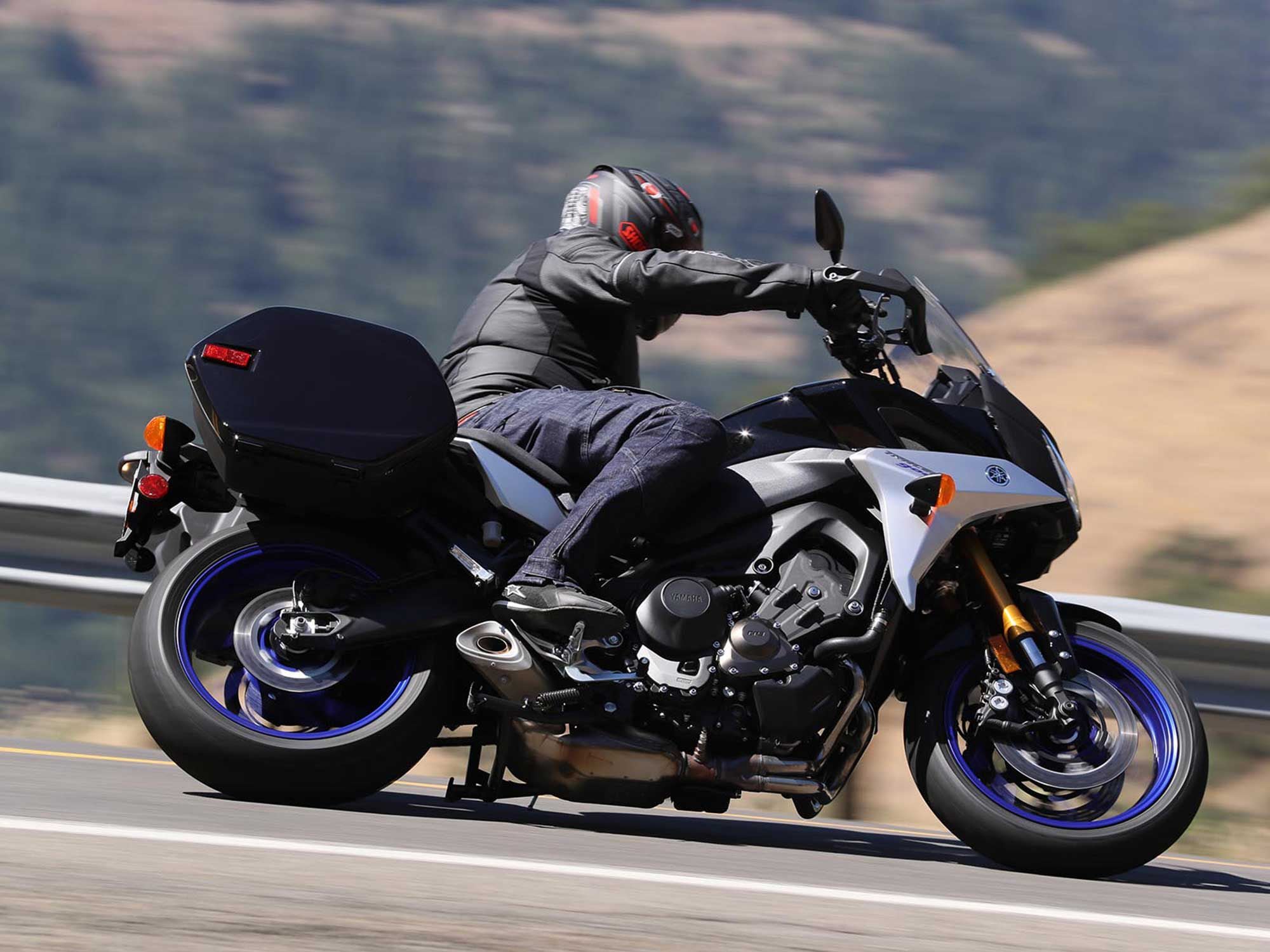
Look at the front suspension as the rider enters the turn—it’s loaded so that the tire can be loaded. The rider is smooth in their actions and is trailing off the brakes as the lean angle increases. (Brian J. Nelson/) Pictures show us the importance of lean angle and we remember how we steer our bicycles, with bar pressure. We see our racing heroes with their weight to the inside of the bike and try that too. During onboard footage we hear the gentle throttle initiation of the best riders and realize that the announcer saying, “He grabs a handful of throttle!” is wrong. We listen and learn that acceleration can safely increase only when the bike stands up off the corner and know that our friend is wrong when he says, “accelerate through the corner.” We see the riders’ fitness and focus on TV. We see how clean the machines are at the front of our local club races.
RELATED: Motorcycle Lessons Beyond the Classroom, Part 5
RELATED: Motorcycle Lessons Beyond the Classroom, Part 6
We see the high-mileage veterans in full gear, head to toe. The reliance on their bikes brings almost religious maintenance. They don’t beat on their tools (bikes) with burnouts, wheelies, neutral revving. They are one with their bikes as they cover great swaths of the country in single sittings. They are calm, focused, and gentle, with bike mods aimed at making the joy of mile eating more comfortable and pleasurable.
Watching the onboard brake and throttle graphs in MotoGP we see how top riders trail-brake pressure into corners; how finely that red brake graph reduces pressure; and how gingerly the green throttle graph begins. We see how even current champions go out for every minute of practice; we realize how technically they approach the sport, sorting through problems that hurt lap times or cause crashes.
Stop. Look and truly see. In this study, a study which requires only you and the skills of observation, you can build your riding expertise by skipping over the disasters that await riders with unproven approaches.
Whether you are examining your favorite roadracing champion or a high-mileage veteran rider you respect, you will find that they ask a single common question: “Will these techniques work consistently at the pace I choose?” Those who don’t work hard to positively answer that question have quit riding or will never win a championship.
As an industry, our ability to provide a positive answer to this question is one of the steps to increased growth; new riders become lifelong riders with a toolbox full of proven best practices.
More next Week!
-
Hello Jamespodge,
Welcome to The Motorbike forum. Please feel free to browse around and get to know the others. If you have any questions please don't hesitate to ask.
Why not tell us a bit about yourself too.
-
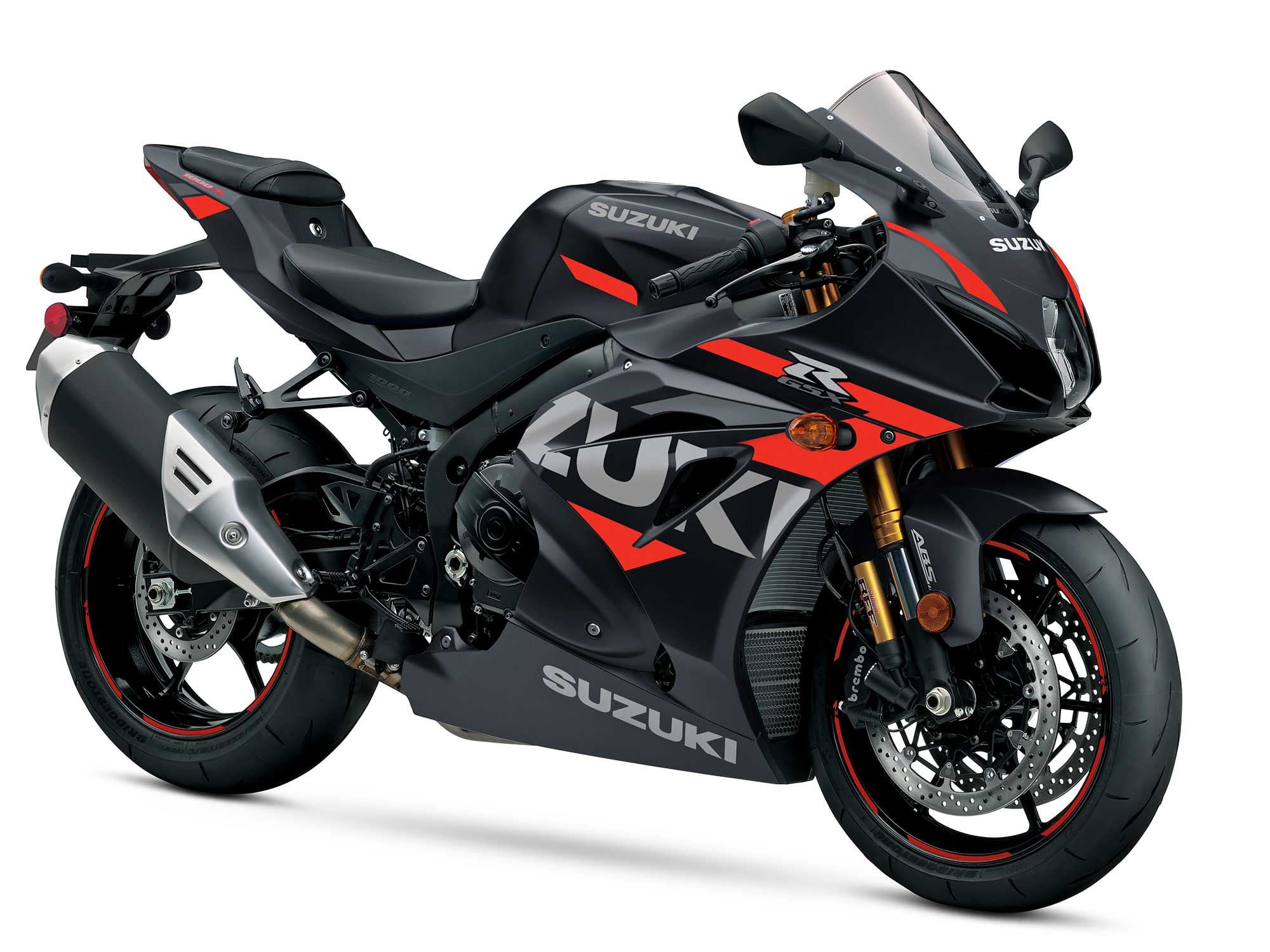
The 2021 Suzuki GSX-R1000R. (Suzuki/) Well, we’ll have to wait another year at least for news of a revitalized Suzuki lineup, as the Hamamatsu brand announces bold new graphics for a number of models in its GSX-R, GSX-S, and V-Strom lineups.
Here’s the rundown before we commiserate about another new year without a new GSX-R.
The top-end 2021 GSX-R1000R ($17,749) is available in two variations of metallic black. The GSX-R750 ($12,549) returns for its 10th model year with no changes other than graphics. Yup, it’s been around since 2011: Casy Stoner was MotoGP world champ, Marc Márquez was in his first season of Moto2, and Joan Mir was probably prepubescent. For 2021, the GSX-R1000R, GSX-R750, and GSX-R600 are also available in a special 100th Anniversary livery that resembles the look of GSX-RR MotoGP bike (the base-model GSX-R1000 does not get the anniversary treatment). The GSX-S750Z is available in an ABS version ($8,899) and a standard version ($8,499), each with their own dedicated color schemes. The V-Strom 650XT Adventure ($10,449), which includes bits from the accessory catalog, like panniers and an accessory bar, joins the V-Strom 650XT ($9,349). The Adventure version is available in Champion Yellow No. 2, while the base version is available in Candy Daring Red and Glass Sparkle Black.
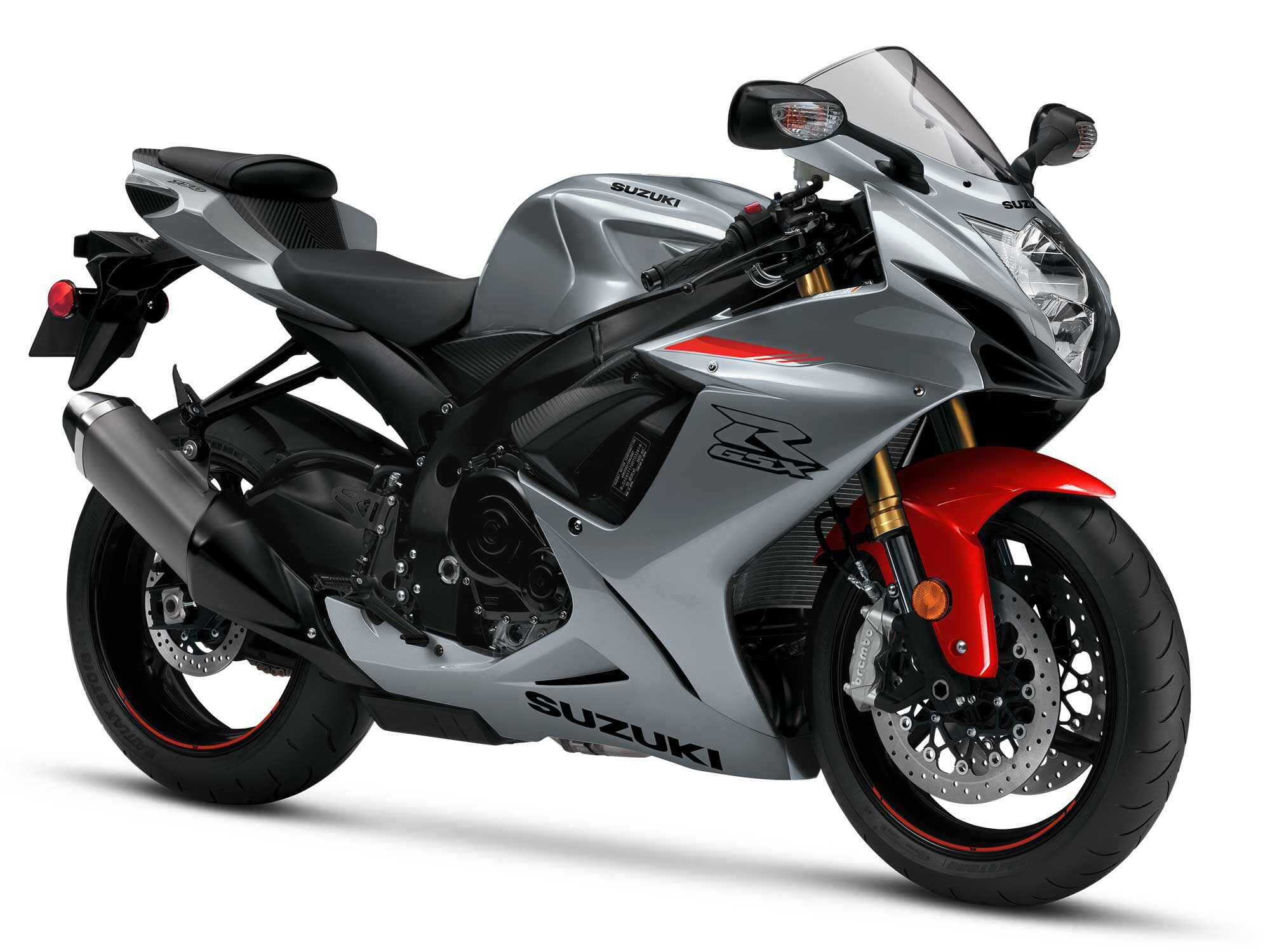
The 2021 GSX-R750 looks familiar, huh? Suzuki surely knows a 10-year-old design does a disservice to its legacy. You just know there’s a contingency inside the factory chomping at the bit to build a new one. Give them the money! (Suzuki/) Unfortunately, it’s difficult to imagine new graphics will be enough to woo a throng of new buyers.
In other ways, it’s been a big year for Suzuki. Joan Mir earned the Hamamatsu brand the MotoGP rider’s championship for the first time in the four-stroke era. The last time Suzuki won the championship was in 2000 with Kenny Roberts Jr. aboard the RGV500. The same year, Mat Mladin won the Daytona 200 on the GSX-R750 and his second of an eventual seven AMA superbike titles.
Suzuki’s production motorcycles of the time were no less exciting than the on-track action. The outgoing SRAD GSX-R750 was updated for 2000, dropping 27 pounds, and reaffirming its reputation as a best-of-both-worlds bike by producing literbike levels of horsepower while weighing as little as a 600cc supersport. A year later, Suzuki released the first GSX-R1000.
Because of a speedy two-year development cycle, lessons learned in racing were manifested in production machines in no time flat. All that racetrack success really meant something to sportbike buyers—it captured our hearts. These days, it’s hard to imagine Joan Mir’s achievement will have the same effect on Suzuki’s aging lineup—it won’t for 2021, anyway.
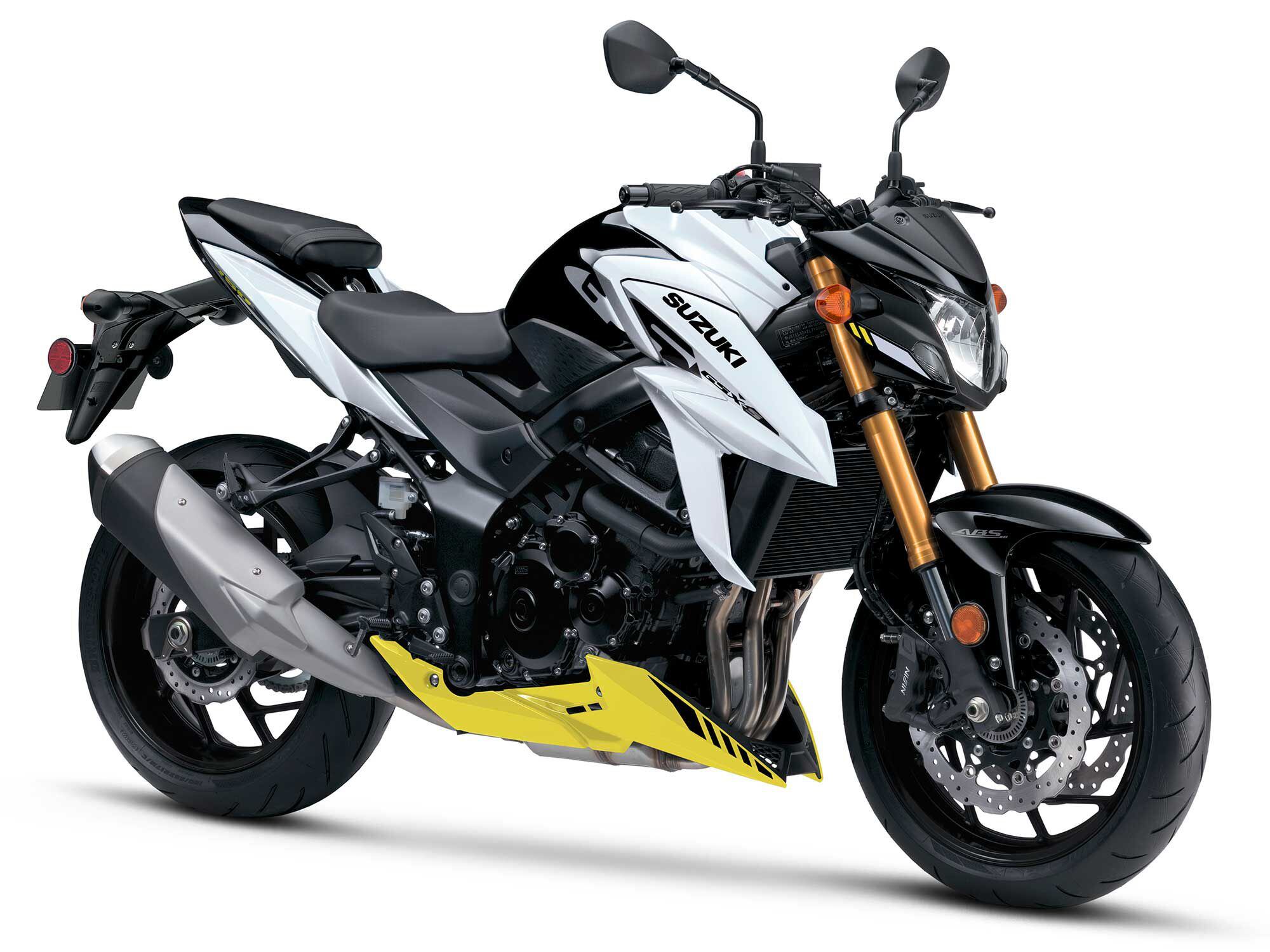
GSX-S750Z ABS. Anyone else seen leftover KTM 790 Dukes for sale at the same price? Yeah, me too. (Suzuki/) Call me naive, but I’m a firm believer in the Field of Dreams model when it comes to motorcycle development—”if you build it, they will come.” I’m sure it’s a tough sell to convince the higher-ups to spend big bucks to develop a new GSX-R750 when the current one isn’t exactly selling like hotcakes. It’s a reliable, capable bike, but that’s beside the point.
Reliability, real-world capability, and perceived value may appeal to human rationality, but those qualities are ultimately compelling only if we assume a cognitive model of human identity that overlooks our true essence. We aren’t merely thinkers or believers. Above all, humans are desiring creatures.
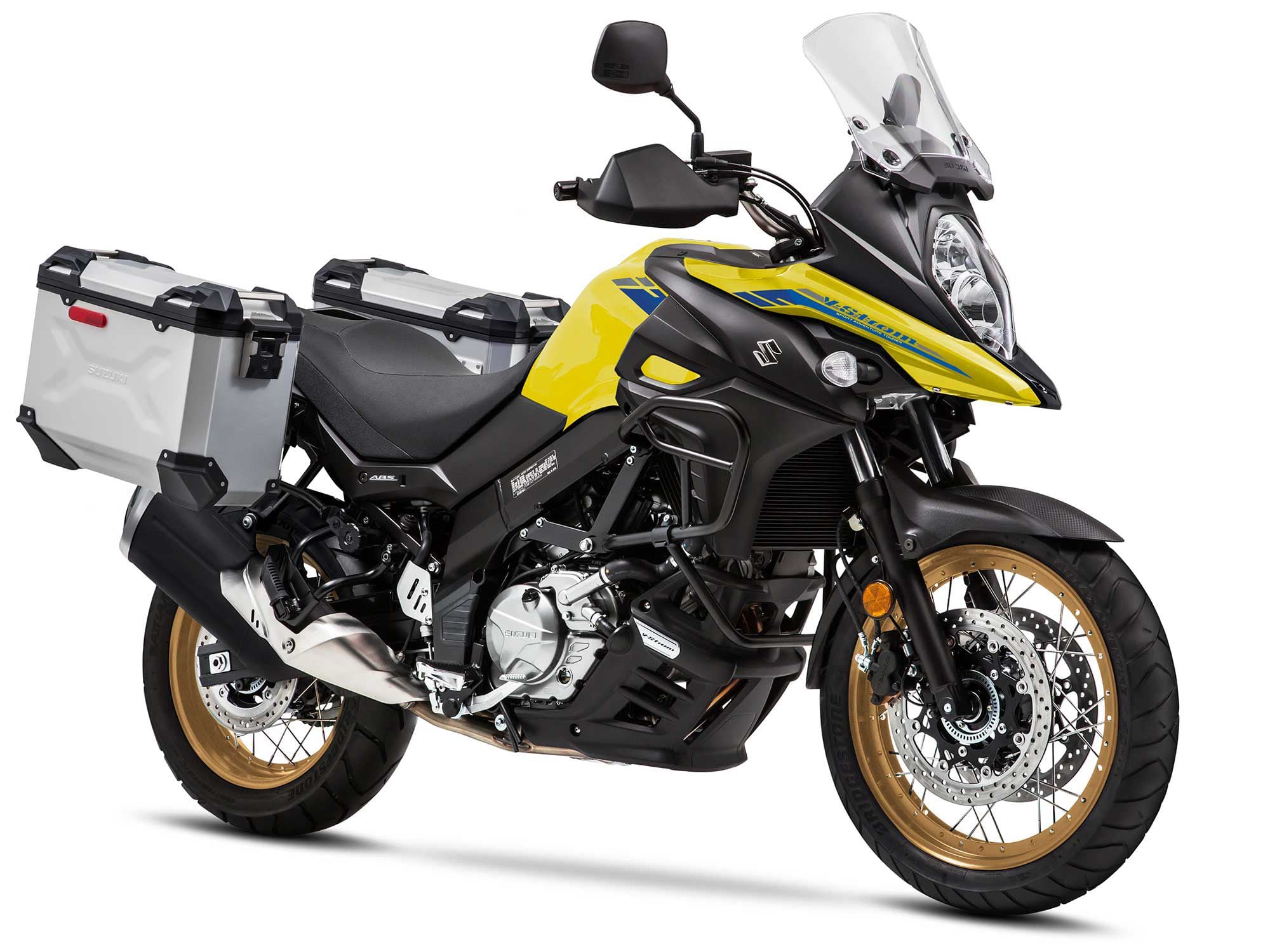
The Wee-Strom returns in 2021 with V-Strom 1050 graphics. (Suzuki/) Nowhere is that more apparent than in the habits of the average motorcycle buyer. Most motorcyclists buy motorcycles with their hearts. Few people need a motorcycle (although we all have told our families we do). So the biggest problem with Suzuki’s Bold New Graphics roll-out is that the bikes aren’t anything we haven’t already fallen in love with—and subsequently moved on from. We’re still talking about the glory days of two decades ago because the narrative is affecting at the gut level. We long for the new glory days. We long for new ways to daydream, and for new ways to blow our hard-earned cash.
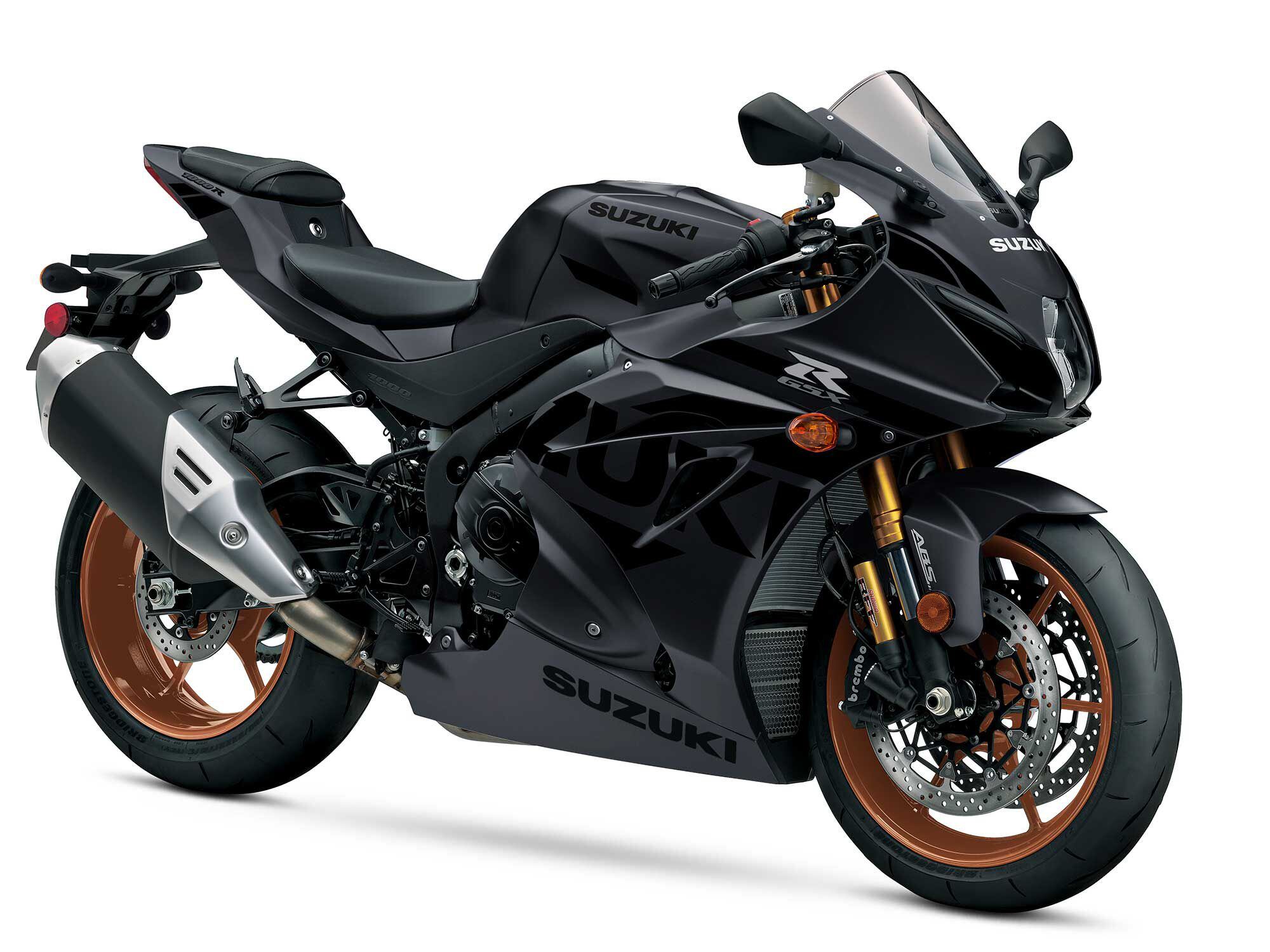
Blacked-out GSX-R1000R looks good, though brings to mind the wadded rattle-can-painted gixxer you see so often at bike night. (Suzuki/) Right now, maybe the best thing you can say about Suzuki’s lineup is that it’s sensible. But dropping a wad of cash on a motorcycle isn’t a sensible act in the first place, so for a lot of consumers, sensible may not cut it. We want to want a new Suzuki. While evidence of a new middleweight parallel twin (possibly to replace a V-Strom 650 and/or SV) is heartening, hopefully Suzuki will sell enough Jimny 4x4s to consider padding the budget for the geniuses over in GSX-R land as well. The proof that all it needs to do is move some money around in order to give us the GSX-R we all want is that Joan Mir is 2020 MotoGP World Champion. It’s a good place to start, anyway.

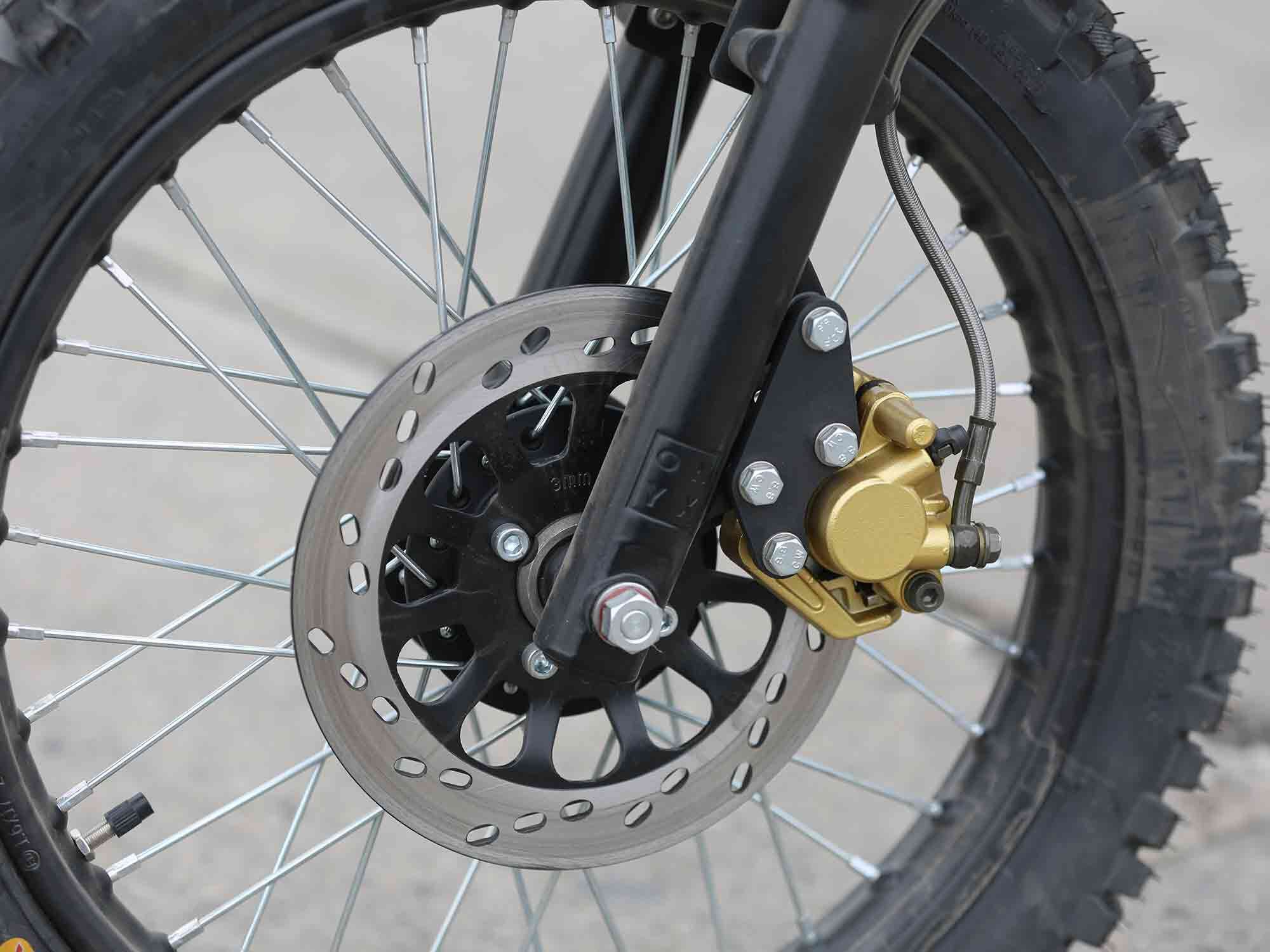
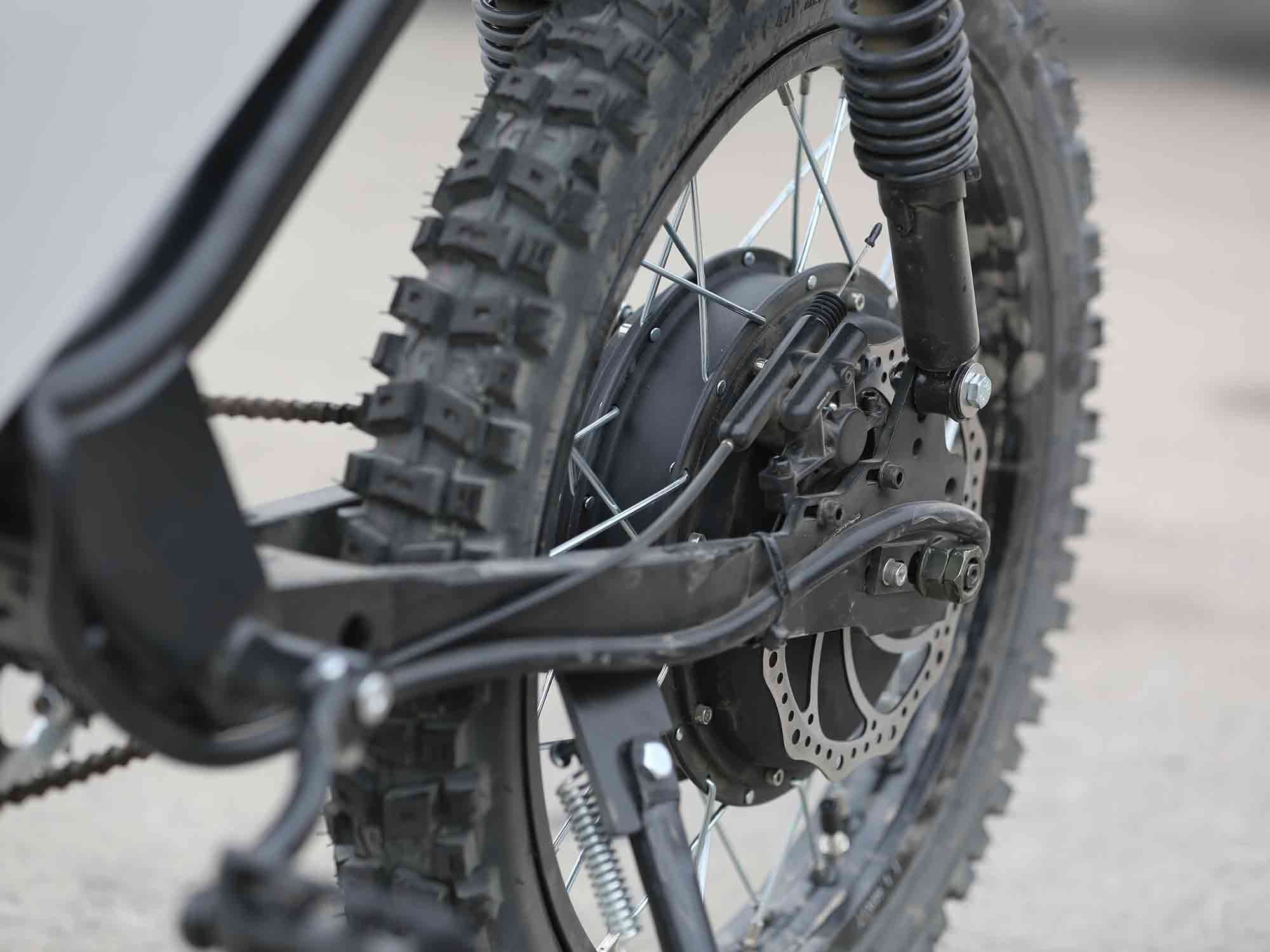
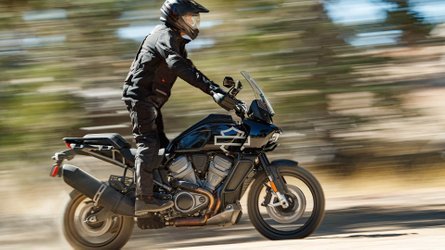
Cycle World Ten Best Bikes 2020
in Motorbike news
Posted
Just about the time manufacturers figured out basic electronic ignitions and how to keep oil inside engine and transmission cases, there’s been an ongoing chorus of “bikes are so good these days, you can just pick your favorite color.” Not true, never has been. Motorcycles are amazingly good, but product differentiation, improved technology, tightened regulations, and the ever-moving line of excellence mean there are always discernible differences and meaningful “bests.”
These 10 bikes are just the latest examples of how far we’ve come, and when you compare them to where we were even five years ago, it’s clear there is no end to improvements in performance, safety, and fun.
2020 BEST MIDDLEWEIGHT STREETBIKE: KTM 890 Duke R
Leave it to KTM to continuously “evolutionize” its platforms in search of perfection. Case in point: the KTM 890 Duke R. Only a short year after introducing the 790 Duke, the Austrians upgraded the middleweight Duke, making it lighter, faster, and more adjustable. The result is a well-balanced motorcycle with a fun factor of 11.
And despite taking Best Middleweight Streetbike honors, the KTM 890 Duke R is so much more than just a streetbike. The Duke blends the lines of everyday, civilized rideability with the Austrian’s unruly motard heritage and a punch of performance that will turn heads at the racetrack. Seriously. The torquey nature and immediate acceleration of its 889cc parallel twin, excellent-feeling WP Apex suspension components, Brembo brakes, state-of-the-art electronics package, and nimble chassis add a flavor that’s unfamiliar to its competitors.
Road or racetrack, the KTM 890 Duke R guarantees a helluva good time.
2020 BEST OPEN-CLASS STREETBIKE: Triumph Speed Twin
It could have been that moment late on a spring day when a staffer left the office to see the Speed Twin backlit by the setting sun, the great fiery ball actually framed by the motorcycle, that this bike cemented itself in our hearts and minds. “What?” you ask. Yes, the sun was shining right through the Triumph Speed Twin, framed by induction systems, cylinders, the transmission, and side covers because there is a beautiful airy hole there. It was an overwhelmingly perfect way to experience the classic British twin’s lines and stance.
But as much as we like looking at the Speed Twin, riding it is substantially more satisfying. Triumph’s 270-degree, 1,200cc parallel twin gives the bike a moving sound, which is backed up by 91 hp and 80 pound-feet of torque delivered through a slick six-speed gearbox. It doesn’t hurt that this is essentially a Thruxton chassis, which gives handling a sweet edge that livens up the bike in an enticing way. OK, so the thin seat does bum out the backside a bit, but the overall ergonomics are super comfortable. The Speed Twin is so much more than just a retro-inspired nostalgia trip; it is an exceptional big-bore motorcycle you’ll want to ride every day.
2020 BEST SUPERBIKE: Ducati Superleggera V4
There are a lot of things to be impressed about with production open-class superbikes, and even more so with homologation-special racing models, but the Ducati Superleggera V4 is something extra special. It’s an Italian purebred built with a focus strictly on outright performance, completely unfettered by anything so arbitrary as racing regulations. Its focus on pure excellence extends to all the titanium and carbon fiber you can stand.
“Superleggera” translates to “super light.” And there’s not much else you need to know. Ducati claims that the Superleggera V4 is a featherweight 335.5 pounds—that’s with an empty fuel tank, drained of necessary oil, and also a missing battery. Still, that’s quite an impressive number. Pair that with the claimed 234 hp in racing-kit form, and you’ll know Ducati means business.
But performance numbers only mean so much, and what makes the Superleggera so impressive is its rideability. The Superleggera is dripping in top-shelf components, MotoGP-derived electronics, and usable performance. Oh, and biplane aerodynamic wings off of Ducati’s Desmosedici GP16 MotoGP racer. But premium products come at a premium price tag. Each bike costs $100,000, and only 500 were made.
Just as we have the dream of owning one to shoot for, so can other manufacturers dream of one day competing with the Superleggera.
2020 BEST ENDURO/DUAL SPORT: Beta 500 RR-S
The dual-sport spectrum is wide these days. Over there on the mellow side, you can get yourself a soft-suspension, air-cooled couch that will reliably soldier on through most terrain, if you’re into that sort of thing. And then waaaaaay over there on the other end is this red-and-white flamethrower of pure, explosive racebike—and, oh, here are some lights hung on it. Leave it to the Italians to deliver a bike like this Beta 500 RR-S with so much corsa and just casually throw some street gear at the bike to see if it will stick like so much spaghetti. It’s this Italian manufacturer’s first appearance on Cycle World’s Ten Best list, and it comes thanks to a major overhaul that included a new engine, a redesigned frame, and updated suspension.
Its 478cc DOHC single produces 47 hp on Cycle World’s in-house dyno, which is a remarkable 6.7 more horsepower than its nearest competitor. Having a more aggressive engine character than its opponents contributes to the Beta’s racebike feel. Additionally, the engine’s abundance of usable torque makes the Italian machine more controllable and easy to ride a gear high when the situation calls for it. If there was ever a friendly flamethrower, this is it.
ZF Sachs suspension provides a somewhat firm yet progressive feel throughout the stroke. Both ends are supple enough for technical terrain, but maintain a sufficient amount of holdup when speeds increase. The bike is narrow, the seat is hard, and the ergonomics are aggressive, and even though the 500 RR-S weighs as much as 10 pounds more than its hardcore competition, you’d never know by how easy it is to maneuver.
The Beta 500 RR-S takes the prize for its single-minded desire to shred. If Ducati ever built a race-focused dual sport bike inspired by MotoGP, it would be a lot like this.
2020 BEST STANDARD: Triumph Scrambler 1200 XC
The Triumph Scrambler 1200 XC has us feeling all nostalgic. No, not for some vague idea about riding a parallel-twin sled in the desert with Bud Ekins and Steve McQueen in the ’60s, but for the time in early spring 2020 when we were exploring beautiful California back roads on five of the finest, most stylish standard bikes ever made. In fact, it was during that comparison test when the ultra-fine balance of the Triumph Scrambler proved itself, topping a very tough field over many, many inspirational miles of testing.
It turns out the Scrambler ethic perfectly expresses itself as a standard motorcycle, bringing huge flexibility and a sense of fun to a comfortable motorcycle of great utility. The XC’s suspension travel, slightly shorter than its off-roadier brother, the XE, makes for a lower seat height and easier overall “engagement,” if you will. But you still get awesome dirt-road chops so you can do the unstandard thing of throwing up a dust cloud in mountains, desert, or forest. Or across that dirt lot you see on your daily commute. So willing, so fun, so comfortable—so Best Standard.
2020 BEST ADVENTURE BIKE: KTM 790 Adventure R
In the year following its introduction and being named to the Ten Best list with zero argument, the 2020 KTM 790 Adventure R has retained the title of Best Adventure Bike. Despite several new middleweight adventure models being introduced this year, the KTM 790 Adventure R tops the competition again.
Excellent handling and comfortable ergonomics work together in any situation—on or off road, sitting or standing. The low center of gravity and mass centralization achieved by the low-slung fuel tank and compact 799cc parallel twin give the 790 Adventure R lightning-quick response to rider inputs while remaining stable in rough terrain. The 9.5-inch-travel Xplor suspension eats big and small terrain unlike any other adventure motorcycle on the market, allowing for more control in all conditions and for higher speeds off road. Through all this, and the rally DNA you feel in every riding situation, the 790 Adventure R continues to dominate the middleweight class with more of nearly everything, though it does come at a premium price of $13,699. But if you want to play, this is the best way to pay—by rolling out of the dealer fully equipped. And we’d open our wallets every time for this midsize KTM ADV.
2020 BEST CRUISER: Indian Challenger
Style and tradition drive desire in the cruiser market. Yes, we want more power, higher technology, and innovative gadgets, or even touchscreens and rider aids, but it better be dressed up in fringe and conchos, and delivered with a distinctly American twang. OK, so we don’t need fringe or conchos specifically, but you get the idea; it’s got to make us think red, white, and blue, even if it’s flat black. So, as the market asks for more performance from what amounts to a 1940s silhouette, what do manufacturers do? Well, if the manufacturer is Indian, it stuffs near-Gold Wing-level performance and technology in a classic bagger silhouette and calls it the 2020 Indian Challenger.
At the Challenger’s core is Indian’s new PowerPlus 108 engine that cranks 103.1 hp and 113.1 pound-feet of torque on the Cycle World dyno. The inverted fork, Fox monoshock, and Brembo braking system all work together to deliver an excellent balance of smooth riding, connected feel, and remarkable stability, whether you’re on the highway or carving through canyons. The sound system is loud and clear, the TFT touchscreen is bright and easily navigated, storage is ample, and ergonomics are well-tuned. For roughly the same price as the competition, the Challenger has more to offer in nearly every category.
2020 BEST LIGHTWEIGHT STREETBIKE: Kawasaki Z400
It’s no fluke that Kawasaki has taken the class crown two years in a row with the same platform—scratch that, three years, if you include the full-faired Ninja 400. But the Z400 rightfully owns the title. This naked(ish) streetbike is easily approachable for less-experienced riders, but also packs an entertainment value that few other under-500cc bikes possess, and will cause an ear-to-ear grin no matter how many miles you have under your belt.
The compact 399cc parallel-twin engine produces 44 peak horsepower on our in-house dyno, but output is highlighted by a broad, flat torque curve. Meaning? Power delivery is extra-smooth and rider-friendly. To make it better, the Z400 comes equipped with ABS, a comfortable upright riding position, relatively low 30.9-inch seat height, and nimble chassis, not to mention the $4,999 suggested retail price. Did we mention it’s approachable?
2020 BEST TOURING BIKE: Honda Gold Wing Tour DCT Automatic
Freedom to roam is right at the heart of why we ride motorcycles. That makes it pretty easy to pick the Honda Gold Wing as the Best Touring Bike of 2020. Of course, touring bikes in general, from adventure to sport to luxury, fit the roaming bill. But what makes this Gold Wing different is the absolute ease of use and movement it provides in nearly every setting. The Tour model (with top trunk) and DCT (fully automatic or push-button seven-speed transmission) put this winning Gold Wing firmly in no-competition territory.
If you have a religious affiliation with manual gearboxes, shift on, brothers and sisters, but we are here to tell you DCT is amazing, and it works with the Wing’s remarkable fingertip steering, compliant, controlled ride, and smooth-yet-growly 1,833cc flat-six that is happy ripping through the Rockies or traversing Texas in a single whack. The eagerness of this full-rig luxury touring bike to do exactly what you want is the real appeal here. Its overall high function entices you to ride all the time, everywhere, and the pure joy in efficient motion offers a kind of freedom that very few motorcycles ever made have done.
2020 BEST MOTOCROSS BIKE: Kawasaki KX450
Defending a title is said to be more difficult than winning it in the first place, but that’s exactly what the Kawasaki KX450 accomplished this year by taking its second consecutive Best Motocrosser award.
What helped it maintain its glorious victory? Start with an engine that provides a plentitude (yes, we said plentitude) of power combined with quick throttle response and phenomenal hydraulic clutch. This makes it easy to ride in any part of the powerband. Add in the KX450′s Showa 49mm coil-spring fork and Showa shock, which lean slightly more toward plushness rather than outright berm-slamming performance, and you have a chassis that is comfortable and easy to ride hard.
That excellent, beautifully damped suspension is holding up Kawasaki’s latest-generation aluminum chassis, which is designed to provide torsional rigidity to keep the bike tracking true, allied with just enough longitudinal flex to act as a kind of additional bump absorption when the track gets rough. Narrowness in the radiator shrouds, midsection, and number-plate area, and a flat seat help facilitate rider movement. In the most extreme and powerful class of motocrossers, the KX’s super-strong all-around performance outshines the competition.
View the full article